The time has come to gather all observations. The TCL P7K / P79K is a television that cleverly juggles compromises, offering much more in its price range than we could have expected. Its undeniable asset is the VA panel, guaranteeing deep blacks and high contrast, and the surprisingly rich package for gamers (with VRR and support for 120 Hz at lower resolutions) makes it a phenomenal proposition for console owners. The whole is tied together by the functional Google TV system. Of course, the low peak brightness means that HDR content lacks spectacular bursts, and the TV's performance in sunlit rooms is limited. And although, at its relatively low price, the P7K / P79K is quite a decent option, its biggest rival turns out to be… its more refined sibling, the P8K. Often, FOR a small additional payment, we get a device of a higher class – with a native 4K 144 Hz panel, significantly better audio system, and generally higher quality of operation, which is reflected in its much higher rating on our portal. Therefore, the final verdict must be as follows: if your budget is absolutely non-negotiable, the P7K / P79K will be a good and cost-effective choice. However, if you can afford to add a small amount, the P8K model will offer significantly more and will ultimately be a more satisfying investment.
- Matching (Score)
- Our verdict
- TV appearance
- Where to buy
- Contrast and black detail
- HDR effect quality
- Factory color reproduction
- Color reproduction after calibration
- Smoothness of tonal transitions
- Image scaling and smoothness of tonal transitions
- Blur and motion smoothness
- Console compatibility and gaming features
- Input lag
- Compatibility with PC
- Viewing angles
- TV efficiency during daytime
- Details about the matrix
- TV features
- Apps
- Playing files from USB
- Sound
TCL P7K / P79K vs Samsung Q8F
Direct compare
P7K / P79K
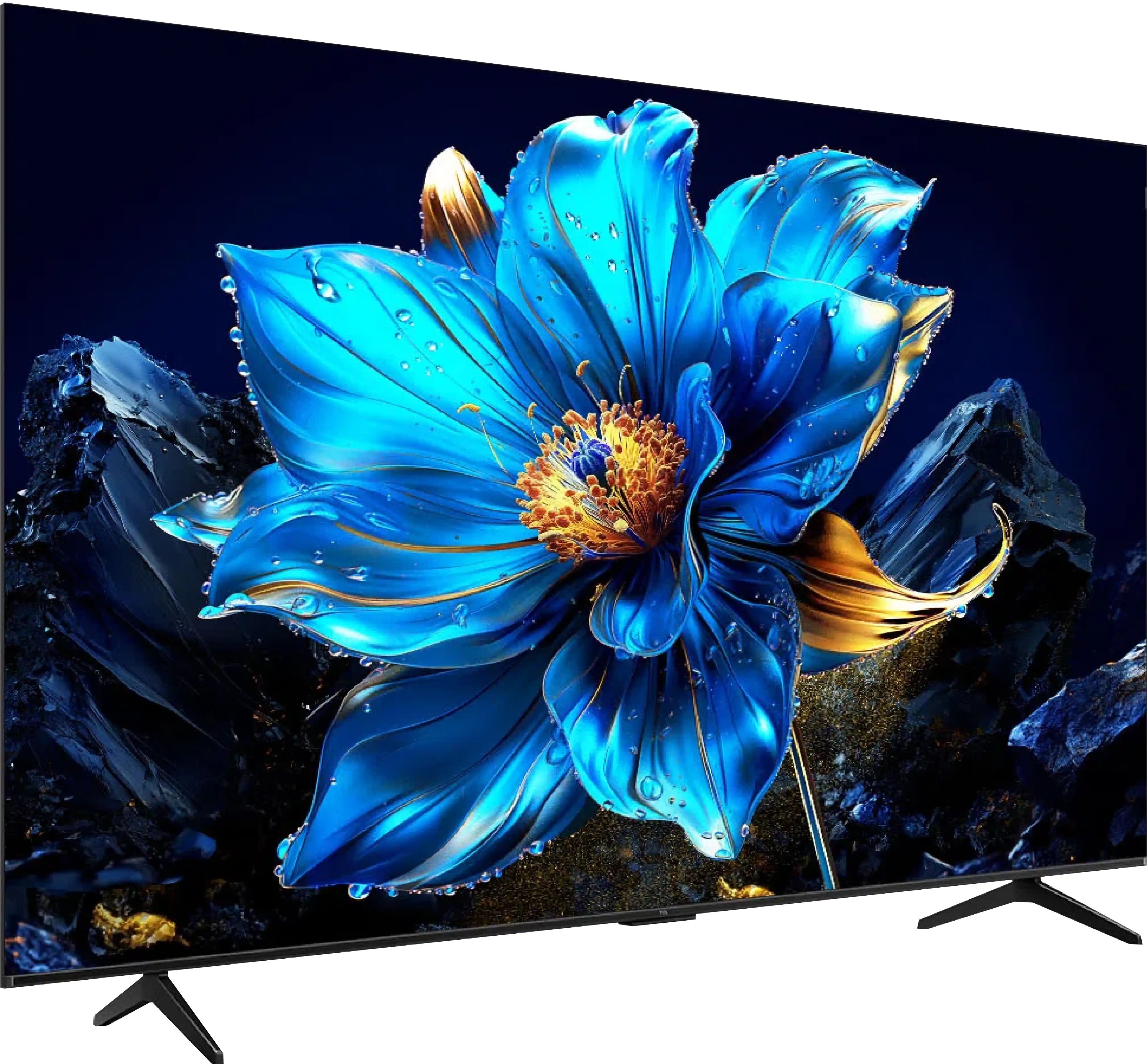
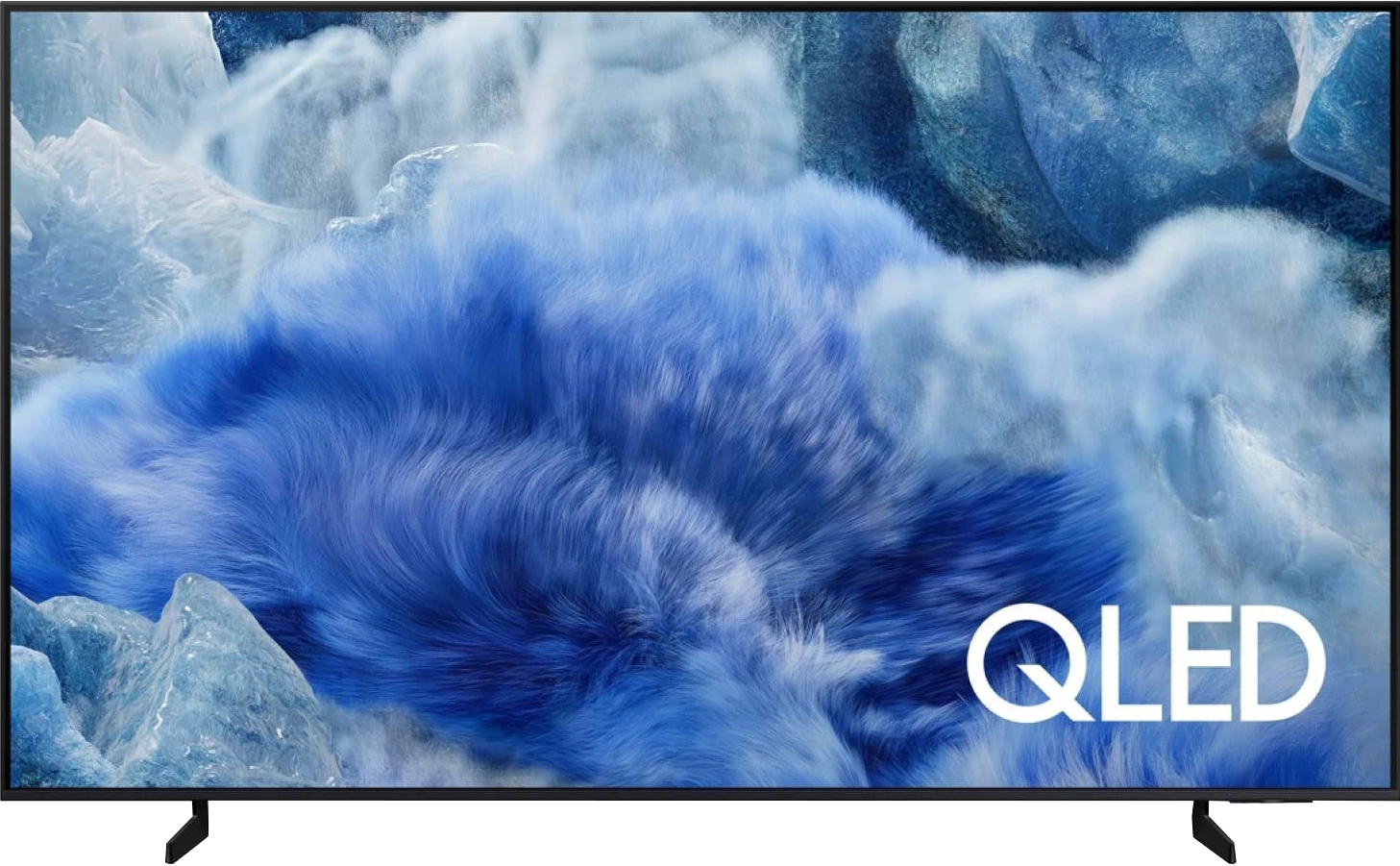
Panel type: LCD VA
Resolution: 3840x2160
System: Android TV
Model year: 2025
Complete the survey to find out the result

Panel type: LCD VA
Resolution: 3840x2160
System: Tizen
Model year: 2025
Complete the survey to find out the result

Overall rating
5.8
6.3
Movies and series in UHD quality
5.1
6.3
Classic TV, YouTube
5.5
6.0
Sports broadcasts (TV and apps)
5.3
5.1
Gaming on console
7.1
6.9
TV as a computer monitor
2.0
6.0
Watching in bright light
4.6
5.6
Utility functions
7.0
7.3
Apps
9.6
8.7
Sound quality
6.2
6.0
Complete the survey to find out what fits your preferences
Advantages
Great blacks and high contrast
Support for 120 Hz in gaming (at lower resolutions)
Very low responsiveness (input lag), great for fast-paced gaming
Modern features for gamers, such as VRR and ALLM
Efficient Google TV system with a vast app base
Very well-functioning Google Assistant in Polish
Easy screen mirroring from your phone (support for AirPlay)
Attractive price
Solid contrast thanks to the VA panel
Quite good brightness in SDR and HDR (up to around 500 nits)
Satin finish handles reflections well
Tizen operating system – fast, intuitive, with a rich selection of applications
Solar remote with USB-C charging
Integration with the SmartThings ecosystem
Excellent input lag
Good font readability when working with a PC, suitable as a monitor for text tasks
Adjustable stand on multiple planes
Disadvantages
Low brightness, which makes the HDR effect weak and the image poorly visible in sunlight
The image loses quality and colour when viewed from an angle
Not suitable as a computer monitor due to very poor text readability
Strong dithering phenomenon (highly digital image)
Severely limited features for gamers (no VRR in practice, no HGiG)*,
No USB recording or PiP functionality
Average digital image processing
*We hope that the promises on the promotional brochures will be quickly fulfilled through software updates.
Our verdict
Samsung Q8F is quite a successful continuation of the Q67D model. It offers similar image quality in HDR content, and with a brightness of around 500 nits, it can create an effect that is hard to call average. The support for the HDR10+ format also helps, as it has been realistically competing with Dolby Vision for some time and delivers comparable experiences in many productions. The contrast is another positive aspect – for a VA panel, it performs solidly and allows for enjoyable blacks in films and series. However, the greatest advantage of the Q8F remains the operating system. Tizen operates quickly, provides access to many applications, and works well with the SmartThings ecosystem, allowing the television to easily integrate into a larger network of home devices. Interestingly, the Q8F also has a niche application – thanks to its very good font readability, it performs excellently as a screen for working with text. Additionally, there is an adjustable stand that allows the television to be set on practically any desk or narrower TV cabinet. The biggest drawback, in our opinion, is not the image quality itself – as it is difficult to expect miracles in this price range – but rather what has happened to the gaming features. Options such as VRR and HGiG have disappeared with updates, which were available even in simpler constructions in previous generations. Indeed! The manufacturer even boasts about the availability of these features in its catalogue. This makes it difficult to recommend the Q8F to anyone today who plans to connect a console and expects full support for new technologies. Thus, the Q8F is a television that can be appealing – primarily for its design, above-average image quality, and efficient Tizen system. But at the same time, one can see a step backward compared to its predecessor. Let us hope that Samsung will manage to quickly rectify these shortcomings, as otherwise even such a successful 'everyday' television may leave some users with a sense of dissatisfaction.
TV appearance
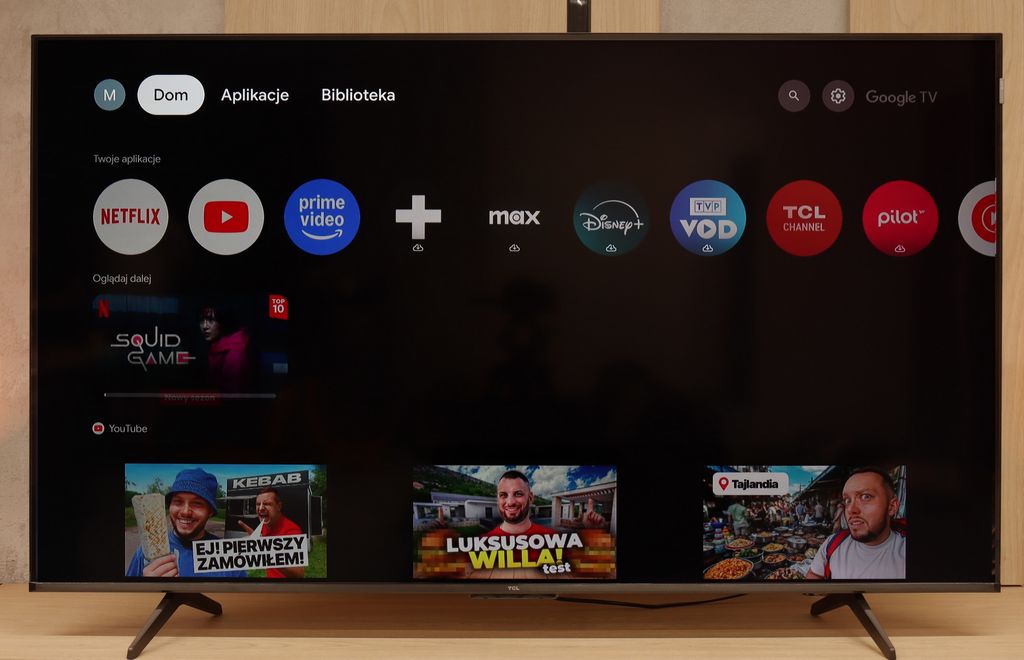
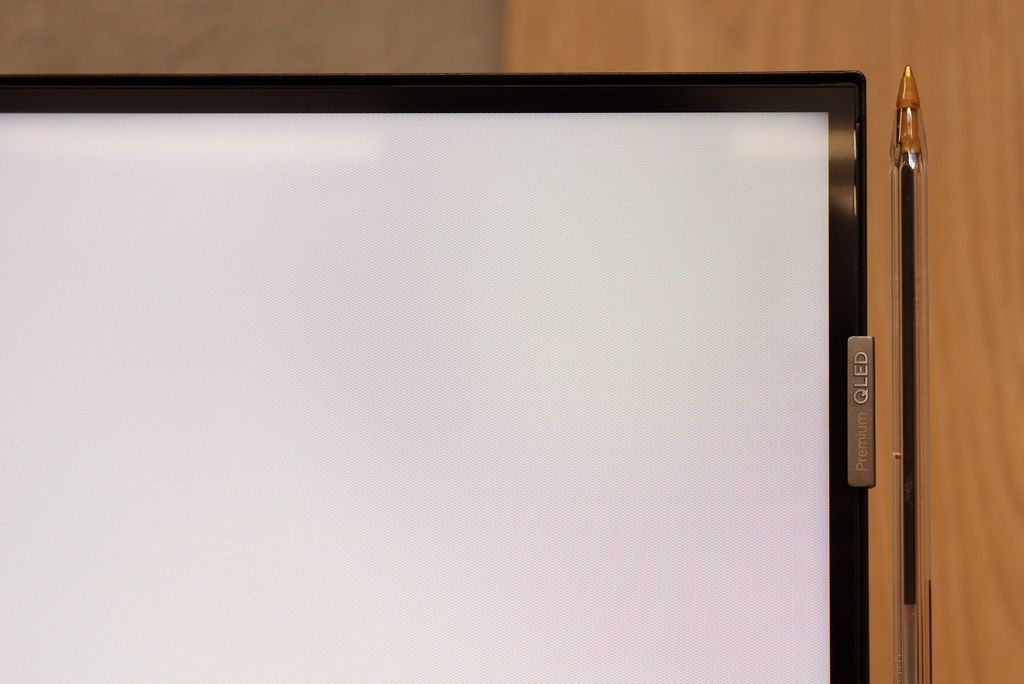
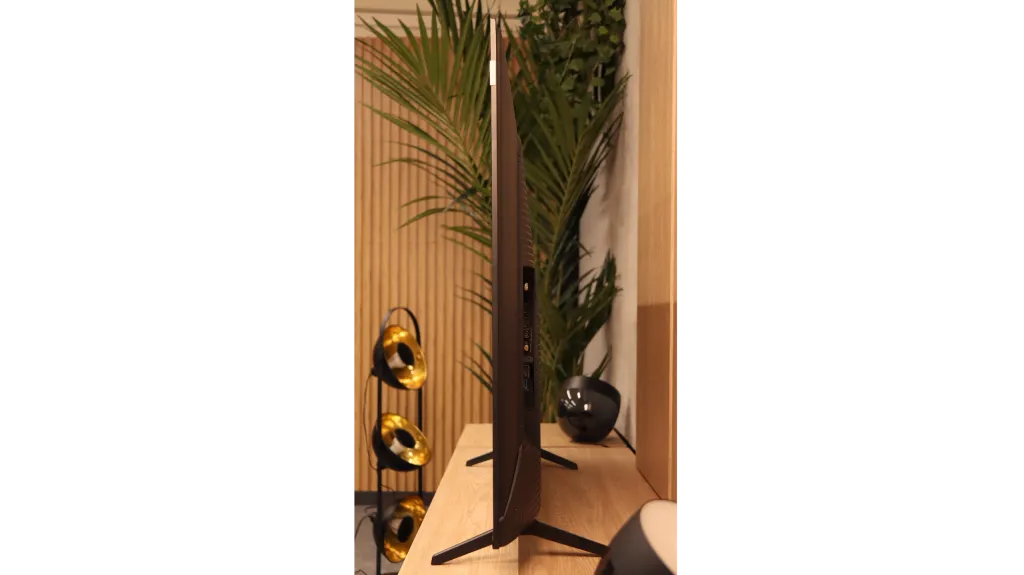
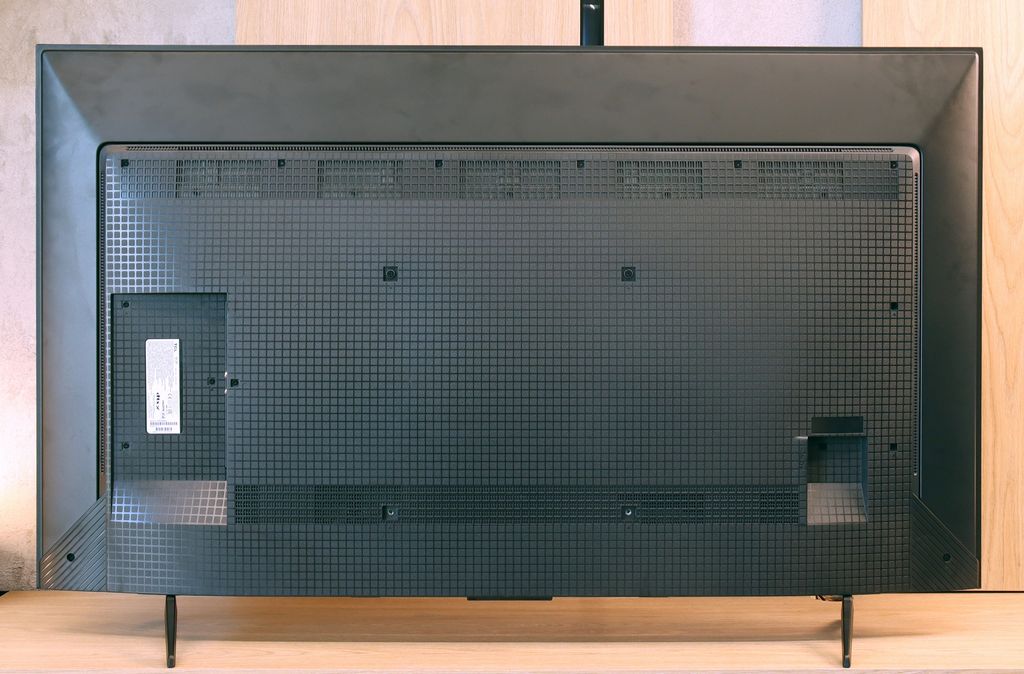
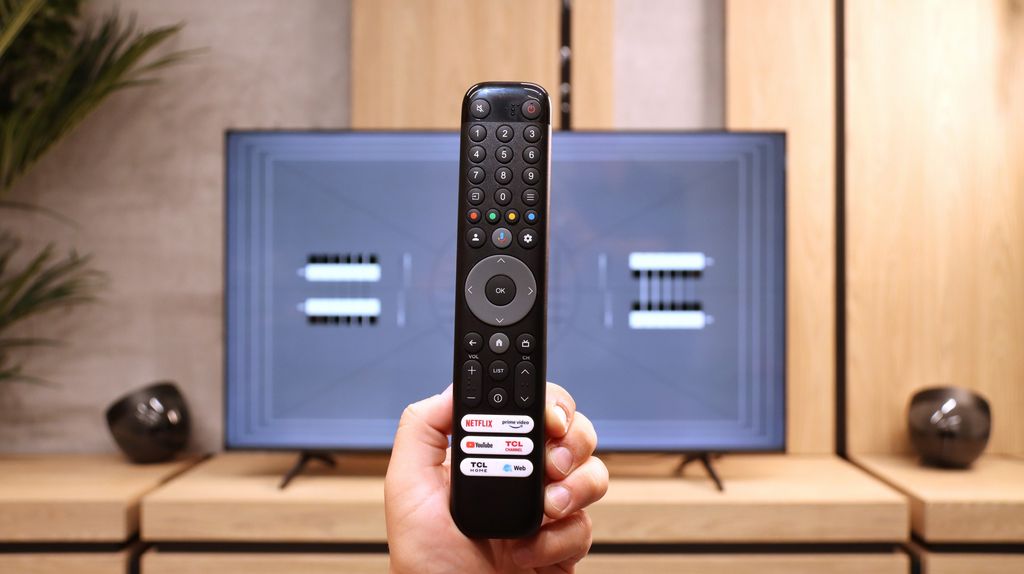
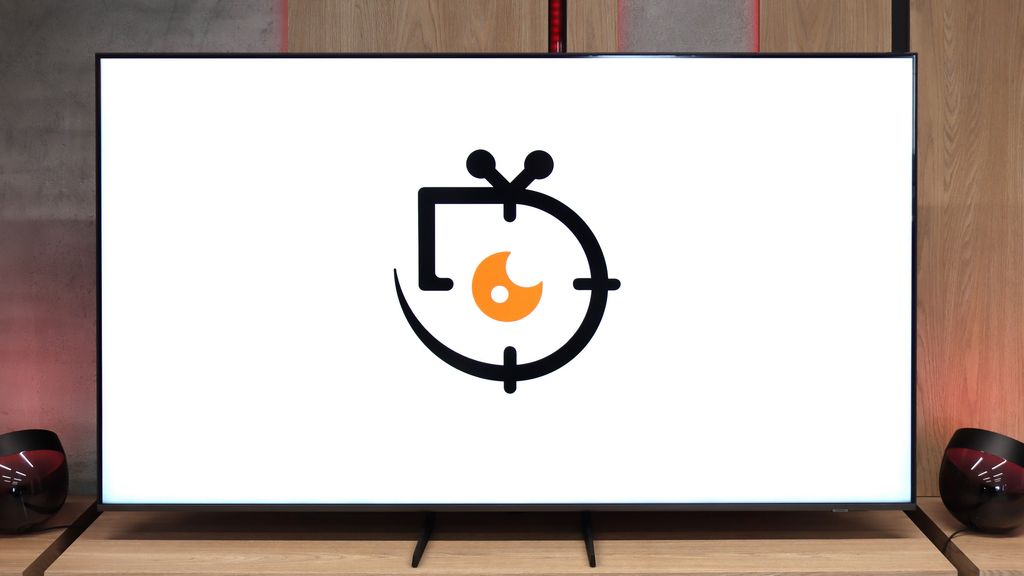
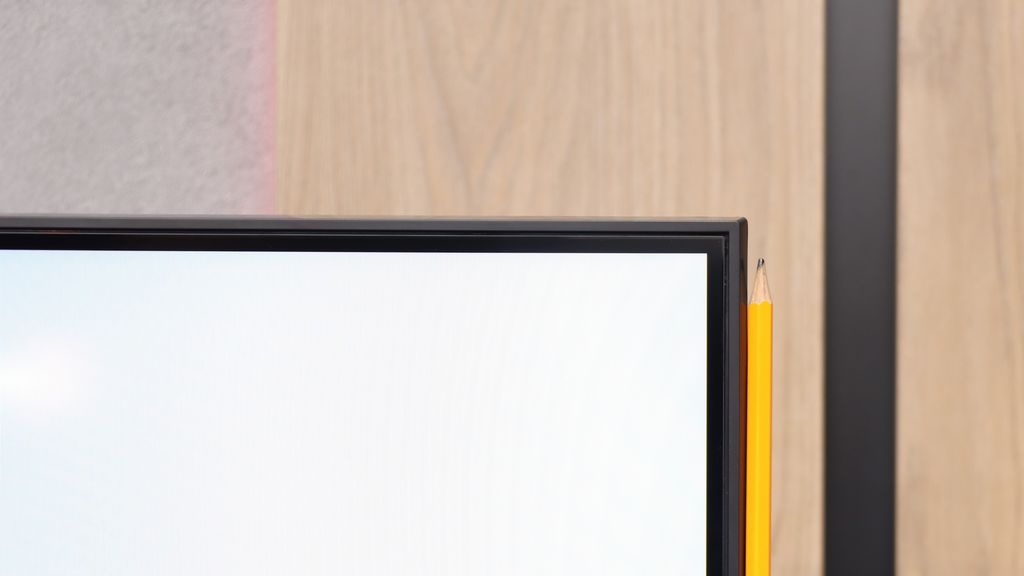
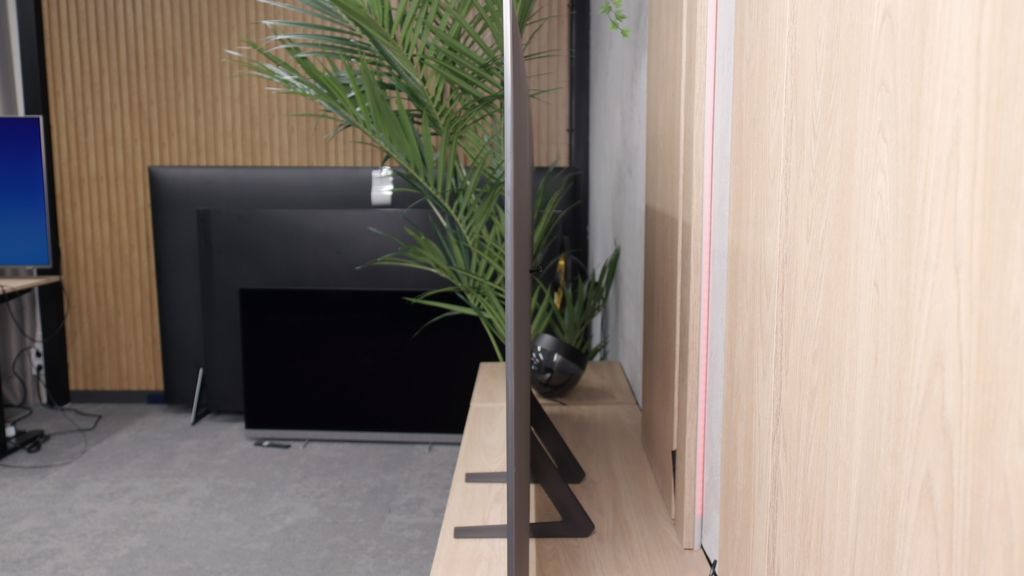
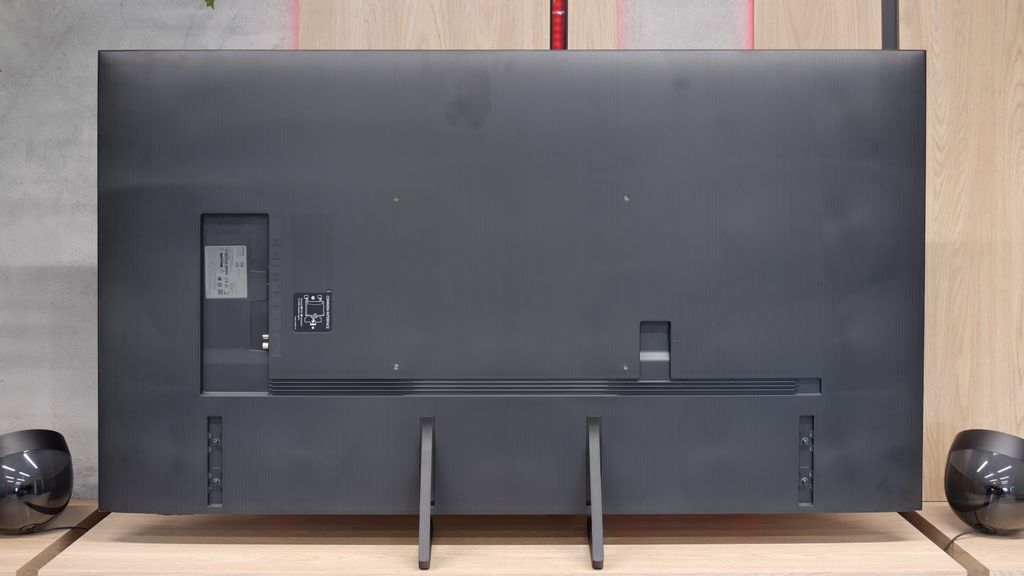
Contrast and black detail
5.2/10
5.5/10
Local dimming function: No
Local dimming function: No
Contrast:

Result
4,000:1

Result
6,500:1

Result
2,700:1

Result
2,800:1

Result
3,800:1

Result
5,200:1

Result
4,650:1

Result
3,650:1

Result
4,100:1

Result
4,150:1
Halo effect and black detail visibility:
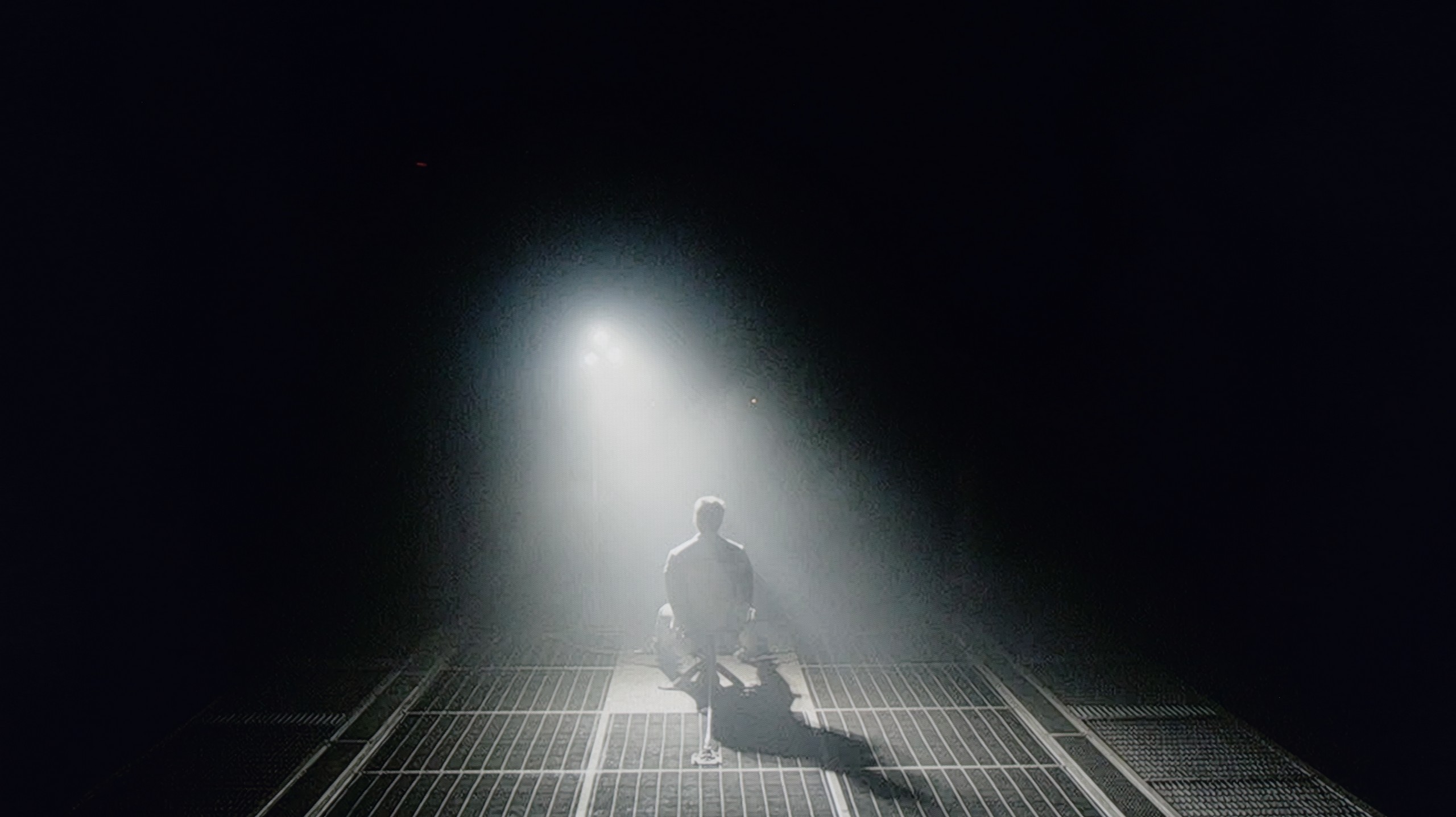
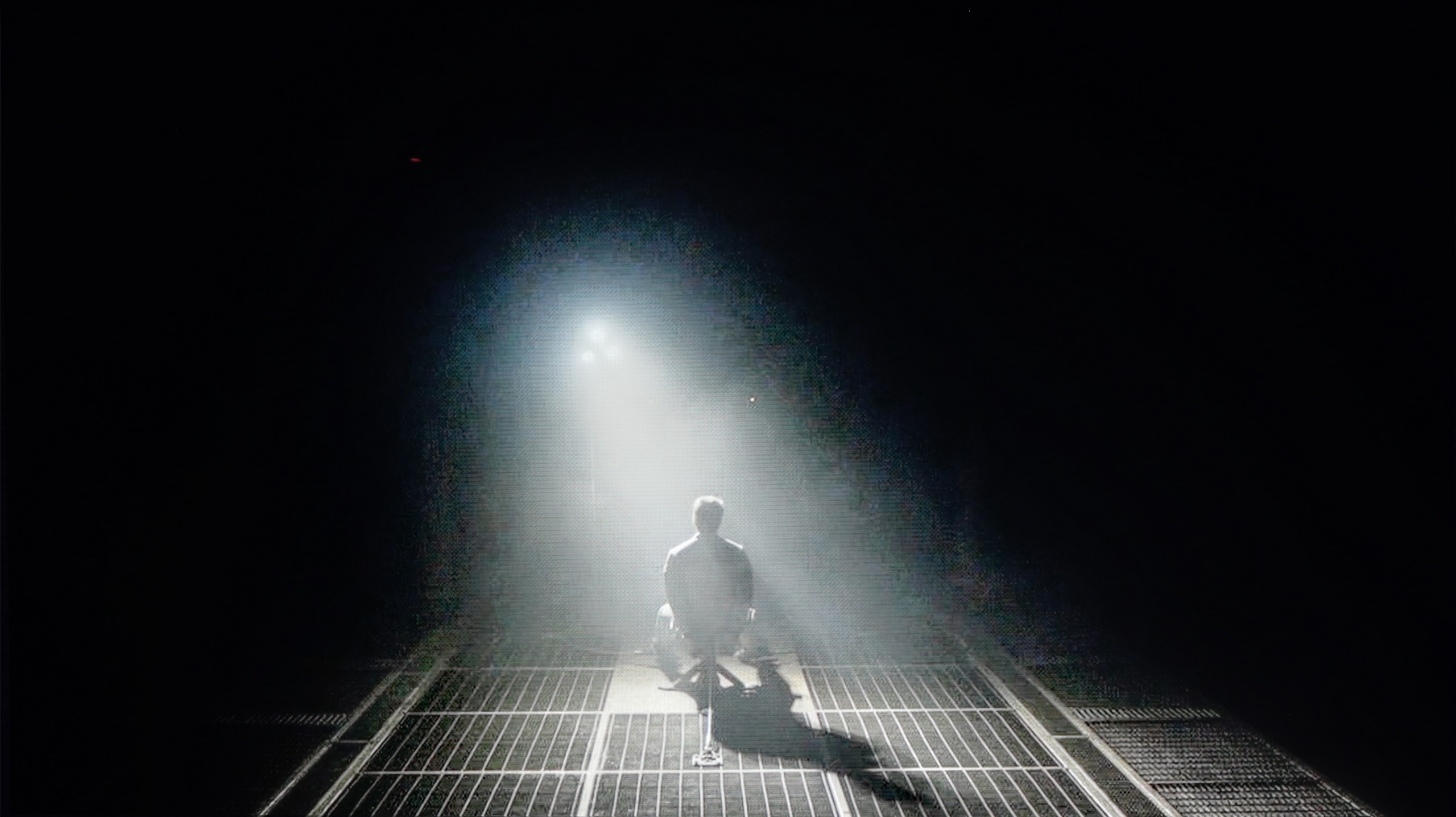
In the discussion about image quality, the conversation almost always begins with the issue of black depth and contrast, which are parameters that define the plasticity and realism of the observed world. Here, the TCL P7k/P79k immediately lays its strongest asset on the table – a VA panel. Its construction is what makes the native relation between the brightest and darkest parts of the image more than satisfactory, especially in the context of the price segment that this model represents. In the majority of scenes, the black achieved has a noble depth, which allows for building an engaging spectacle for the viewer. To illustrate the scale, it is worth mentioning that competing constructions based on IPS panels often offer results that are even four times, and sometimes five times, lower, which in direct comparison represents a chasm. Of course, when entering the territory of models oriented towards affordability, we must be aware of certain compromises. Therefore, we will not find an advanced local dimming system in the discussed television, which could further enhance the sense of contrast. However, the absence of this feature is fully understandable and constitutes a logical consequence of positioning the product in the market – this technology in TCL's portfolio for 2025 has been reserved for higher positioned, more prestigious series marked with the letter "C".
Samsung Q8F uses a VA LCD panel, which immediately puts it in a good position when it comes to contrast. By nature, such panels offer deeper blacks than IPS displays, and this effect is indeed noticeable here. In the test patterns, the contrast maintained itself in the range of around 4000:1 to even 6000:1, which in practice results in a surprisingly engaging image, especially in a slightly dimmed living room. Of course, it does not reach the level of LCD screens with local dimming, let alone OLED — sometimes the black can shift to a shade of blue, making the overall image appear flattened. However, Samsung employs a simple trick: so-called global dimming, which dims the entire screen when a lot of dark areas appear. The effect can be impressive, but it comes at the cost of losing some detail, which may not appeal to everyone. Despite this, the Q8F still presents itself significantly better than televisions with IPS panels, offering solid contrast and blacks that can draw you into the cinematic atmosphere.
HDR effect quality
4.3/10
5.2/10
Luminance measurements in HDR:

Result
206 nit

Result
247 nit

Result
297 nit

Result
237 nit

Result
281 nit

Result
473 nit

Result
417 nit

Result
457 nit

Result
210 nit

Result
471 nit
Scene from the movie “Pan” (about 2800 nits)
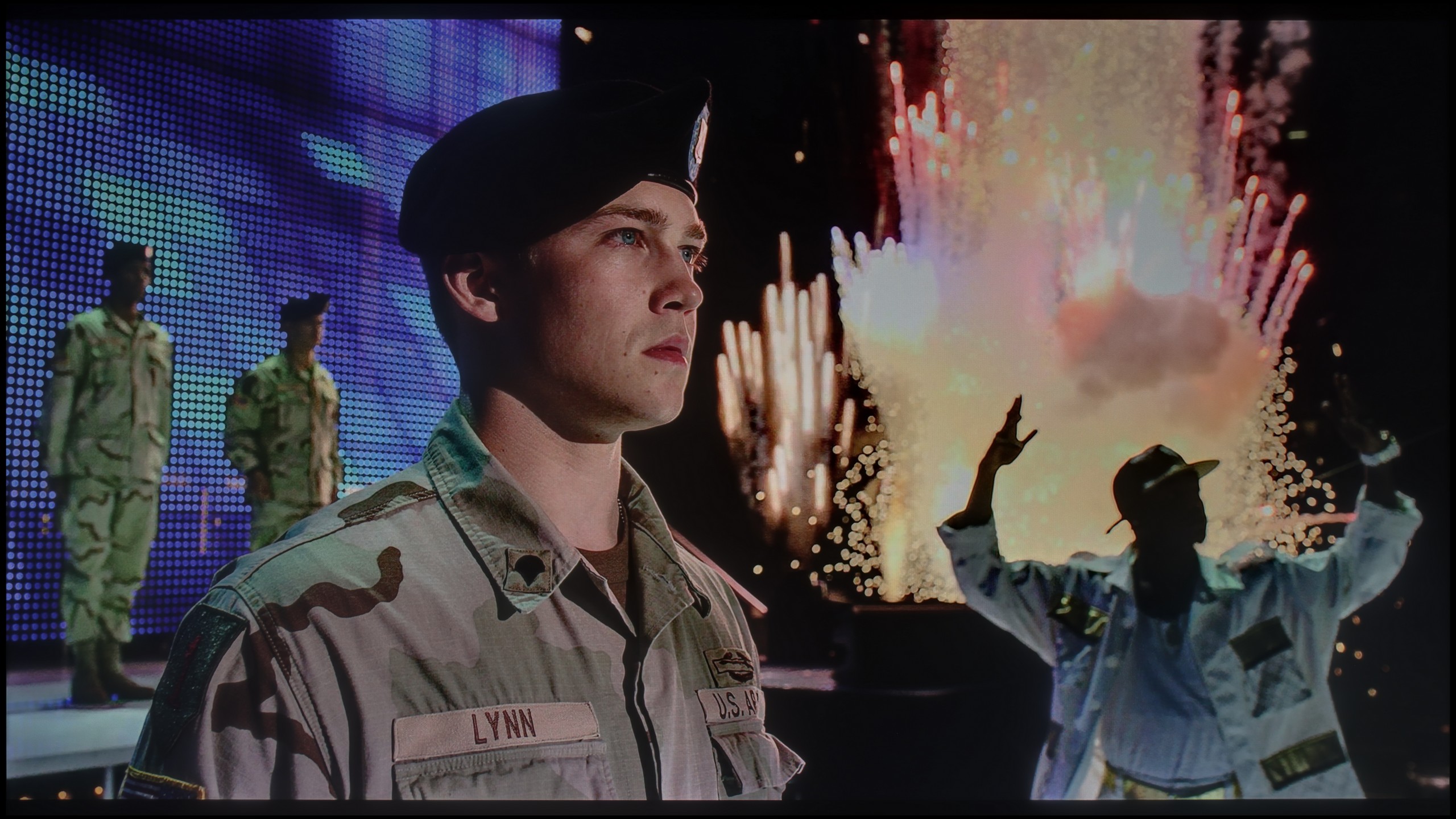

Scene from the movie “Billy Lynn” (about 1100 nits)


Static HDR10


Dynamic: Dolby Vision
Dynamic: HDR10+


HDR luminance chart:
Samsung Q8F
HDR luminance
TCL P7K / P79K
HDR luminance
When turning to the assessment of HDR performance, we must be clear and without marketing embellishments: the P7K/P79K is not, and was never intended to be, a master in this field. The maximum peak brightness that this panel can generate hovers around a mere 300 nits. This represents a threshold, a kind of thin red line between what can be considered a barely satisfactory HDR signal and what is, in fact, not much different from standard dynamic range (SDR), unfortunately leaning towards the latter. Synthetic tests found brutal confirmation in reality – our measurements taken during movie screenings showed that luminance in key bright portions of the scenes rarely exceeded the ceiling of 200-250 nits. Thus, this is not a television that would allow content realised in a wide tonal range to spread its wings, and this must be openly admitted.
Unfortunately, the issue of colour reproduction is presented with equal restraint. Although the manufacturer positions this model within the "QLED" family, thanks to the use of a PFS LED filter, the results do not match the heightened expectations. The coverage of the wide DCI-P3 colour gamut reaches only 86%. In the context of the market, this is at best an average result, as most devices that employ additional layers to expand the colour spectrum easily achieve values at a minimum level of 90-92%.
In terms of brightness, the Samsung Q8F performs surprisingly well for a television without local dimming. In measurements, it reaches up to 500 nits, which in practice means that most movie and series scenes look pleasing, and it cannot be accused of lacking the 'HDR effect'. In films such as Life of Pi or The Meg, the screen was able to burst with brightness and deliver a light effect at a satisfying level. It struggles more in difficult moments — during dark scenes with individual bright points. The global dimming used causes the television to dim the image to maintain deep blacks, but at the expense of detail brightness. This is clearly visible in the scene from Sicario 2, where the helicopter lights dropped to around 200 nits. This is a conscious design decision that gives the impression of deeper blacks, but somewhat takes away the brightness from individual elements, and one must simply keep this in mind. In terms of colour reproduction, the Q8F uses quantum dot technology, which widens the colour gamut. A coverage of the DCI-P3 palette at 91% can be considered a decent result, although it is not a record-breaking figure compared to other QLEDs.
Factory color reproduction
5.9/10
4.6/10
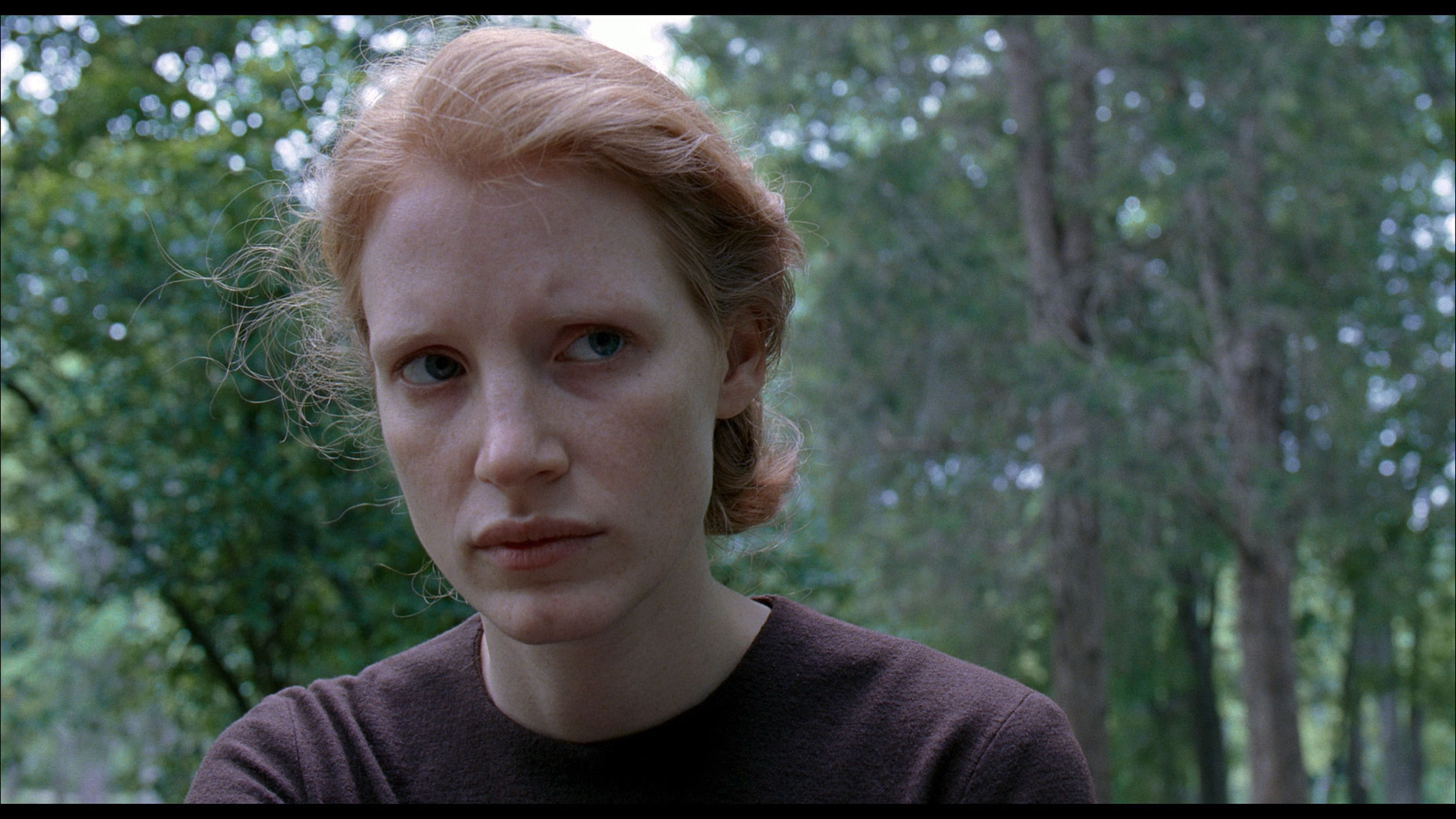
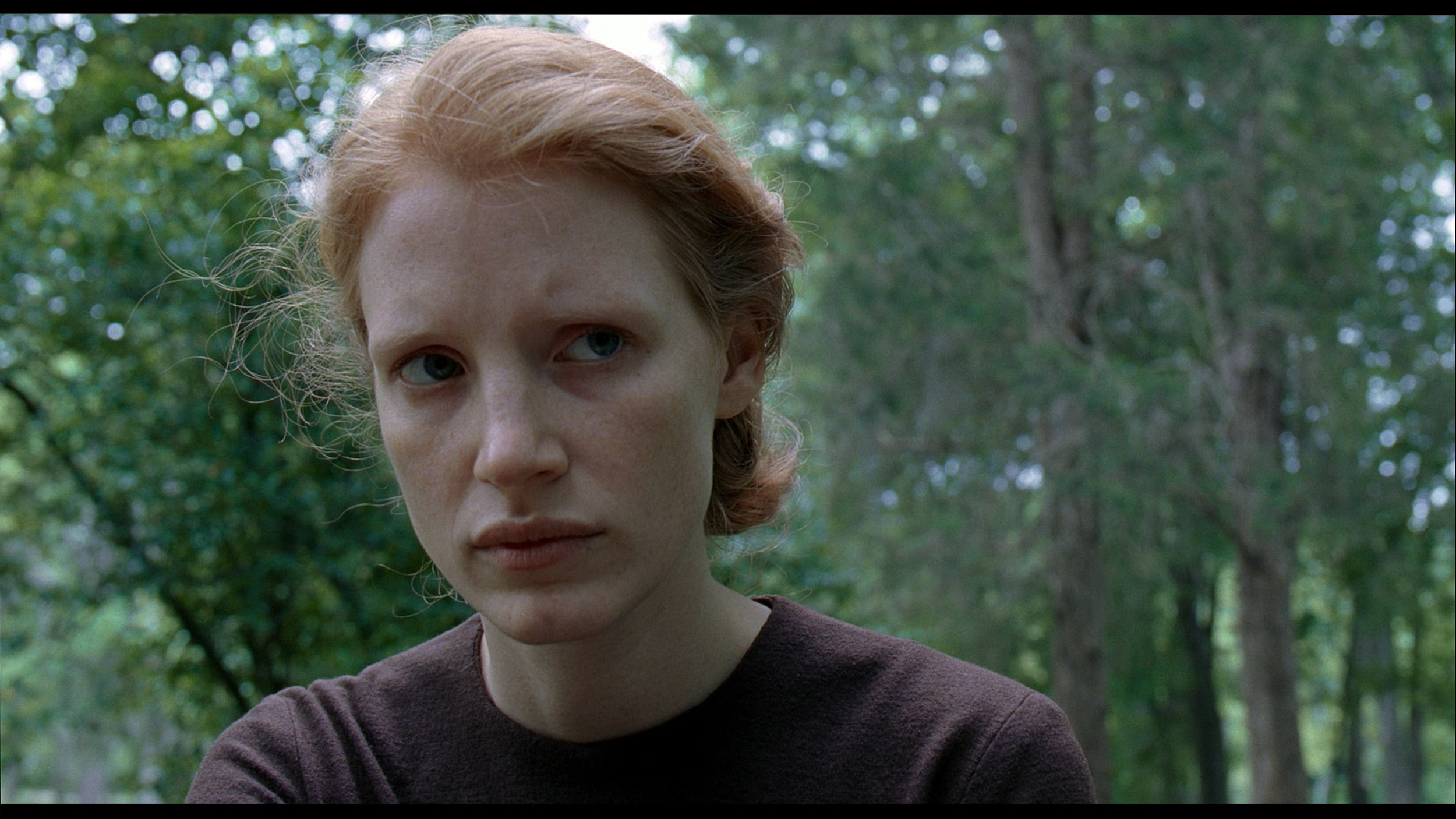
Factory Mode
After calibration
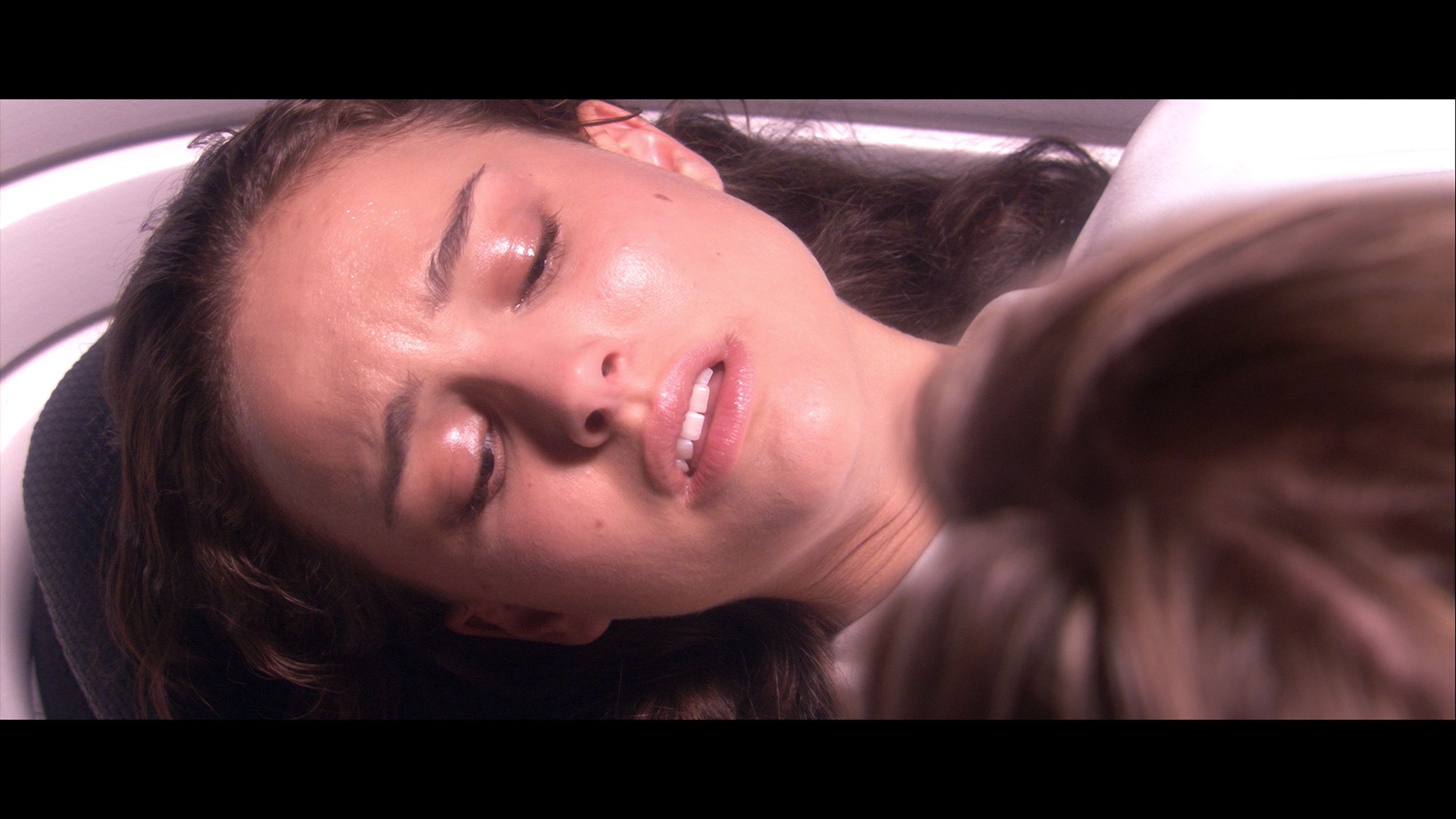
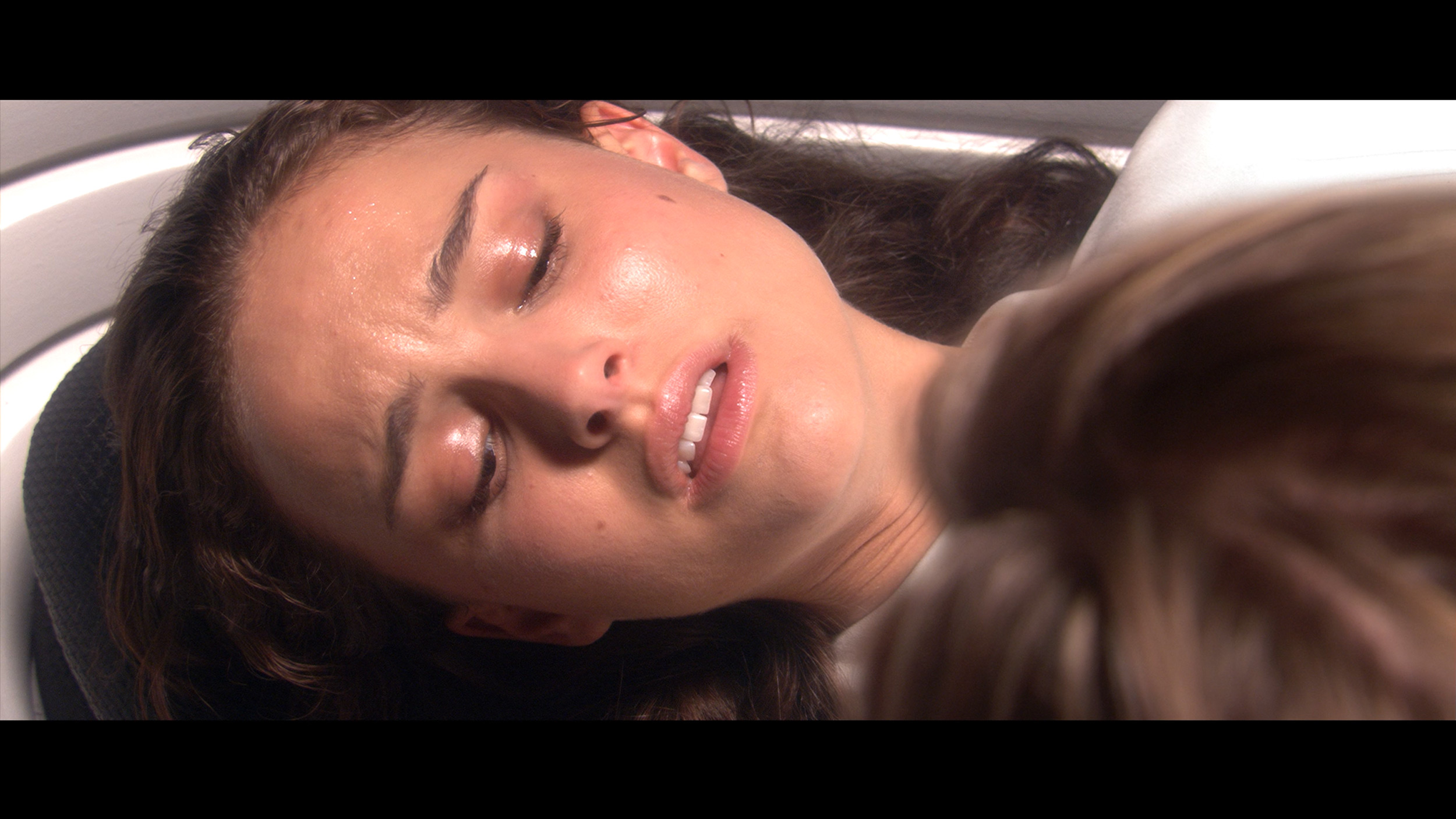
Factory Mode
After calibration
Every accurate assessment of image quality must begin with selection of the most optimal factory mode. In the case of the tested model P7K/P79K, the choice was made without hesitation for the "Film" mode. It is this mode that presents an image closest to the intentions of the creators, avoiding both the exaggerated brightness of the dynamic mode and the excessive dimming known from eco settings. And it must be admitted that, for a device in this price range, the factory calibration is surprisingly decent, although it has not escaped a few missteps. The most noticeable flaw turned out to be the not completely correctly set white balance. A slight dominance of the blue component gives the image a subtly cool, cold character, thus deviating from the exemplary neutrality that the director wanted to show us. The television performs much better in reproducing the greyscale in the standard dynamic range – the gamma curve is nearly exemplary. The only minor reservation could be made regarding the darkest parts of the image, where a slight deviation from the norm causes a loss of some detail in the shadows. The most serious challenge for the TCL software, however, was interpreting the HDR signal, as illustrated by the course of the EOTF curve. The television follows its own, quite free path here – the darkest details are disproportionately brightened, after which there is a noticeable slowdown in the increase of brightness for midtones. Fortunately, most of these imperfections are software-related issues that can be eliminated. With this thought in mind, we began the process of professional calibration.
We decided to check out the Filmmaker mode, as it provided us with the best image straight out of the box. However, this does not mean it was perfect. The white balance had too much blue and red, resulting in the white taking on a slight mauve-pink hue. Such an imbalance affected the visibility of practically all colours, as can be seen in the comparison photo below. The brightness characteristics in SDR content were quite well adjusted, though in HDR material we noticed that the television did not always manage its global dimming effectively — at times the screen was too dim, while at other moments it could suddenly brighten. Fortunately, issues related to colours can be effectively corrected with calibration tools, so we decided to get to work.
Color reproduction after calibration
7/10
7.8/10
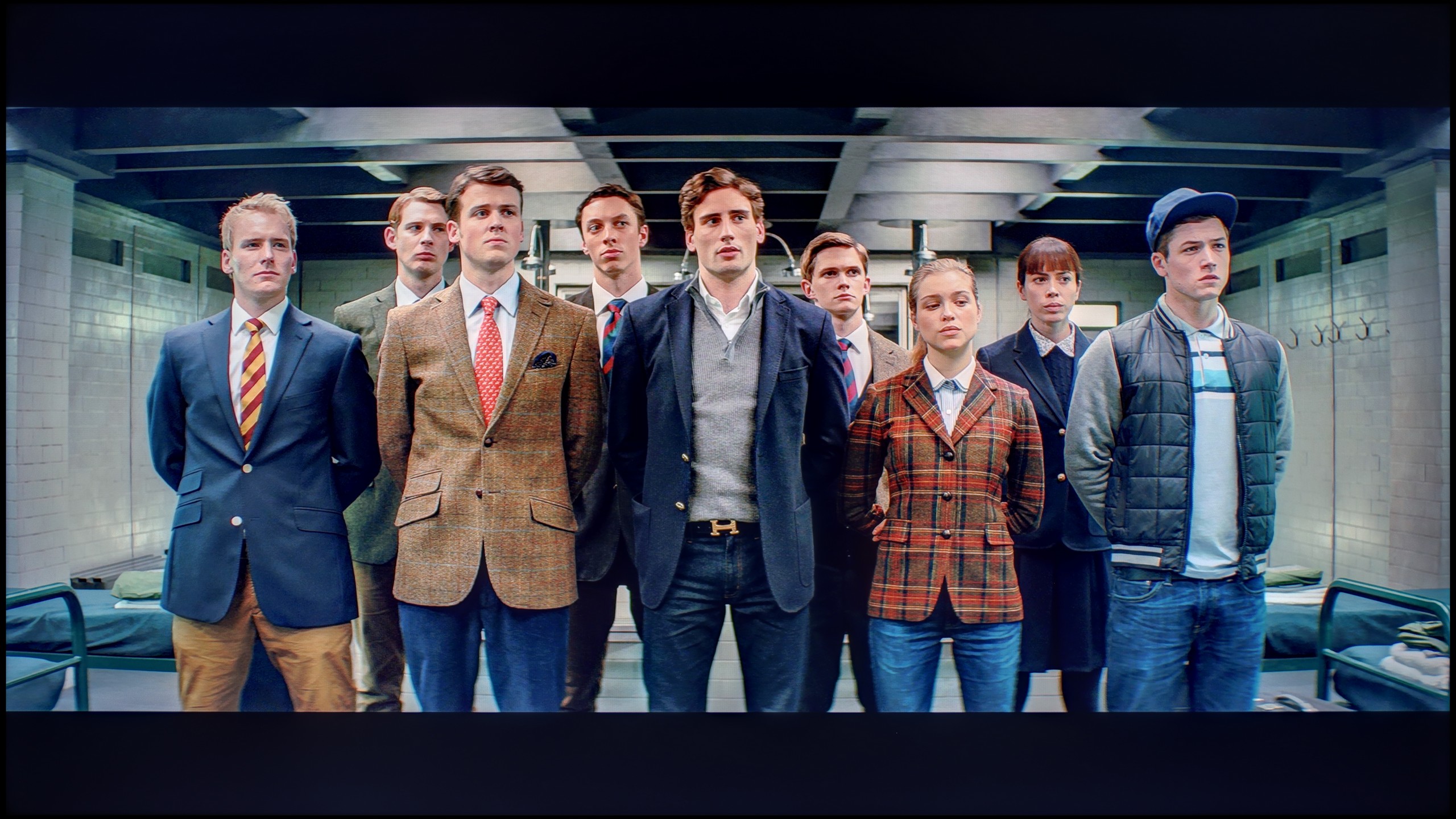

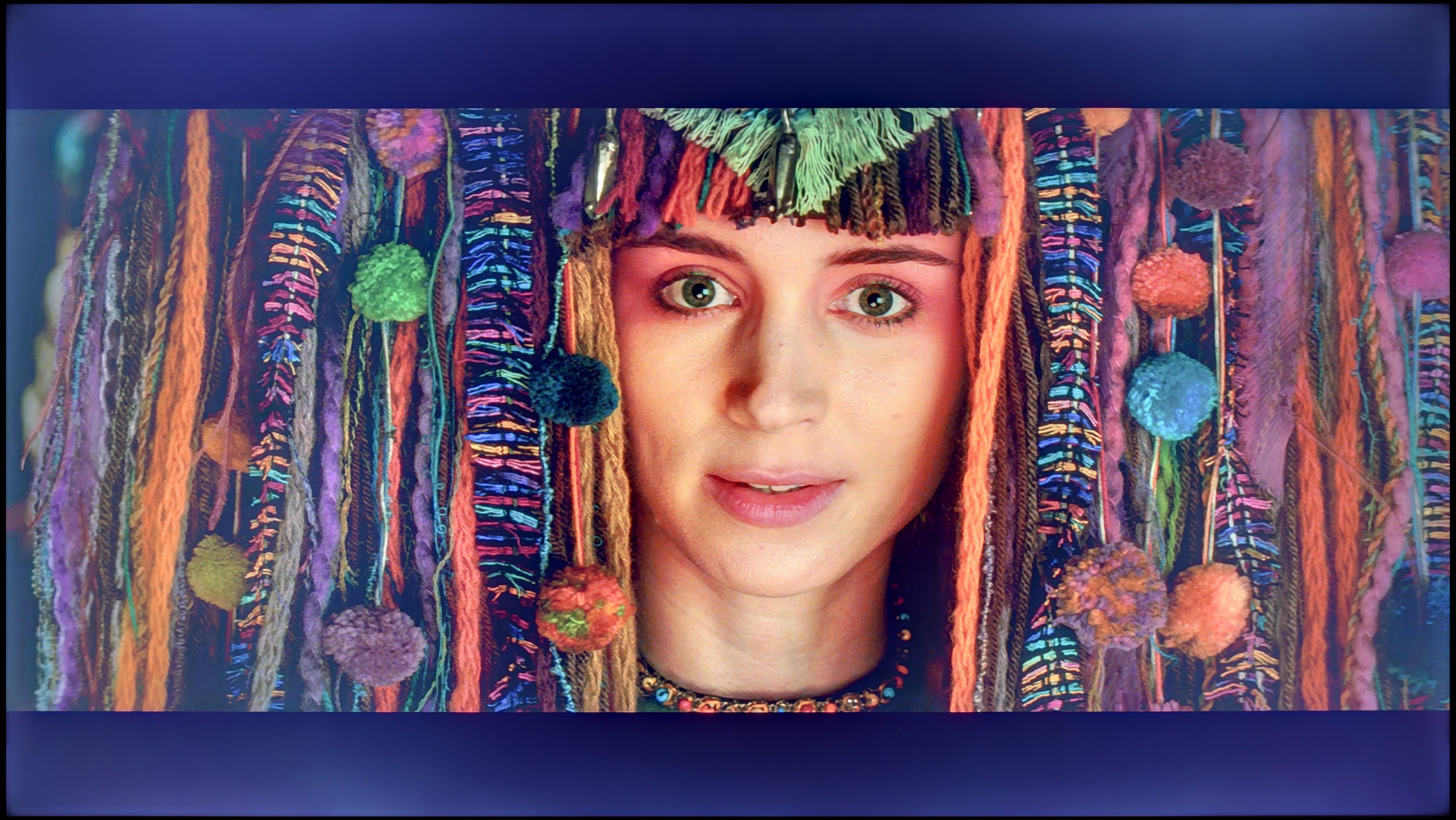

The calibration process turned out to be spot on, particularly in the context of standard dynamic range (SDR) content. We successfully mitigated the television's tendency to emphasize cool tones, restoring the whiteness to its natural neutrality. Moreover, precise adjustments allowed us to correct a slight error in the gamma curve, ensuring that the darkest parts of the image regained their proper depth, without any trace of unnatural brightness. The effects are measurable and impressive – in the ColorChecker test, the overwhelming majority of colour reproduction errors fell below the perceptual threshold, achieving a deltaE value of under 2. This is a result that pricier models would not be ashamed of. Unfortunately, when it comes to HDR content, we encounter a barrier in the form of the inherent limitations of the panel itself. And although we managed to bring the colours into line, the software's characteristics mean that the television still adapts brightness in its own way, as evidenced by the persistent, non-standard EOTF curve. In summary, calibration adds immense value, but one must be aware that it cannot overcome certain physical barriers. The slightly elevated black level, due to the lack of local dimming, along with limited peak brightness, means that HDR content may not always be able to showcase its full potential. This is simply not the primary task of this display; its true strength, especially after professional tuning, lies in the viewing of SDR material.
After calibration, we managed to correct the white balance to near perfection. Older SDR content looks fantastic — most errors fall within a value range of 2, which is well below the threshold of perceivability for the human eye. In HDR, we also brought the white balance to an acceptable level, but another issue arises here. So why are there still relatively large errors in colour reproduction? This mainly stems from the limited colour palette and the way the television manages brightness. The global dimming technique used does not give the user control in the settings, so when analysing the EOTF curve in HDR films, it is apparent that the Q8F can modify luminance independently. This can be regarded as a certain limitation, but despite this, the picture after calibration is still much more pleasant to view than in the factory version.
Smoothness of tonal transitions
5/10
9/10




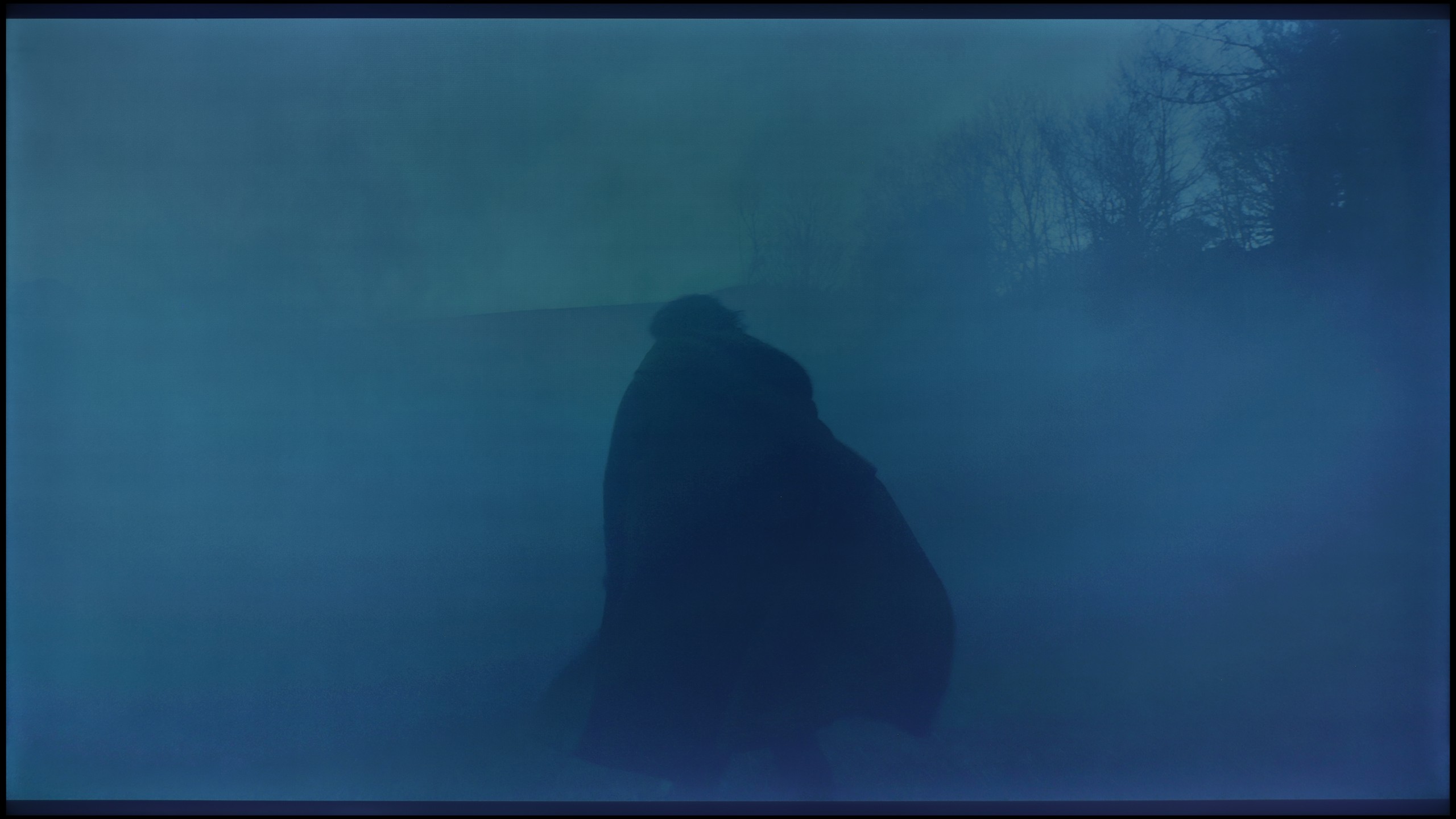
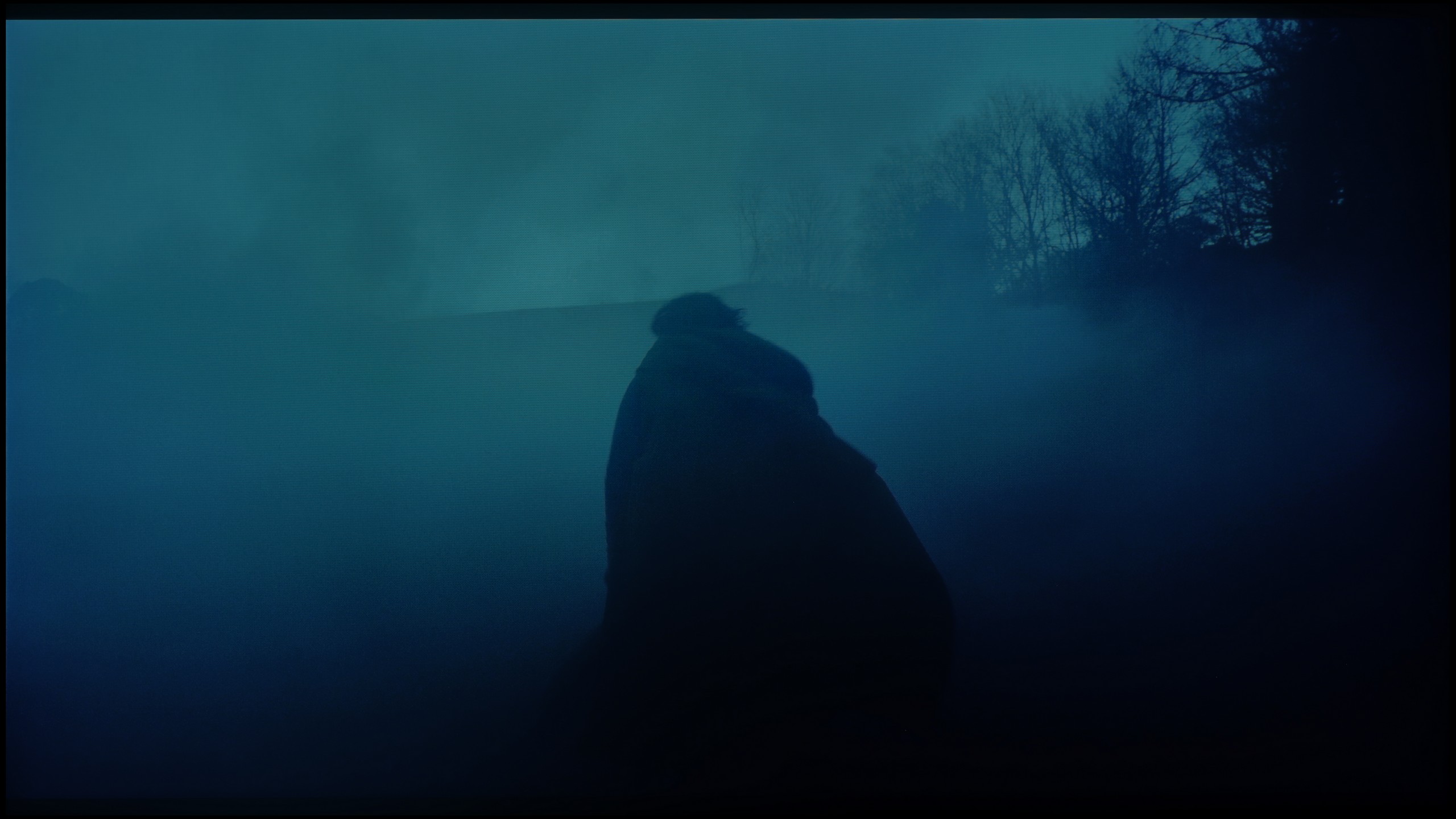
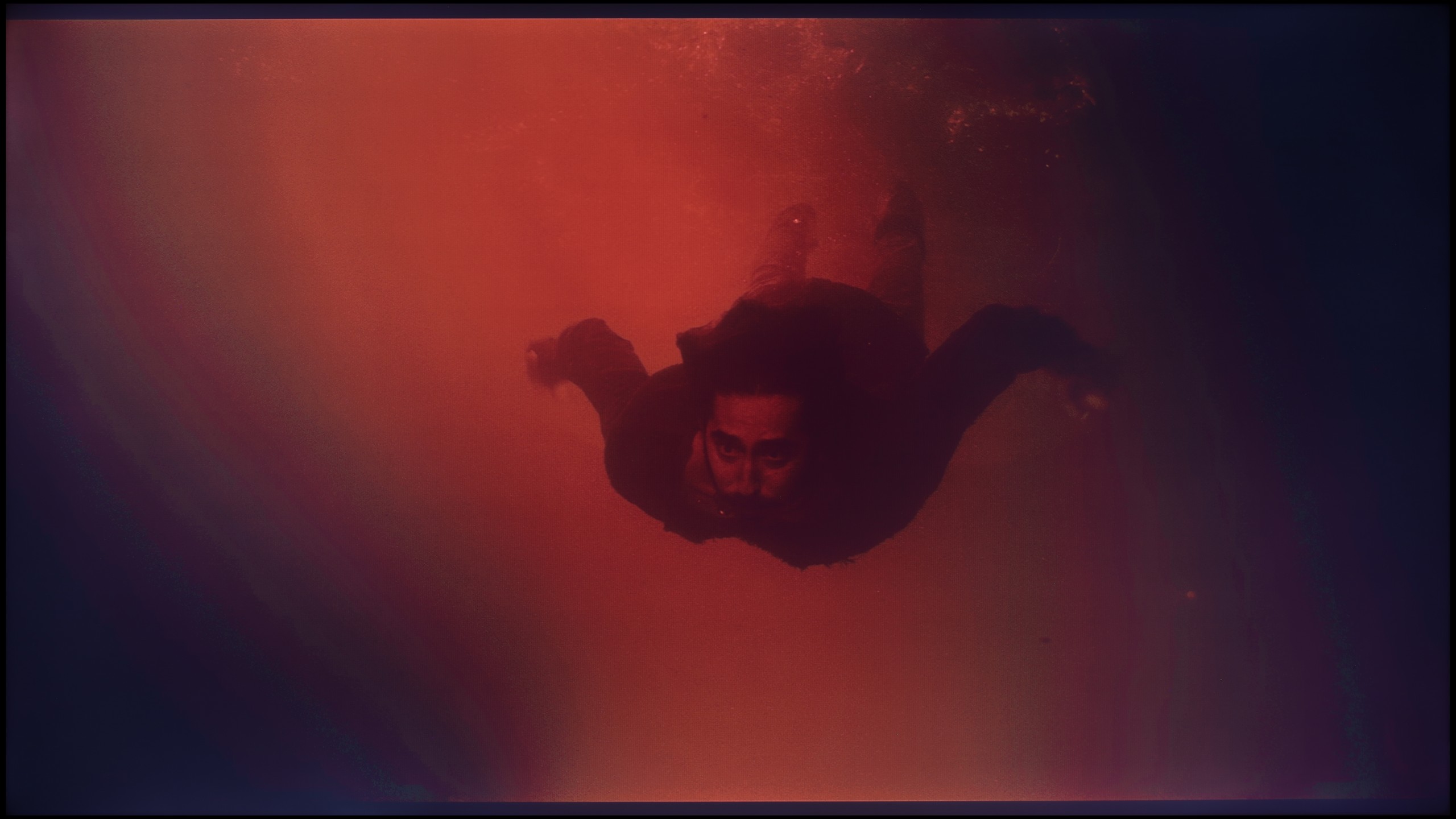





The issue of the fluidity of tonal transitions, or popular grading, is another area where the P7K / P79K evokes mixed feelings and surprises with its dual nature. If we were to evaluate solely its ability to render smooth colour gradients, we would undoubtedly give it a solid score of 8/10. Unfortunately, this positive image is marred by the use of very aggressive and unpleasant dithering. This artefact is particularly noticeable on demanding test patterns – such as the one depicting an actor submerged in red water – where rough, unnatural texture appears on uniform colour surfaces, betraying the digital nature of the image. This is all the more disappointing, as it is not a new issue. It seems to be a sort of inheritance from previous generations of budget TCL models, which is a pity, as it represents a flaw on what is fundamentally a quite competent image and is a mistake that could have been avoided.
The fluidity of tonal transitions in the Q8F performs really very well. The television beautifully blends colours, both in bright patches of sky and in darker scenes, where it is easy to spot visible "steps" in colours. Admittedly, there are occasional errors, but you have to look closely to catch them. In practice, when watching films or series, the image appears cohesive and does not distract with any artefacts. Therefore, the rating in this category had to be high. 😉
Image scaling and smoothness of tonal transitions
7/10
5/10
Smooth transition function
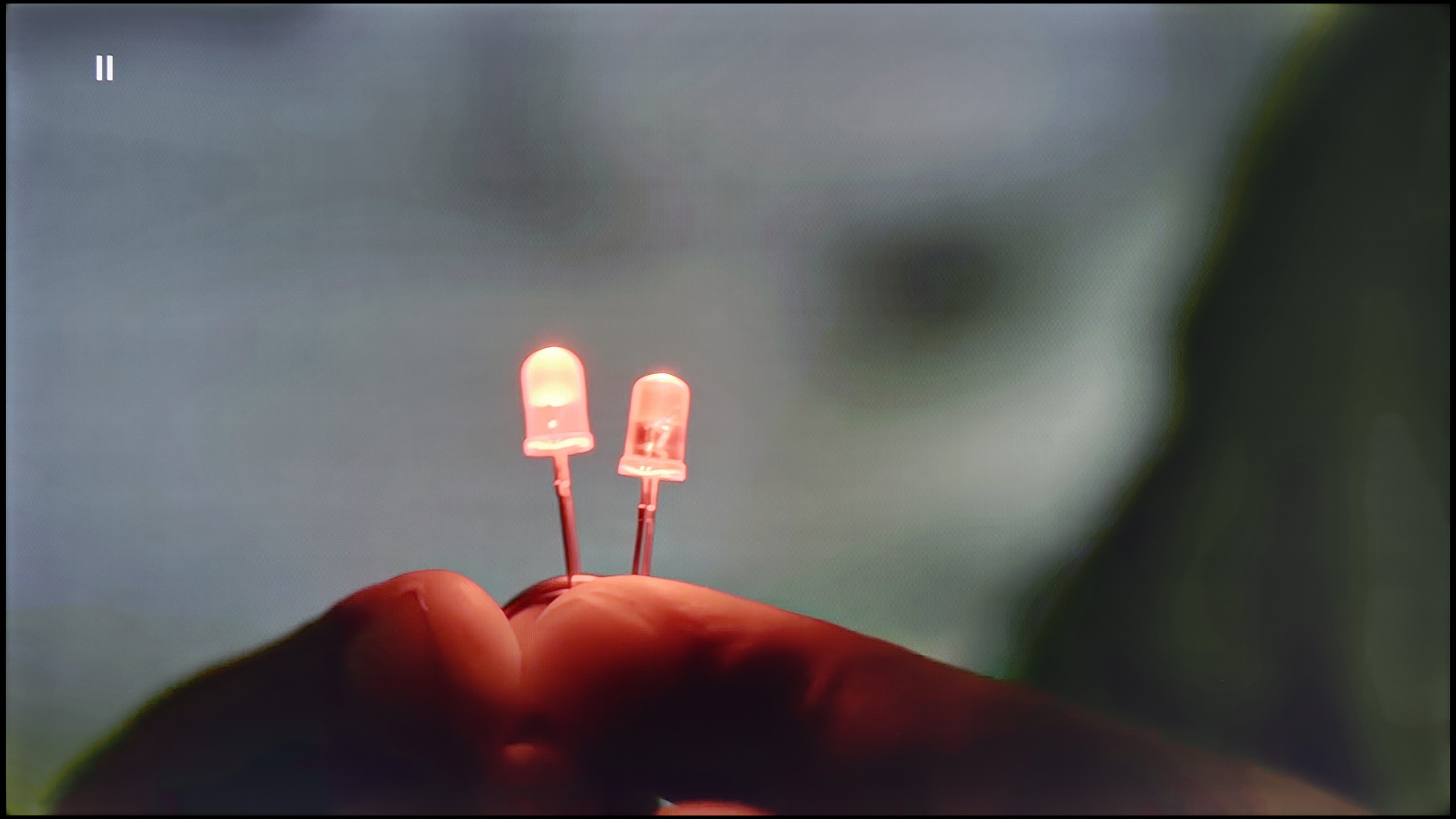
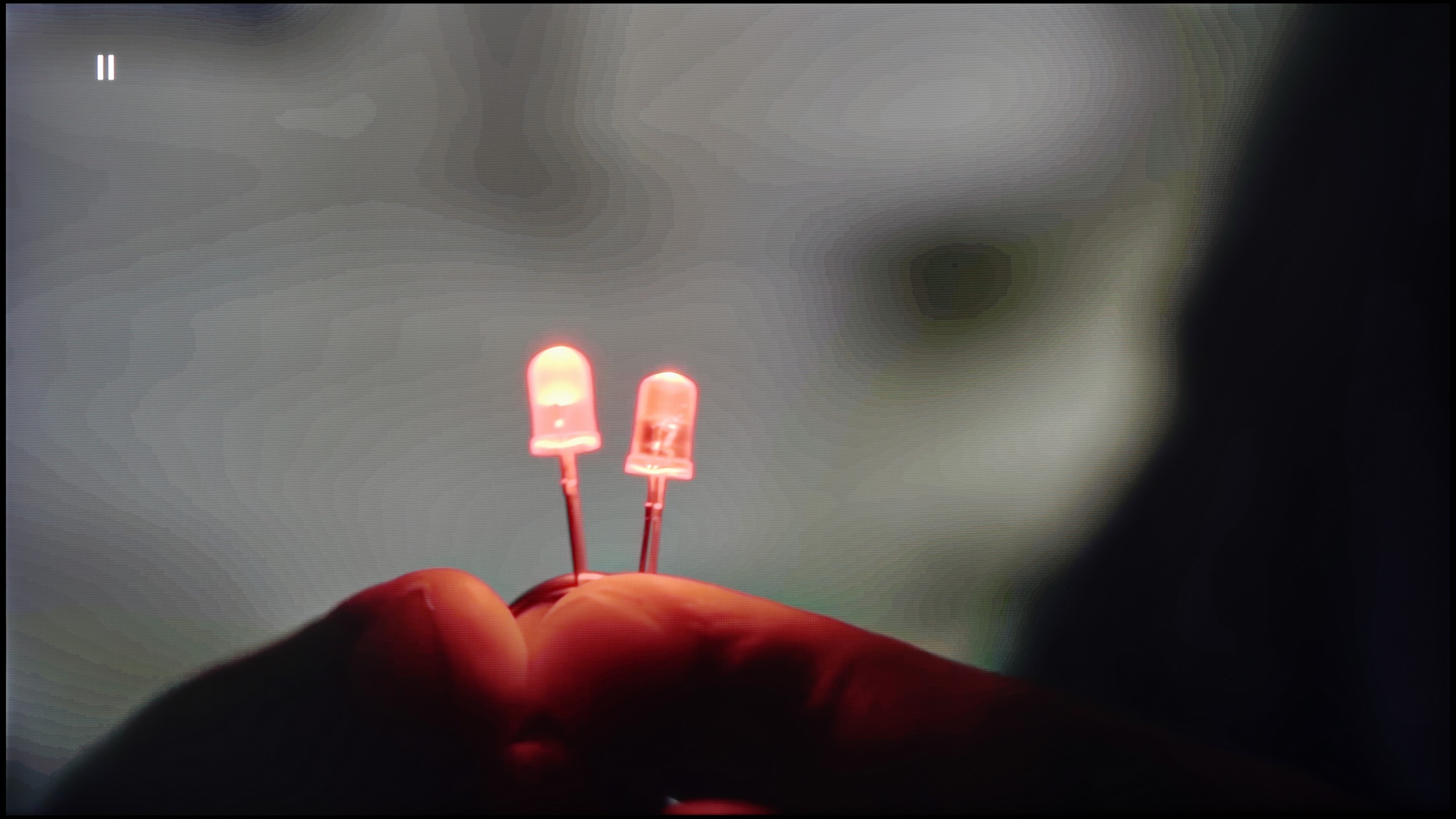
Image without overscan on the SD signal
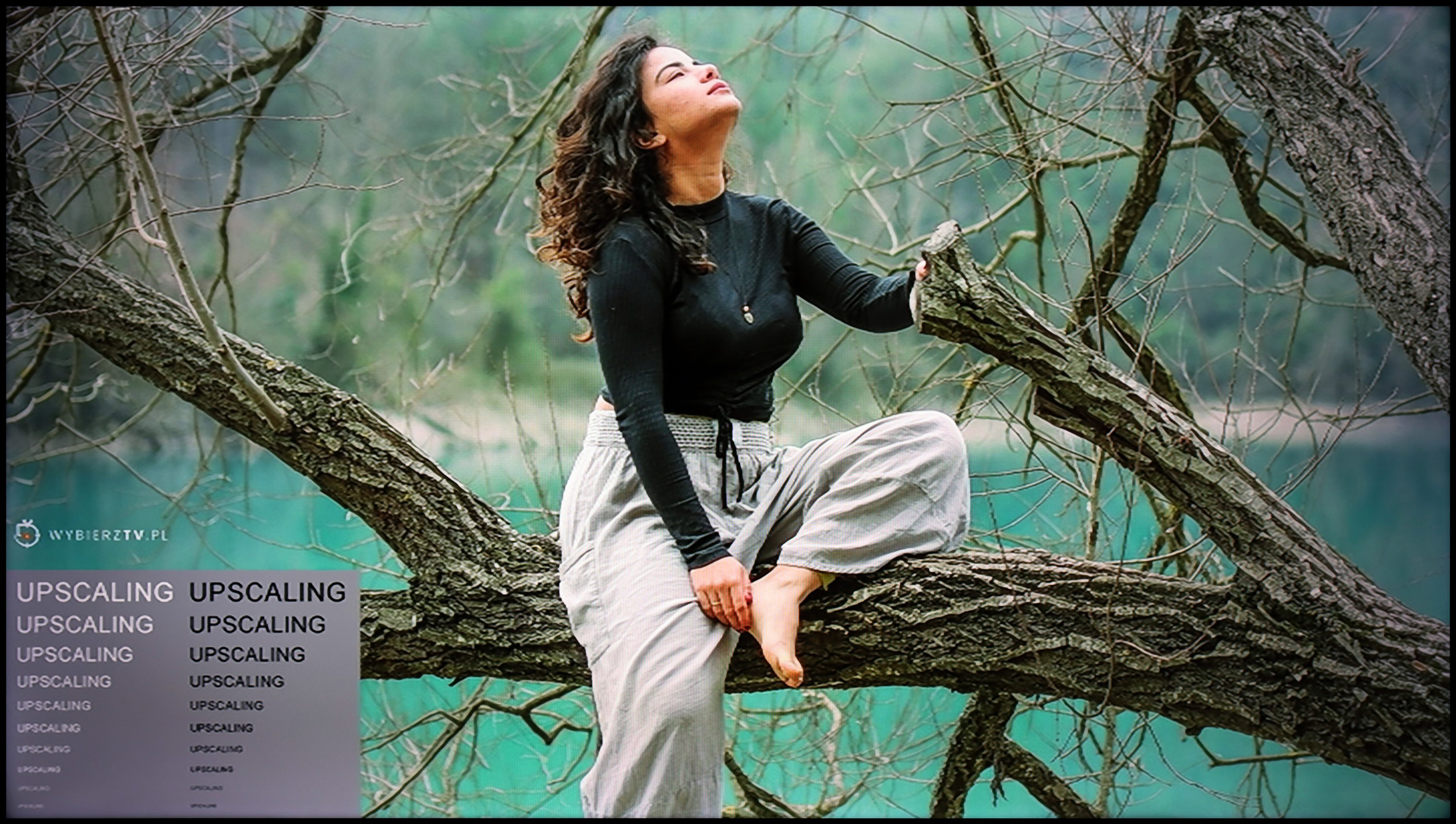
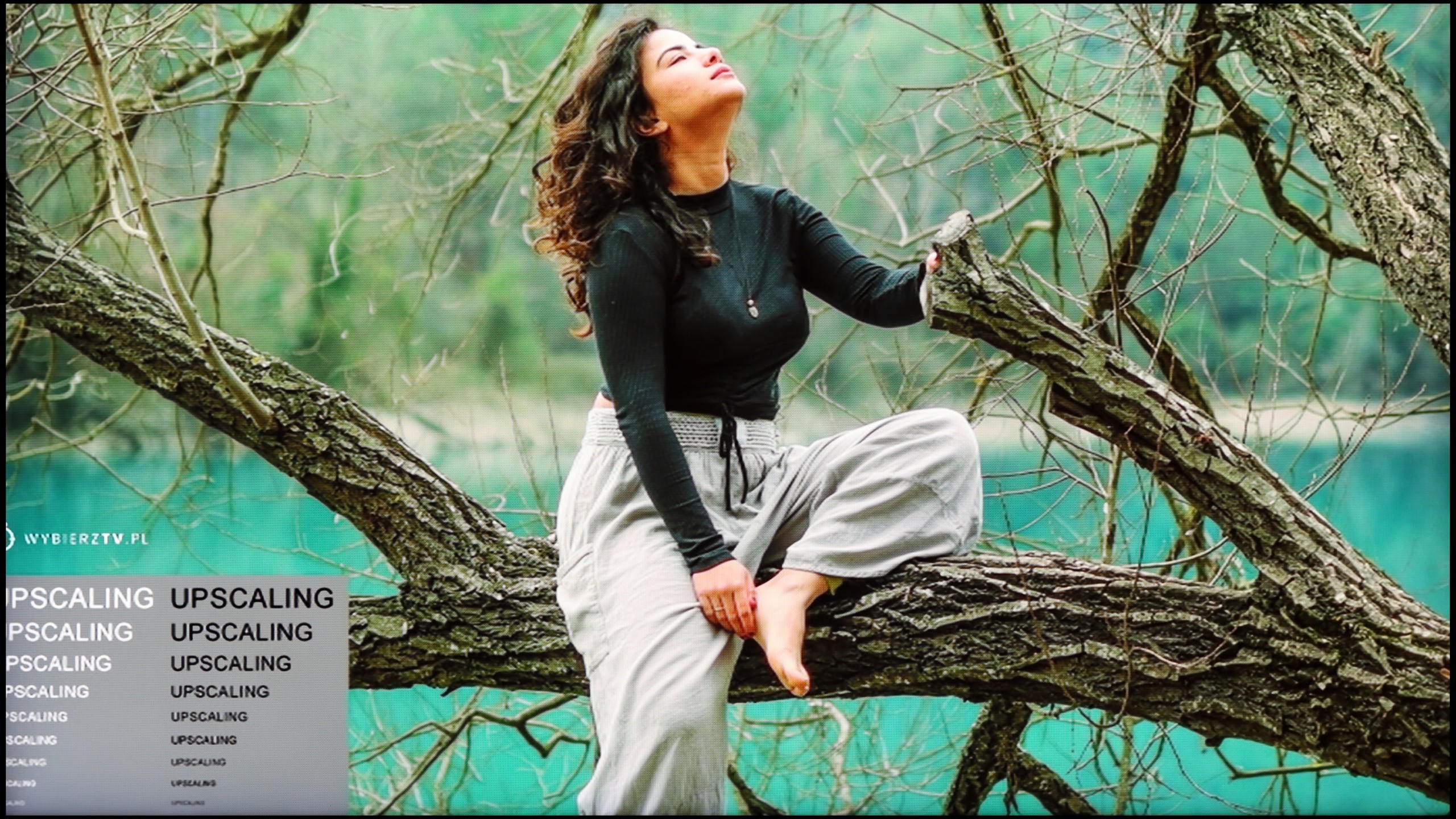
After a series of harsh evaluations, fortunately, the time comes for praise, and this is due to the TCL AiPQ image processor for its work in the field of digital processing and content scaling. It should be noted right away that we are not talking about the level known from flagship designs; however, in the price segment represented by the P7K/P79K, the results achieved are more than solid. The feature for smoothing tonal transitions performs particularly well, effectively eliminating posterisation, which are the characteristic bands often visible in highly compressed materials, for example, from the ChooseTV service. The algorithm adeptly removes unwanted gradients, which ultimately looks really good. The television also handles upscaling competently, which is the task of elevating low-resolution materials to 4K standard. The resulting image, although it may initially seem a bit too sharp, fortunately, is not a problem. The software allows for free adjustment of this parameter using a sharpness slider, making it easy to customise the final appearance to personal preferences.
Let’s check how the Q8F performs with older content, which often has poor quality. Let's start with the positives: the upscaling, or raising the image to a higher resolution, works really well. The television handles both traditional television and YouTube material quite competently, without giving the impression that we are dealing with something completely unattractive. It performs less well with very low resolutions, such as 576p — the image can be cropped, and unfortunately, the overscan issue cannot be turned off. Moreover, the digital processing itself appears less effective. The noise reduction feature, instead of eliminating unwanted disturbances, smooths out almost everything: film grain (which is desirable for many viewers) disappears along with the texture of the image, and the faces of the actors start to resemble characters from cheap Turkish soap operas. Therefore, it’s hard to consider this option useful — it’s best to leave it completely turned off. Perhaps Samsung will refine the operation of this function in future updates, but for now, it’s difficult to view it as anything other than an unnecessary addition.
Blur and motion smoothness
4.8/10
4.5/10
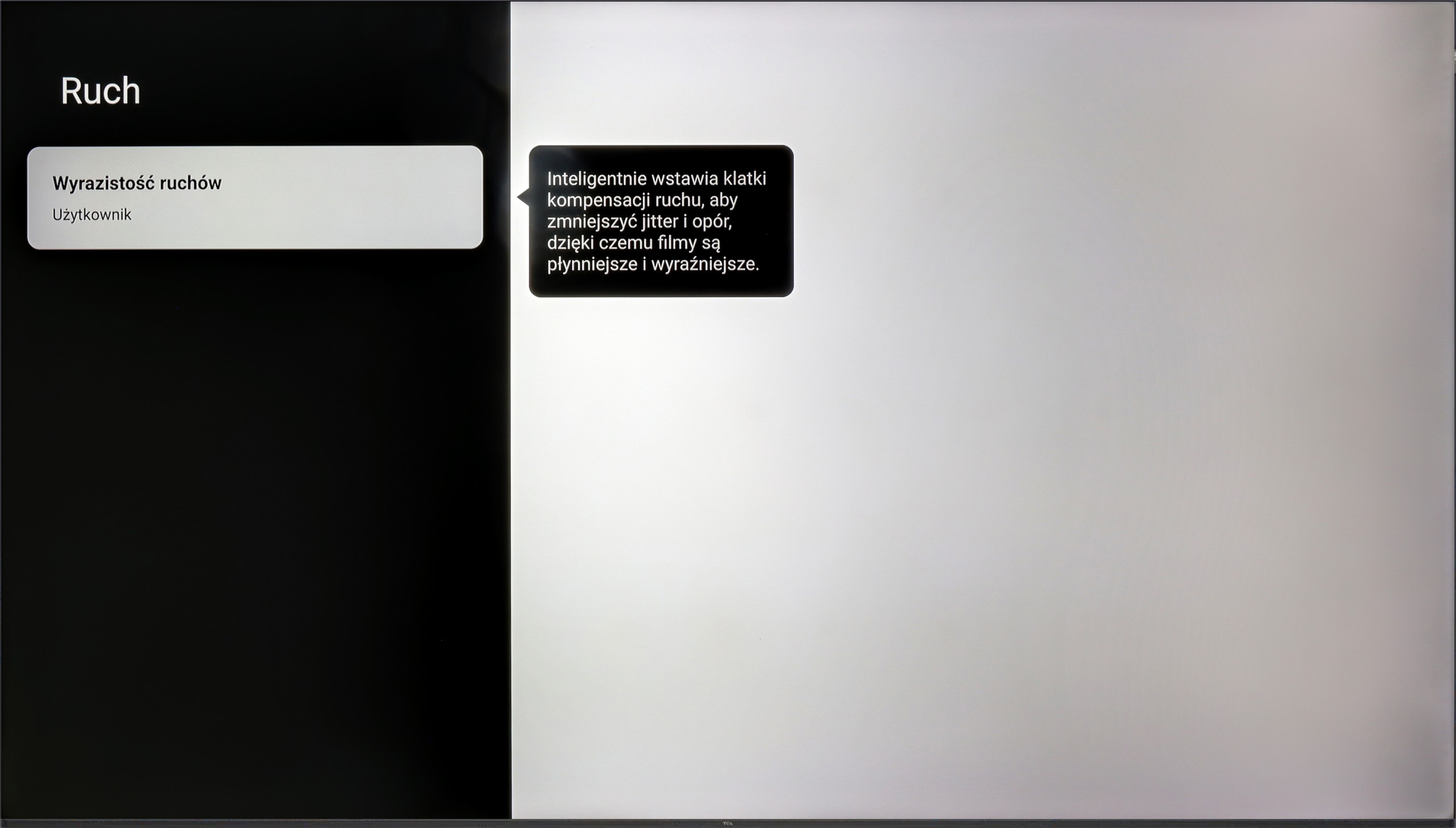
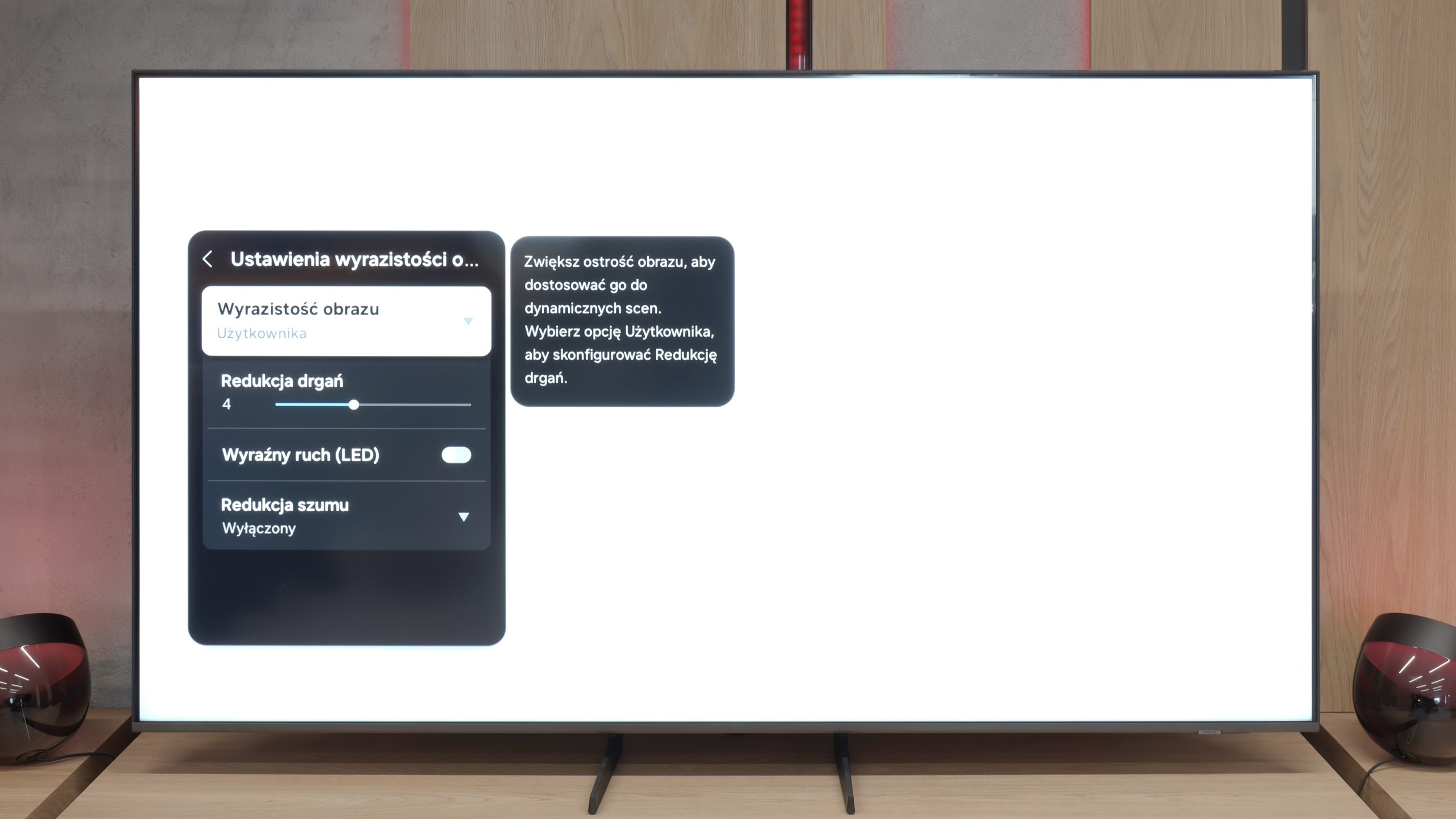
Blur (native resolution, maximum refresh rate):
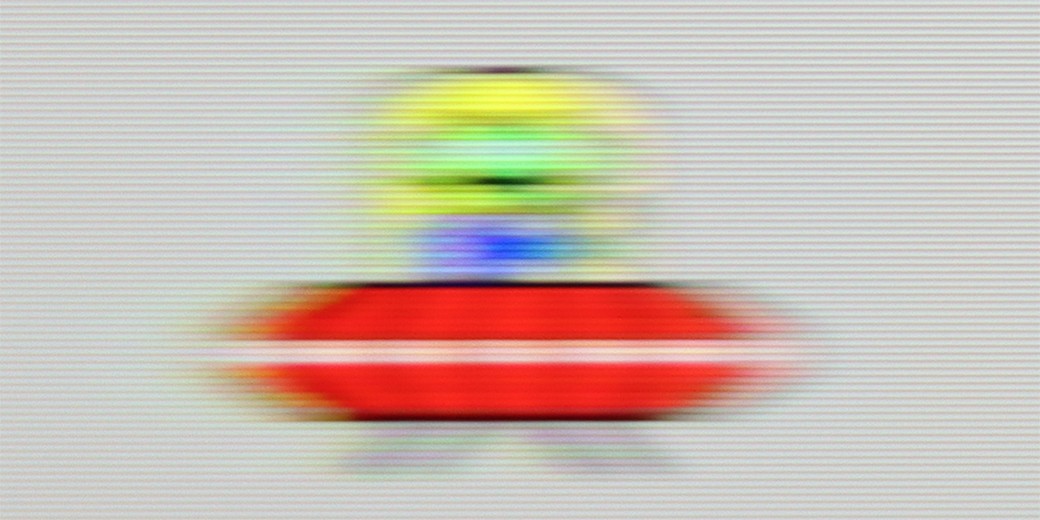
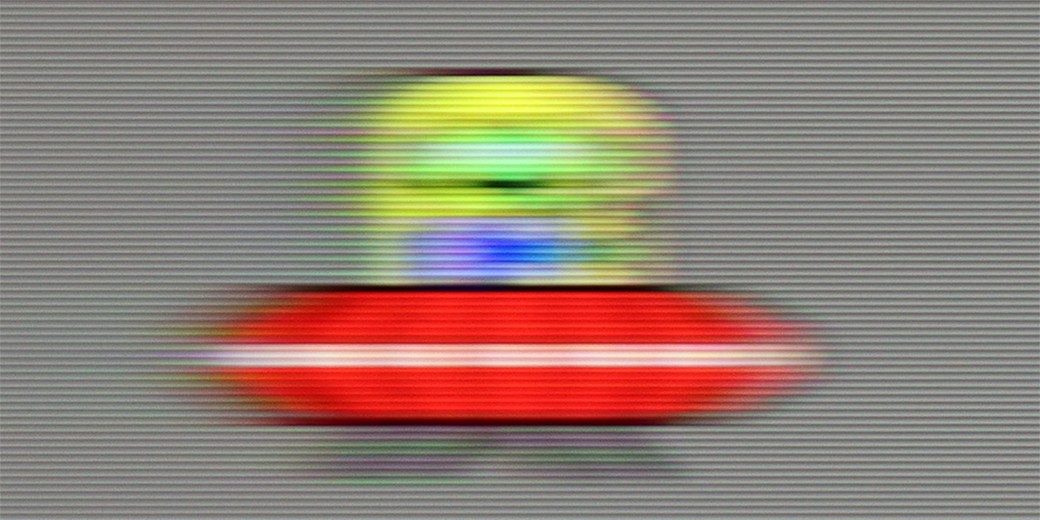
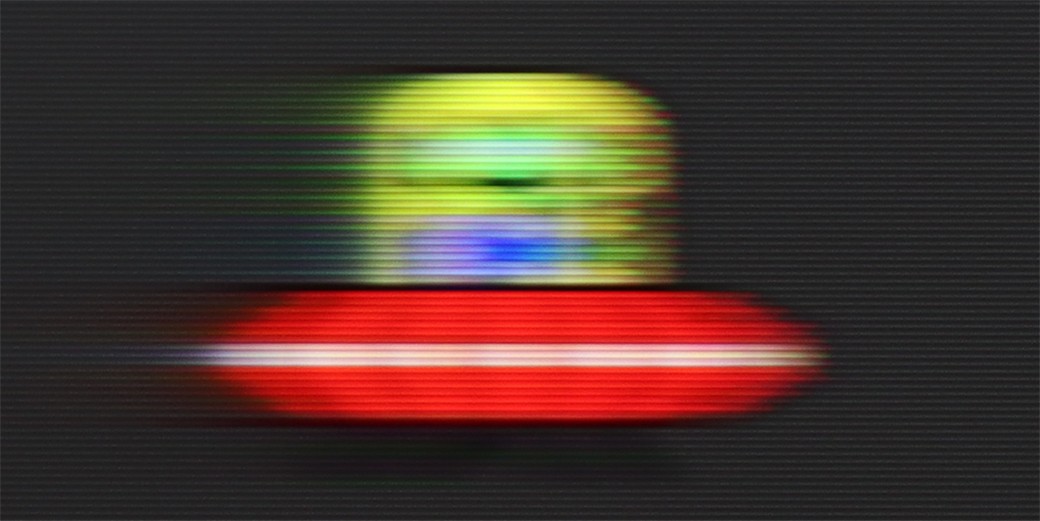

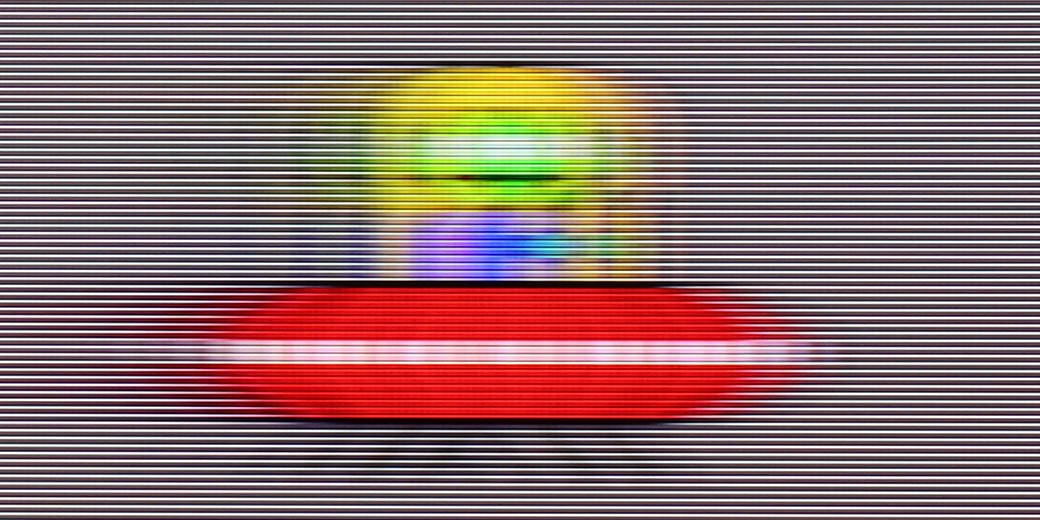
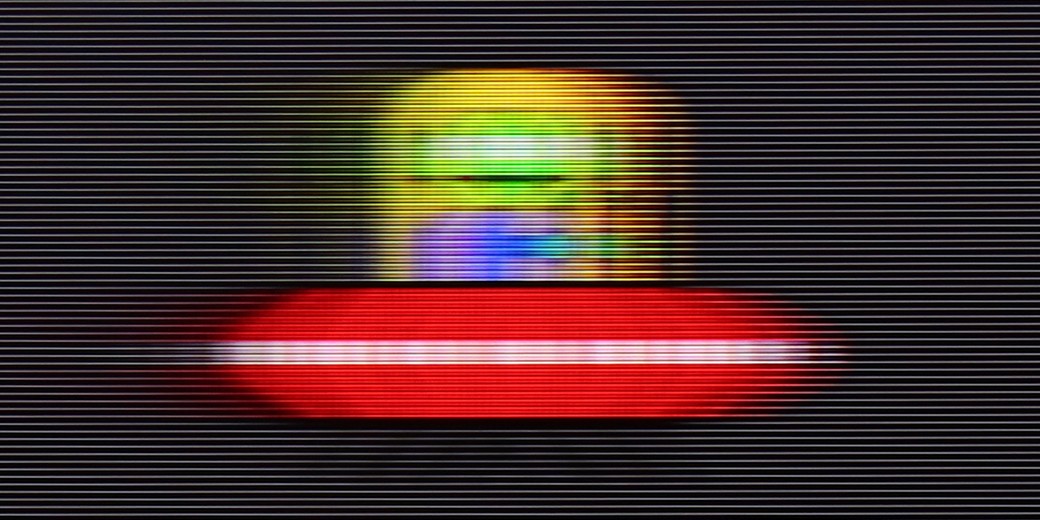
Blur (BFI function enabled):



The issue of fluidity and sharpness of the image in motion is inextricably linked to a fundamental parameter of the matrix, and in the case of the TCL P7K/P79K, we are dealing with a panel with a native refresh rate of 60 Hz. This specification defines its capabilities from the outset and makes it difficult to unequivocally recommend it to enthusiasts of dynamic sports broadcasts. During fast camera movements, the image loses sharpness, and the panel also shows a slight tendency to smearing, which may be noticeable to more sensitive viewers. Fortunately, not everything in this aspect has been left to chance. The manufacturer has implemented a simple motion smoothing system, which is primarily used in film material recorded at 24 or 30 frames per second. Thanks to a dedicated slider, users can decide for themselves the final character of the motion – from maintaining a fully cinematic, slightly juddery image to achieving a very smooth, almost theatrical effect. It is a simple but effective tool that allows users to tailor the viewing experience to their own preferences.
Due to the applied 60 Hz matrix, it is difficult to call the Q8F a television designed for gaming or watching sports. The panel is not particularly fast, which makes motion blur noticeably visible. If you were hoping for spectacular, even 'stadium-like' experiences during broadcasts, you may feel slightly disappointed. Fortunately, in the case of films and series, Samsung has not abandoned the motion blur reduction feature. This is nothing but a motion smoother that allows you to improve the fluidity of productions recorded at 24 or 30 frames per second. This way, you can decide for yourself whether you prefer a smoother, 'television' image or to maintain a cinematic character. It all depends on the viewer's preferences, and the ability to adjust this parameter is undoubtedly a plus.
Console compatibility and gaming features
6.7/10
3.7/10
- ALLM
- VRR
- VRR range48 - 120Hz
- Dolby Vision Game Mode
- Correct implementation of HGIG
- 1080p@120Hz
- 1440p@120Hz
- 4K@120Hz
- Game bar
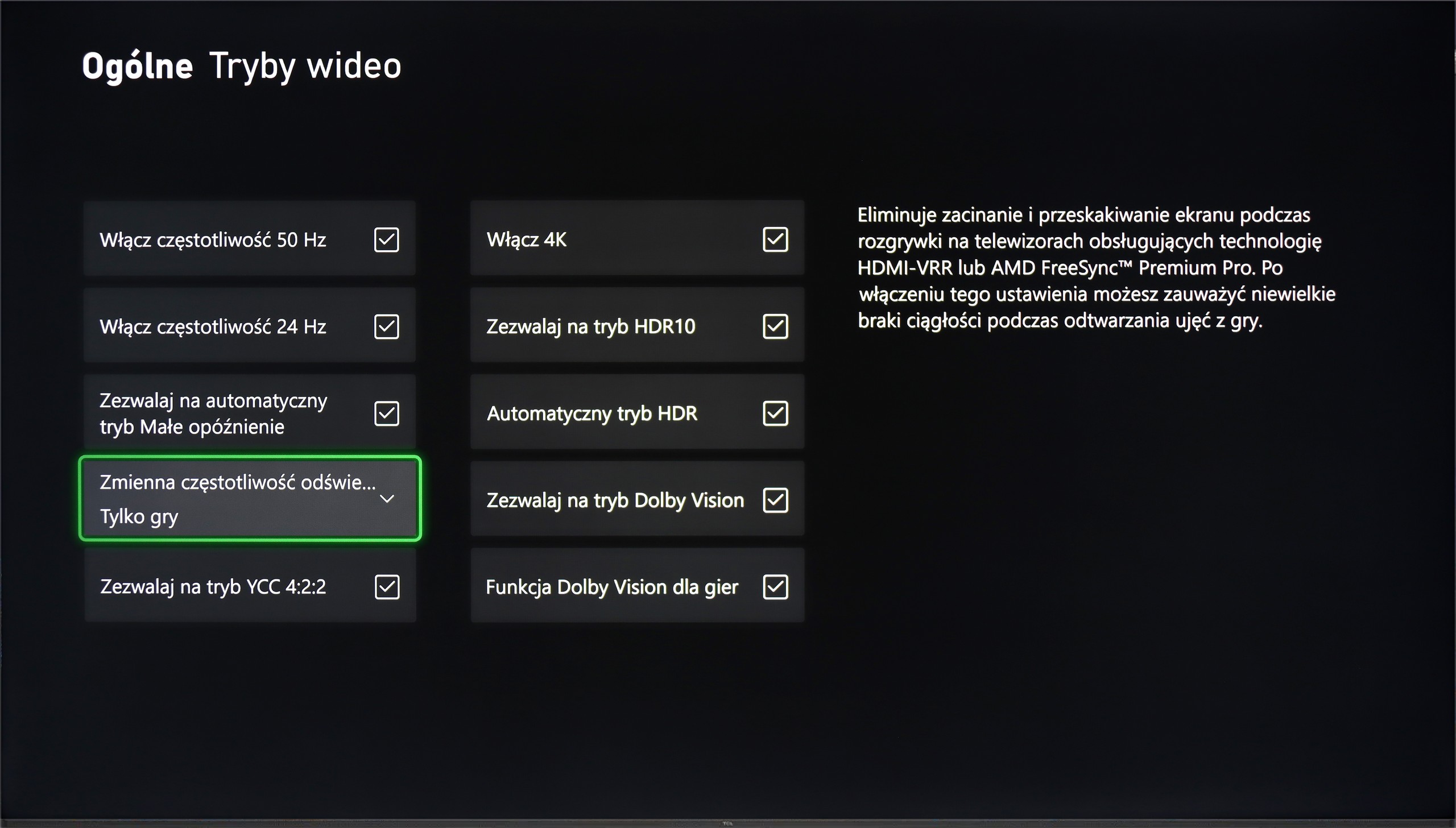
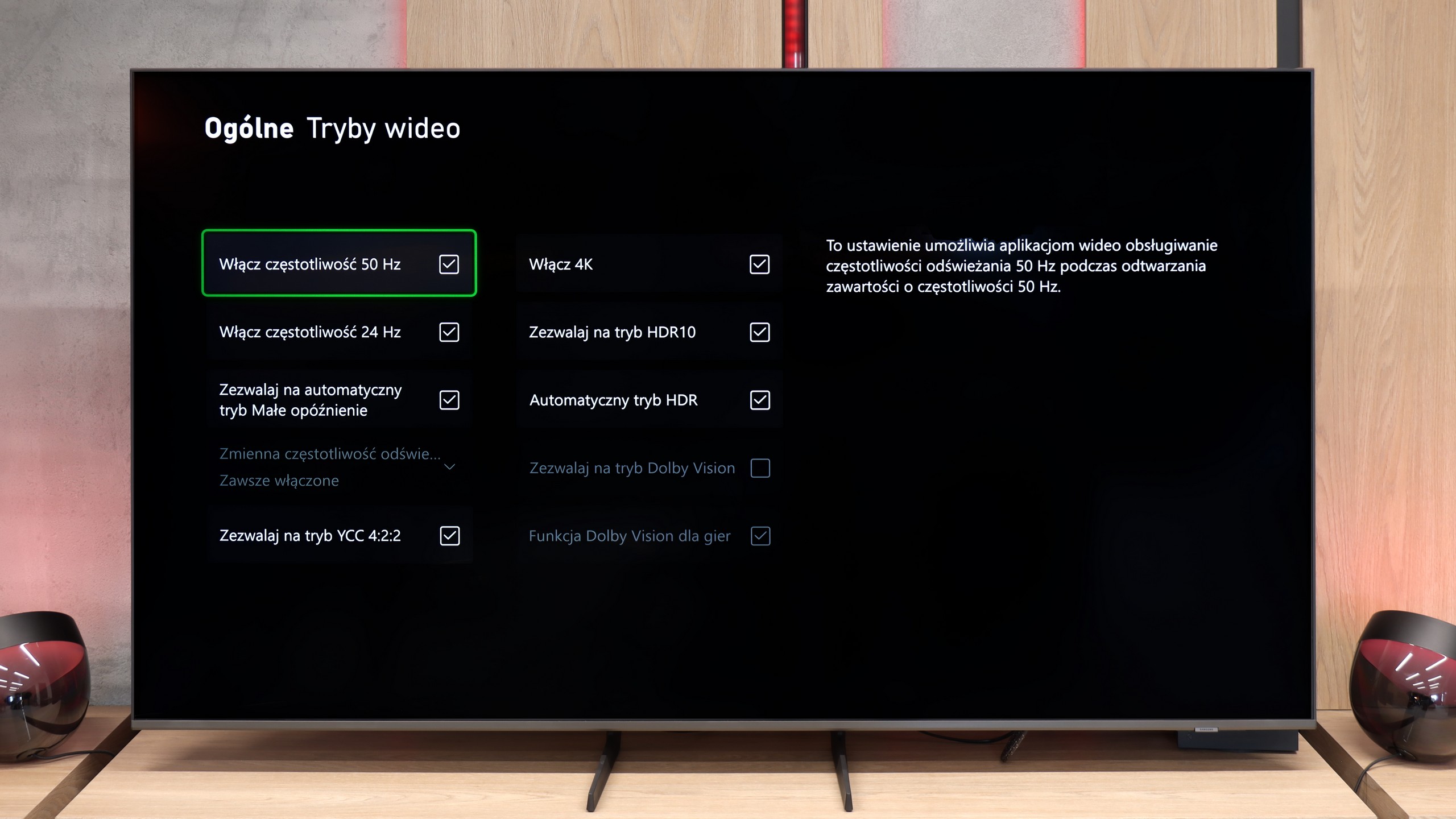
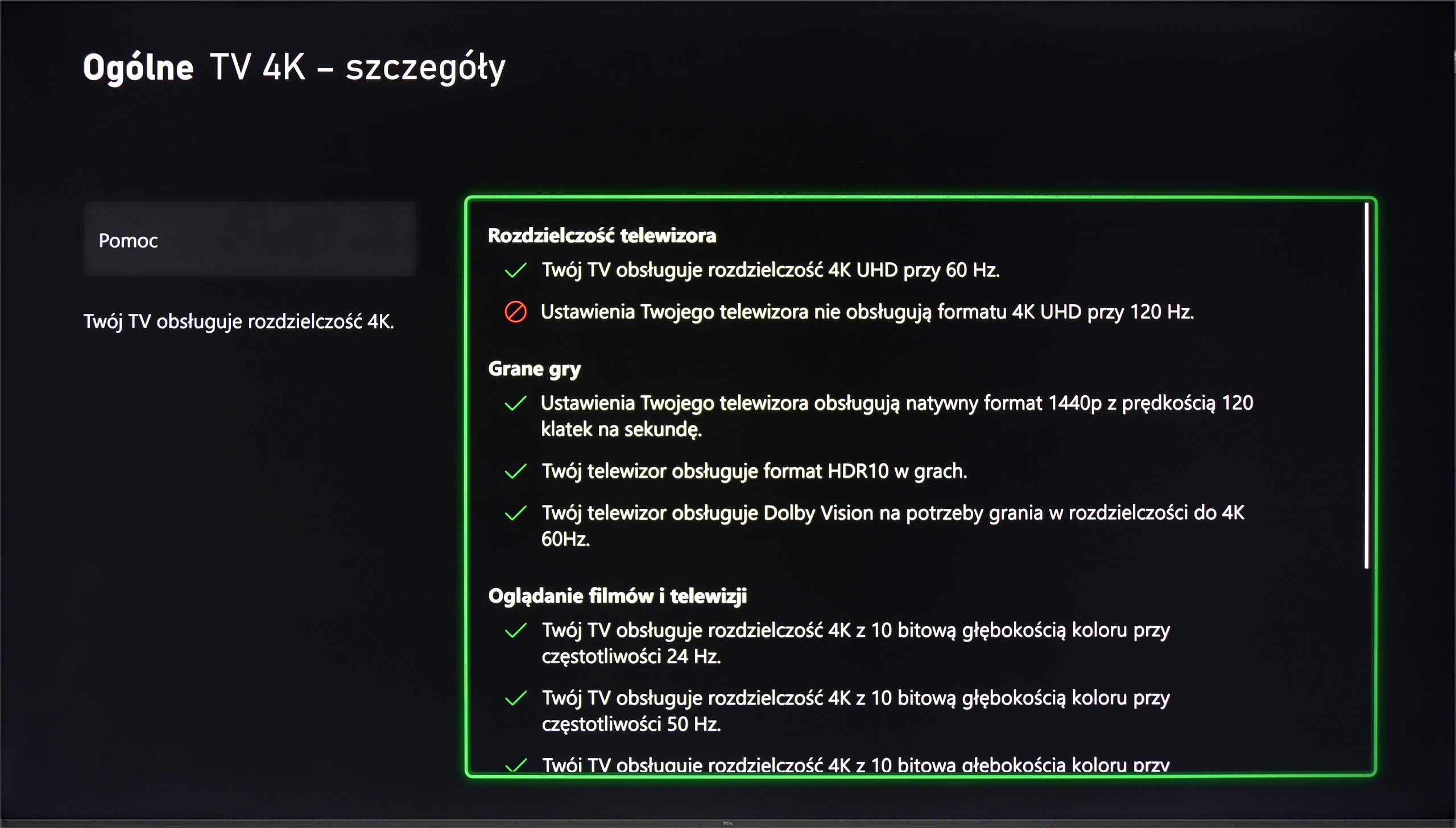
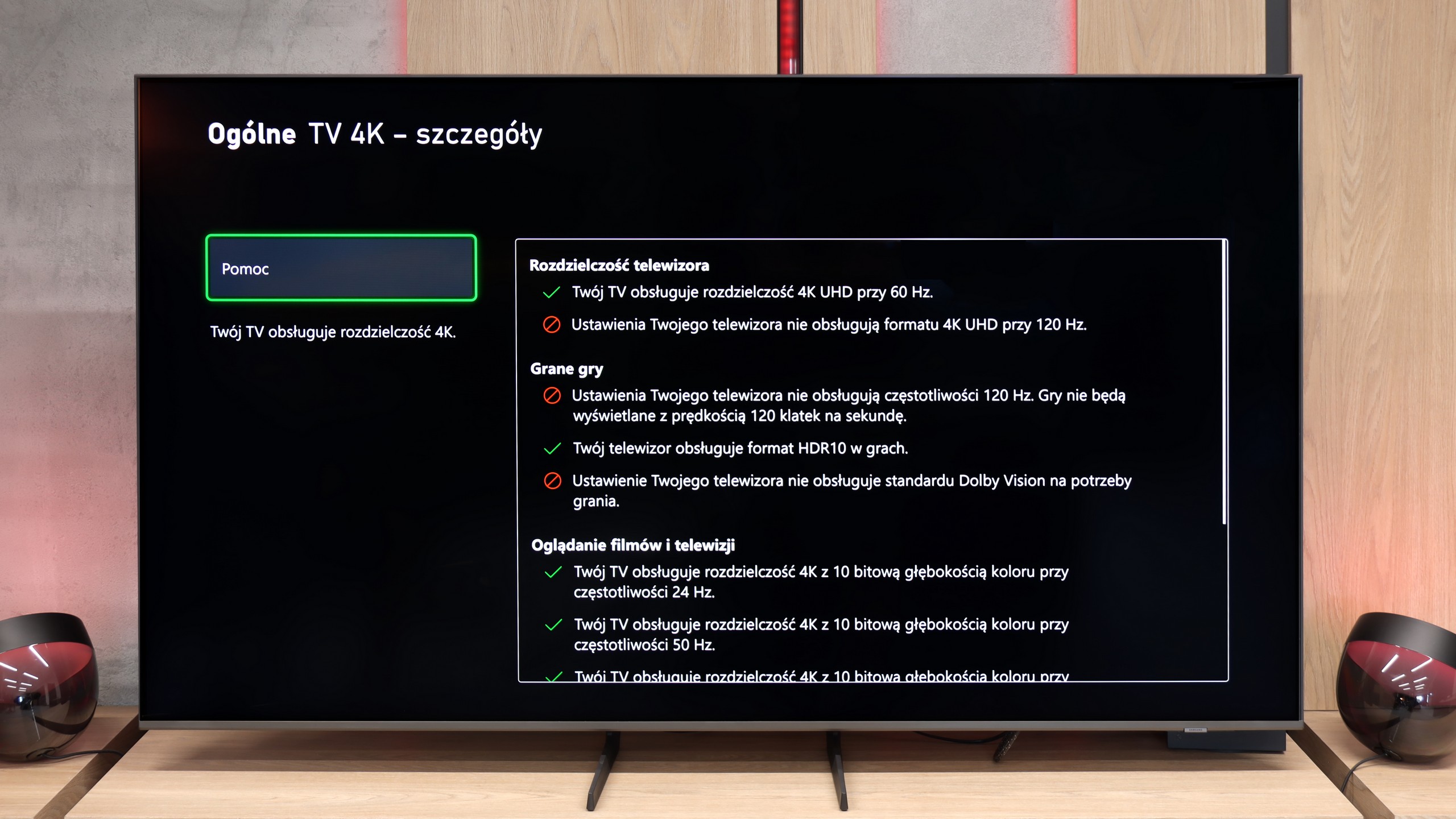
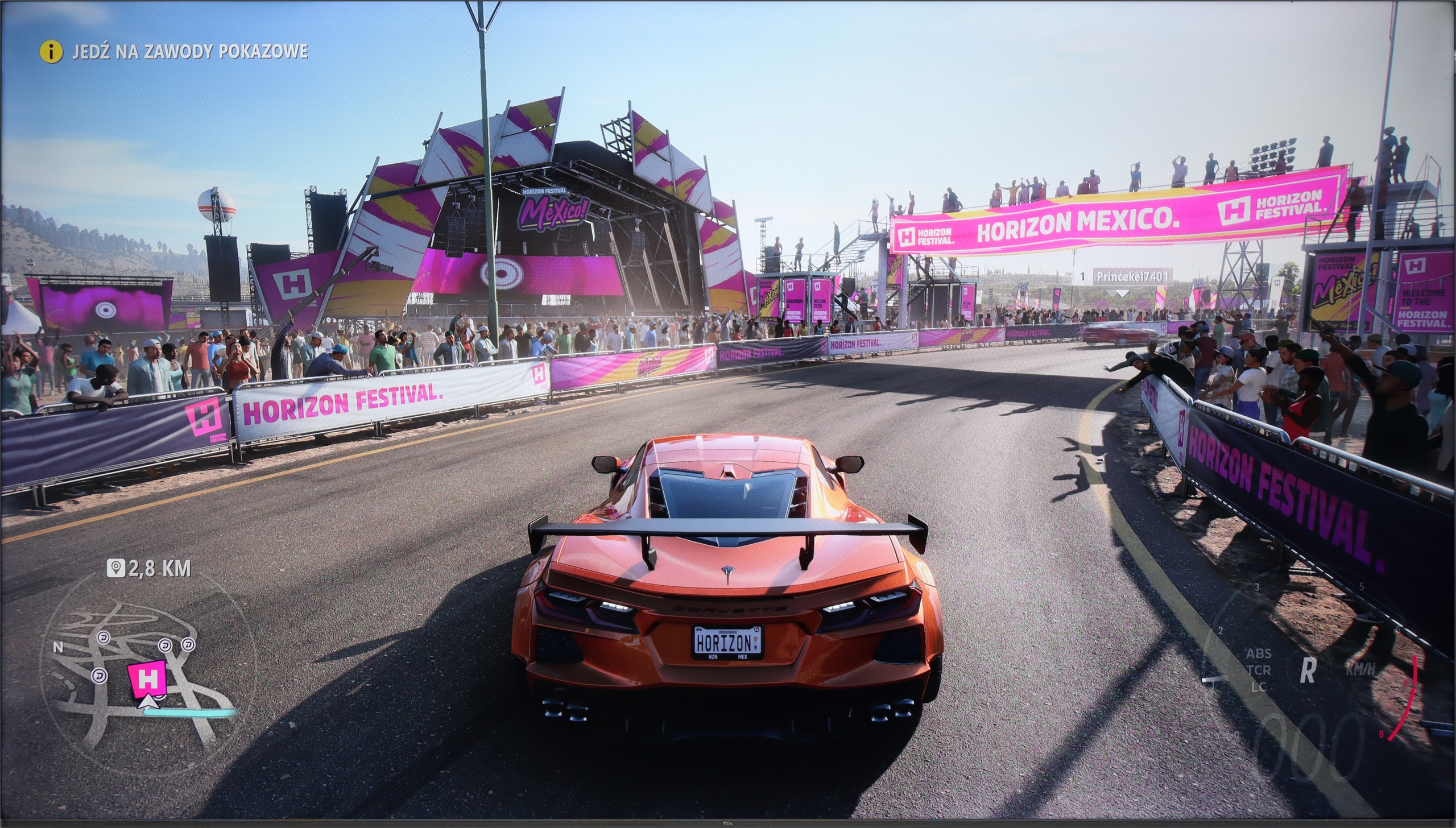
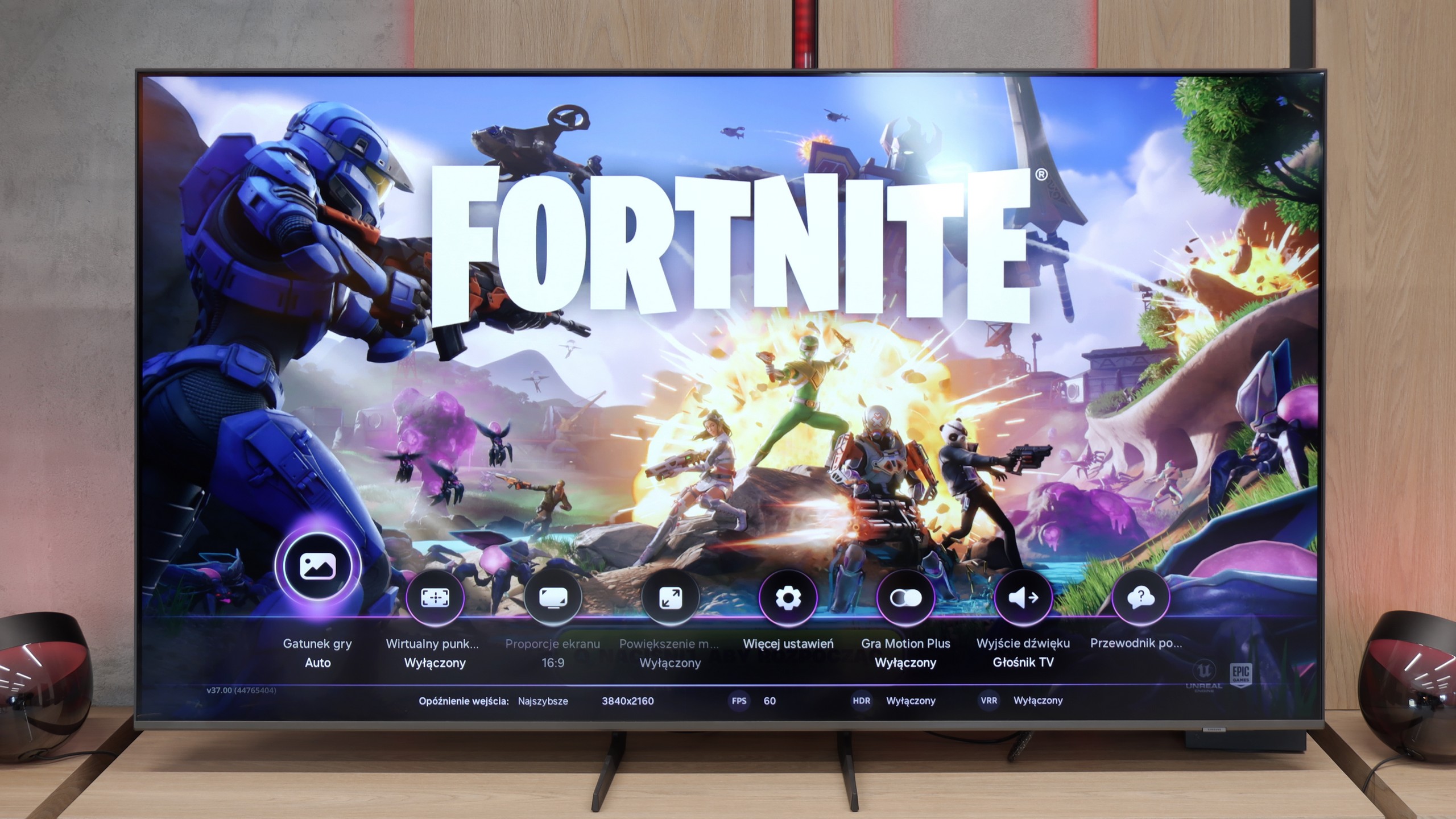
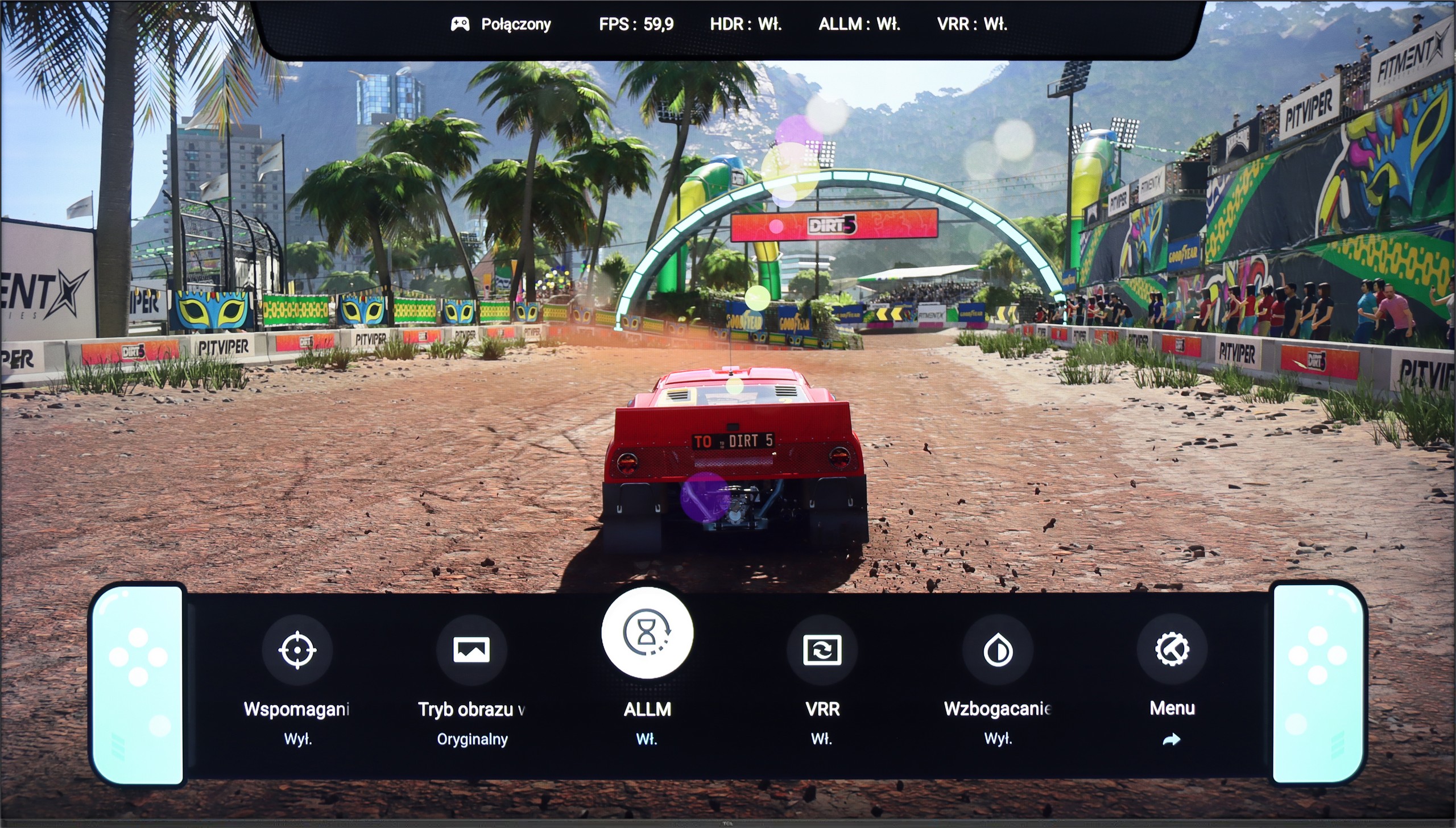
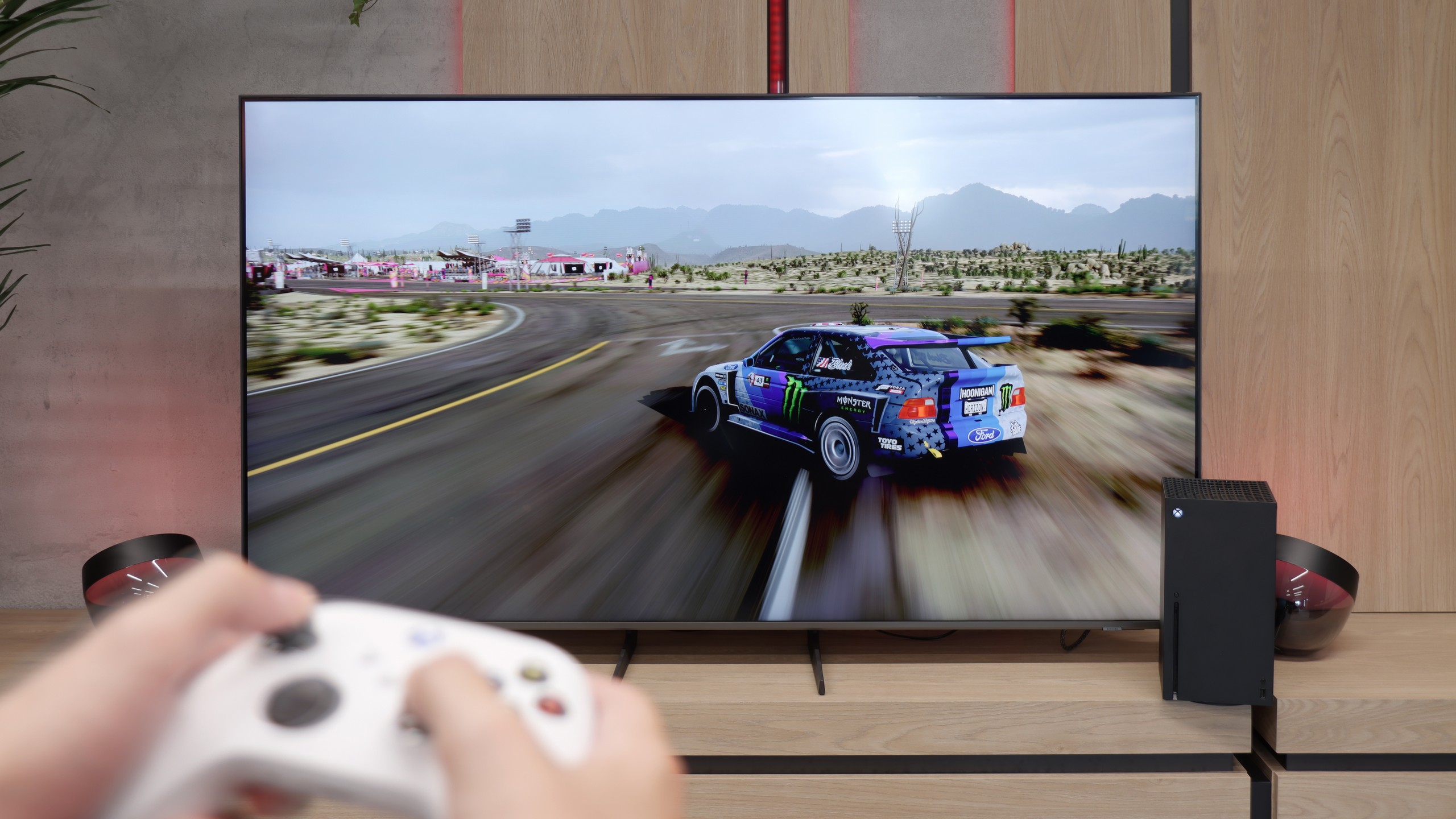
Although on paper the native 4K@60Hz panel might suggest that the TCL P7K/P79K is not a television tailored for gamers, the reality is surprisingly different. On the contrary, the manufacturer has ensured a rich package of features that make it a very friendly companion for next-generation consoles. Onboard, we find key technologies such as ALLM, which provides automatic switching to low latency mode, and VRR, or variable refresh rate, which eliminates screen tearing. The list is complemented by support for Dolby Vision Gaming and a simple yet functional Game Bar. However, the real and extremely pleasant surprise is something else. It turns out that the television easily supports a high refresh rate signal of 120 Hz but at lower resolutions – 1080p and 1440p. This is fantastic news for console owners, who know well how rarely games run in native 4K at a full 120 frames per second. The ability to choose between higher resolution and doubled smoothness is therefore an extremely sensible compromise.
In summary, although the P7K/P79K may not be the target screen for the most passionate tournament players, for the casual or occasional console user, it offers a package of options that is hard to find among many competitors at this price.
It is not entirely clear what Samsung has meddled with this year regarding its televisions, but the Q8F is not free from all the confusion surrounding updates and shortcomings. While its older cousin, the Q67D, could still be recommended to casual gamers with a clear conscience, it is difficult to find a reason to do so here. Apart from the automatic game mode and the attractively designed Game Bar, we receive practically nothing that could attract gaming enthusiasts. The lack of proper HGiG implementation is a significant issue, especially since after the 1126 update, the feature simply disappeared. The situation regarding VRR is even worse. Although it is listed in the manufacturer's brochures and appears in the Game Bar, we were unable to activate it. The Xbox Series X console did not allow activation at all, and the option remained greyed out and inactive. It is hard to praise such a television even to casual gamers, which is a pity, as Samsung had a strong bargaining chip in the gaming segment for years.
Input lag
9.9/10
9.9/10
SDR
HDR
Dolby Vision
Complementing this rich package for gamers is a parameter that has a direct impact on comfort and performance in gameplay – input lag. Already in native 60 Hz mode, the television boasts an excellent result of just 15 ms. However, the real magic happens when switching to 120 Hz mode, where the lag drops nearly by half, reaching values below 10 ms. Such responsiveness ensures that every command from the controller is translated to the screen in the blink of an eye, which will be appreciated not only by professionals but by anyone who values smooth and direct interaction with the game.
Fortunately, in terms of gaming, Samsung did not attempt to 'enhance' anything and the input lag remained at an excellent level. Results hovering around 10–15 ms mean that delays are practically imperceptible. The controls are instant, and the responses from the console or computer appear on the screen with no noticeable delay. In this respect, the Q8F performs excellently and it is difficult to fault it in any way.
Compatibility with PC
2/10
6/10
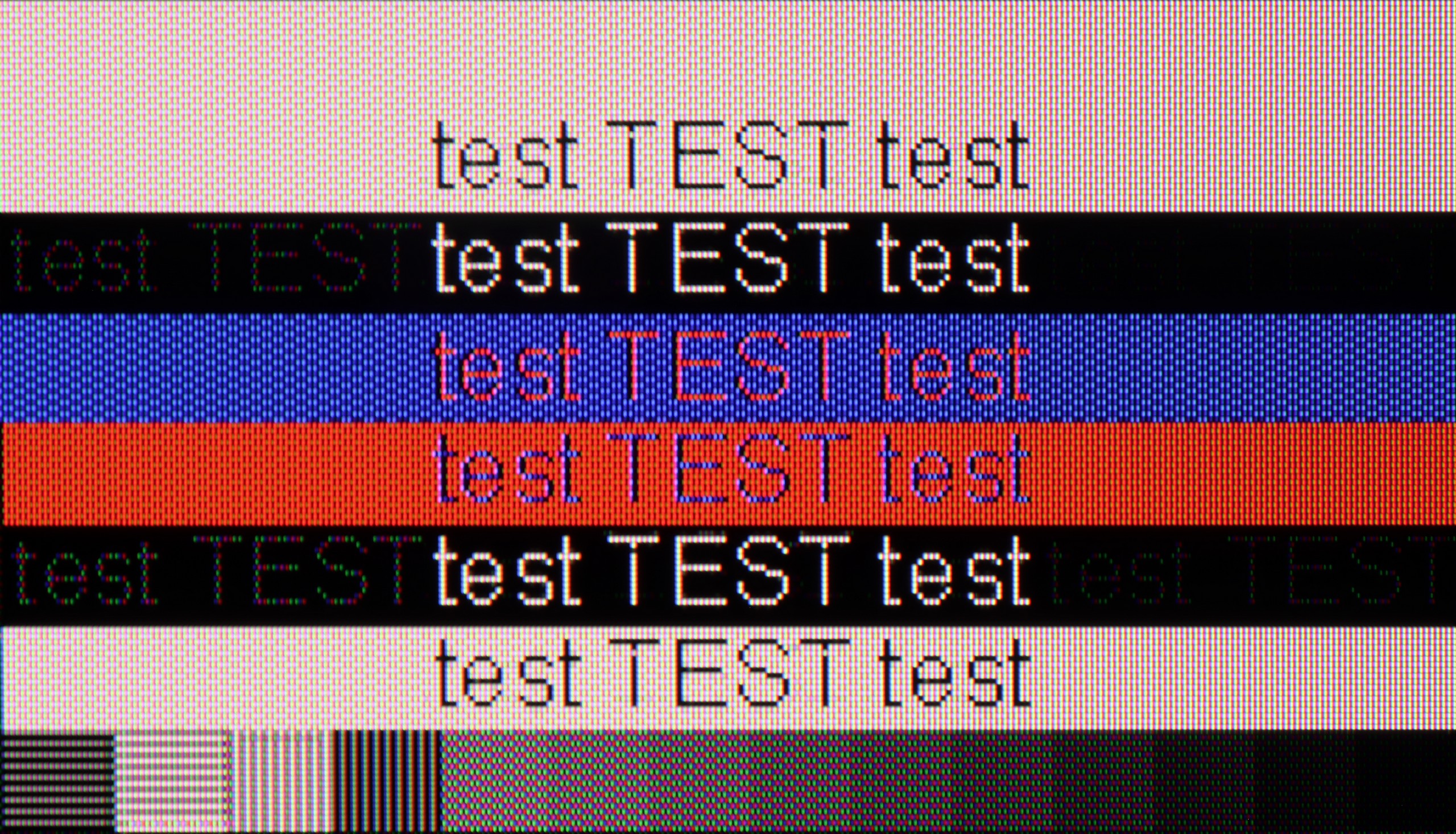
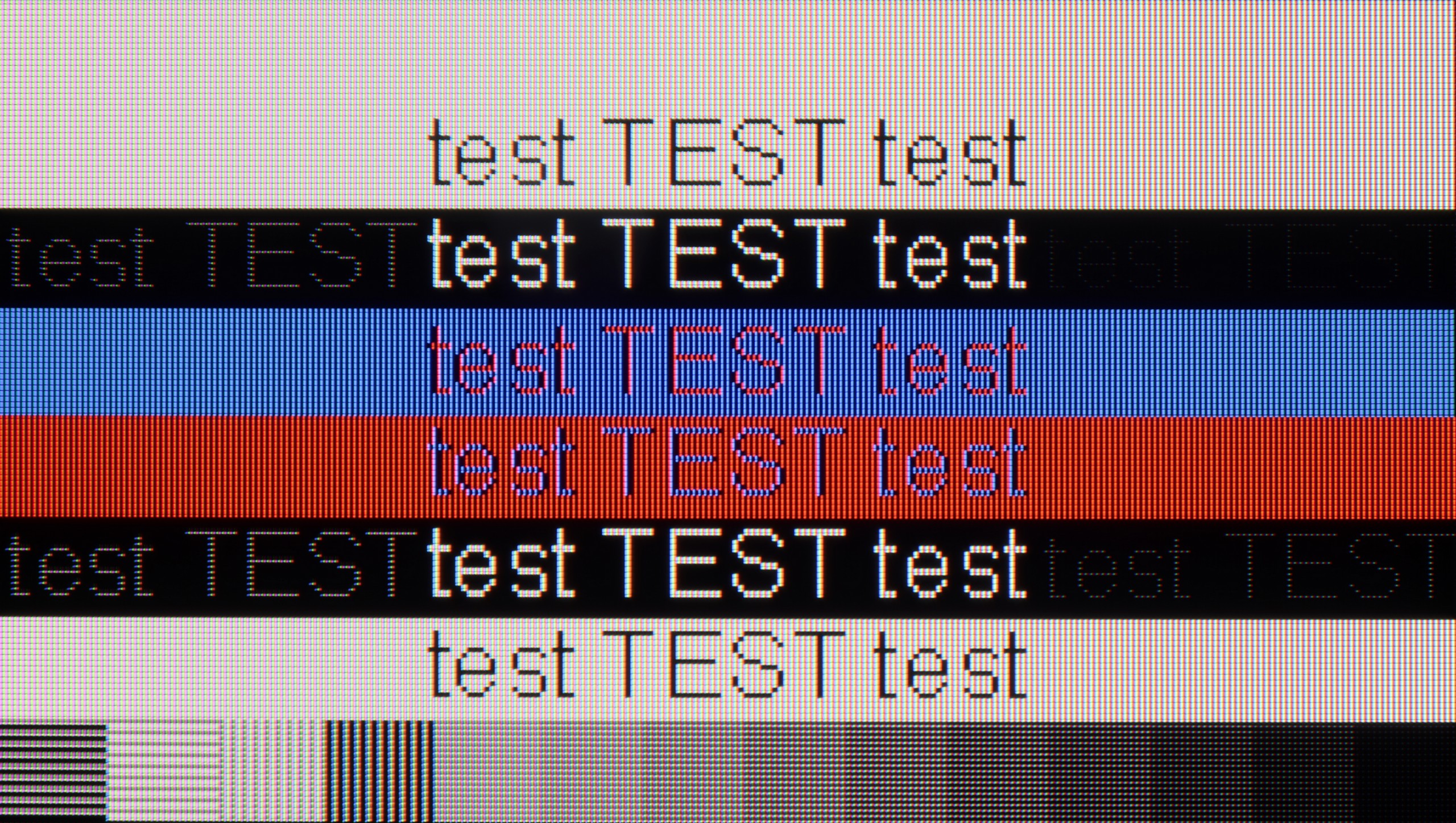
We finally come to an area that can undoubtedly be described as the biggest Achilles' heel of the TCL P7K/P79K – its compatibility with PC. It is paradoxical in that, on paper, everything looks promising. The presence of G-Sync and support for high refresh rates at lower resolutions might suggest that it would also be a great monitor. Unfortunately, practice brutally verifies these assumptions. The key issue is the lack of support for full 4:4:4 chroma sampling. In everyday use, this translates to terrible font rendering quality – these, especially the coloured ones, become jagged, surrounded by artefacts, and simply poorly legible. This is not the end of the story, as in PC mode, the problem of aggressive dithering also becomes evident, giving the entire image an artificial, overly digital appearance. The only consolation in this situation is the fact that in games we can take advantage of the additional hertz and G-Sync technology, but these are not advantages that could compensate for the fundamental deficiencies in displaying a static interface. The verdict is therefore clear: while as a screen solely for gaming on PC it might still hold its own, as a monitor for work or browsing the internet, the P7K/P79K simply performs poorly.
Although gaming on the Q8F is not particularly attractive — there are no modes with lower resolution and higher refresh rates, and it also has issues with VRR (G-Sync) as well as a limitation of the panel to 60 Hz — it performs excellently as a work monitor. The readability of the fonts is very high, so working with text or Excel spreadsheets is a pure pleasure. In this regard, the Q8F can be a real alternative to a large office monitor.
Viewing angles
3.2/10
3.4/10
When it comes to viewing angles, we enter the territory where VA panel technology dictates unavoidable conditions. As expected, this is the weak point of this model. It is enough to move away from the screen axis to observe a gradual degradation of the image: colours begin to fade, contrast noticeably drops, and black loses its depth. In direct comparison with IPS panels, which are renowned for their generosity in this aspect, the VA panel must concede superiority to its competitor. Is there any upside to this? Paradoxically, yes. Poor viewing angles are, after all, the price we consciously pay for the fundamental advantage of this technology – a significantly higher native contrast and deeper blacks when viewed head-on. Thus, it can be said that this is a television that favours viewers sitting in the 'ideal' spot, offering them a maximally vibrant image at the cost of versatility.
The viewing angles on the Q8F can be described as average, which is due to the use of a VA panel. When watching the television straight on, the picture looks very good, but just moving slightly to the side causes it to start fading and losing contrast. Colours gradually lose their saturation, and black takes on a shade of grey. This is a typical limitation of this type of panel, and one cannot expect miracles here. Compared to IPS panels, the difference is clear — although they are weaker in contrast, they hold colour better at an angle. The Q8F will perform best in a classic setup, where viewers are seated centrally in front of the screen. If you plan to watch with a larger group, with people spread out across the living room, the effect may not be as satisfying.
TV efficiency during daytime
4.6/10
5.6/10
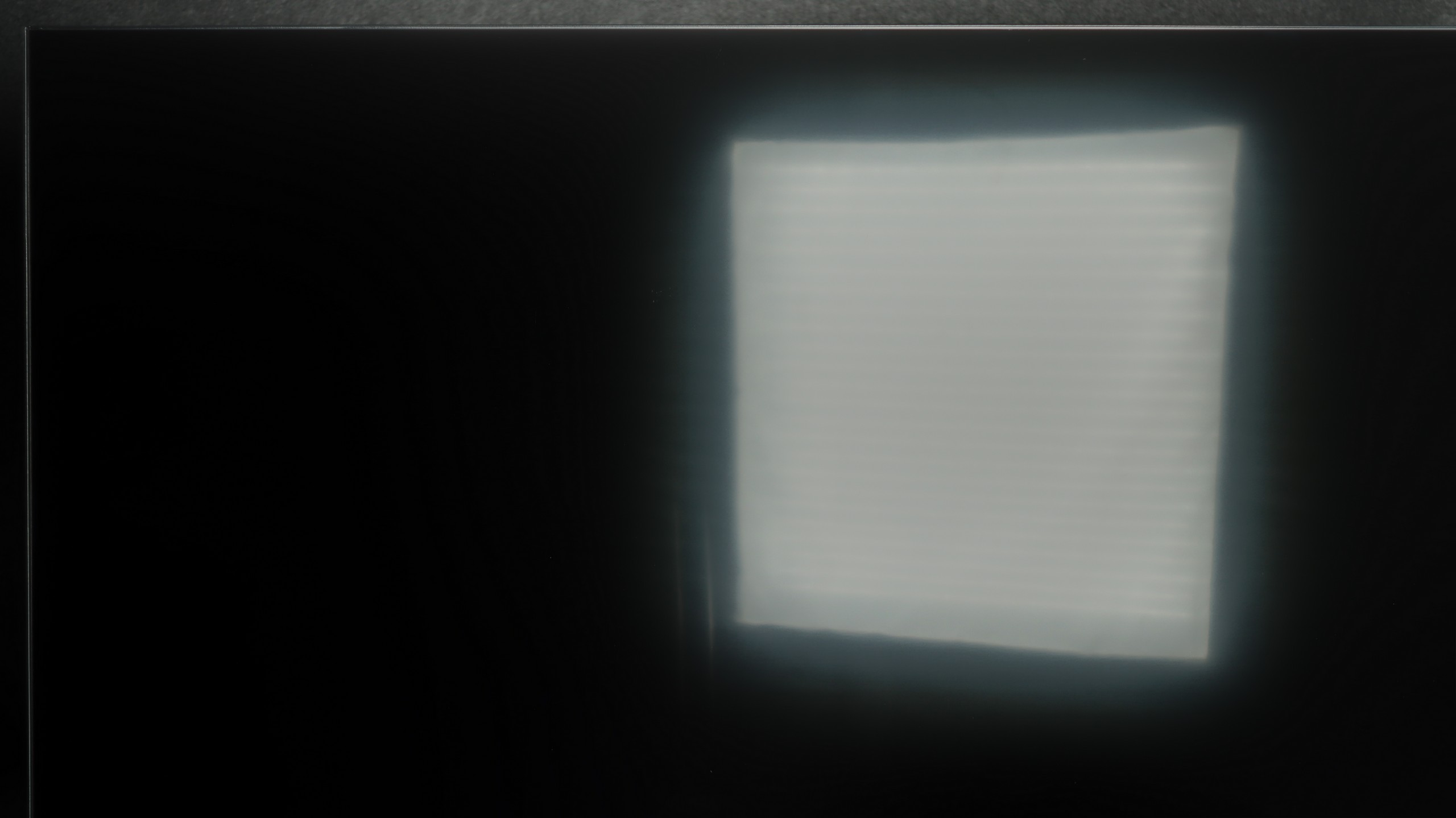
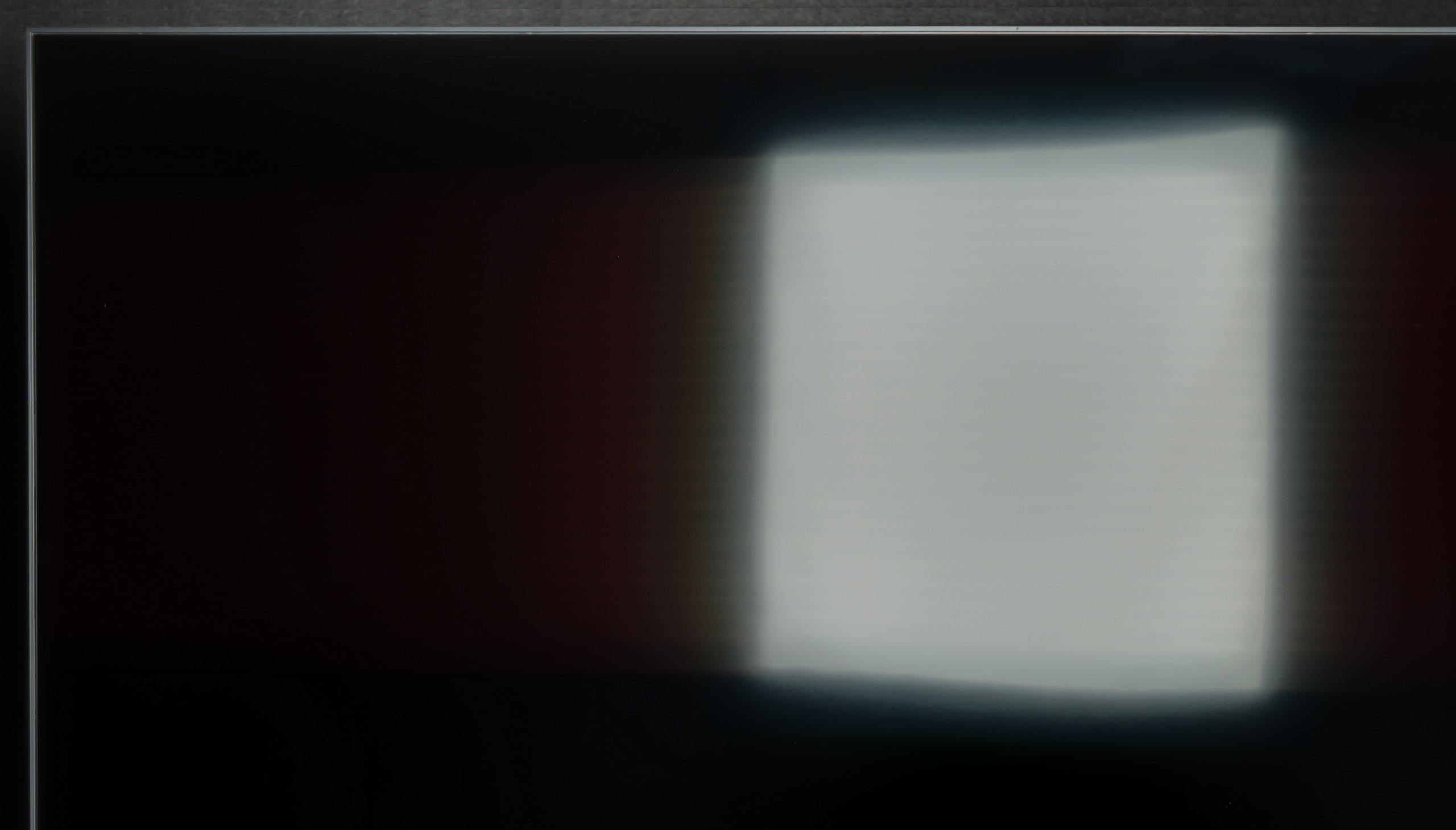
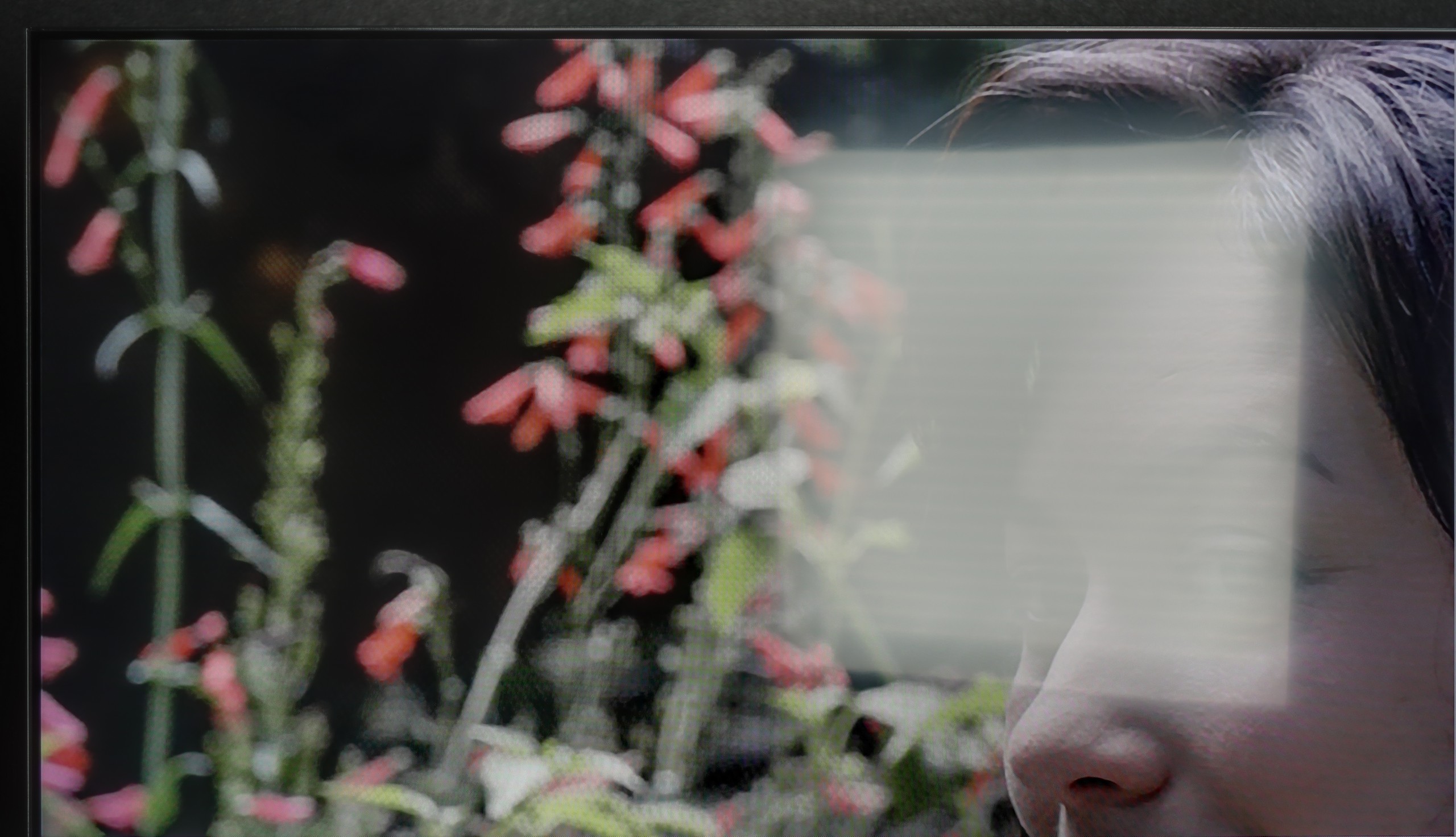
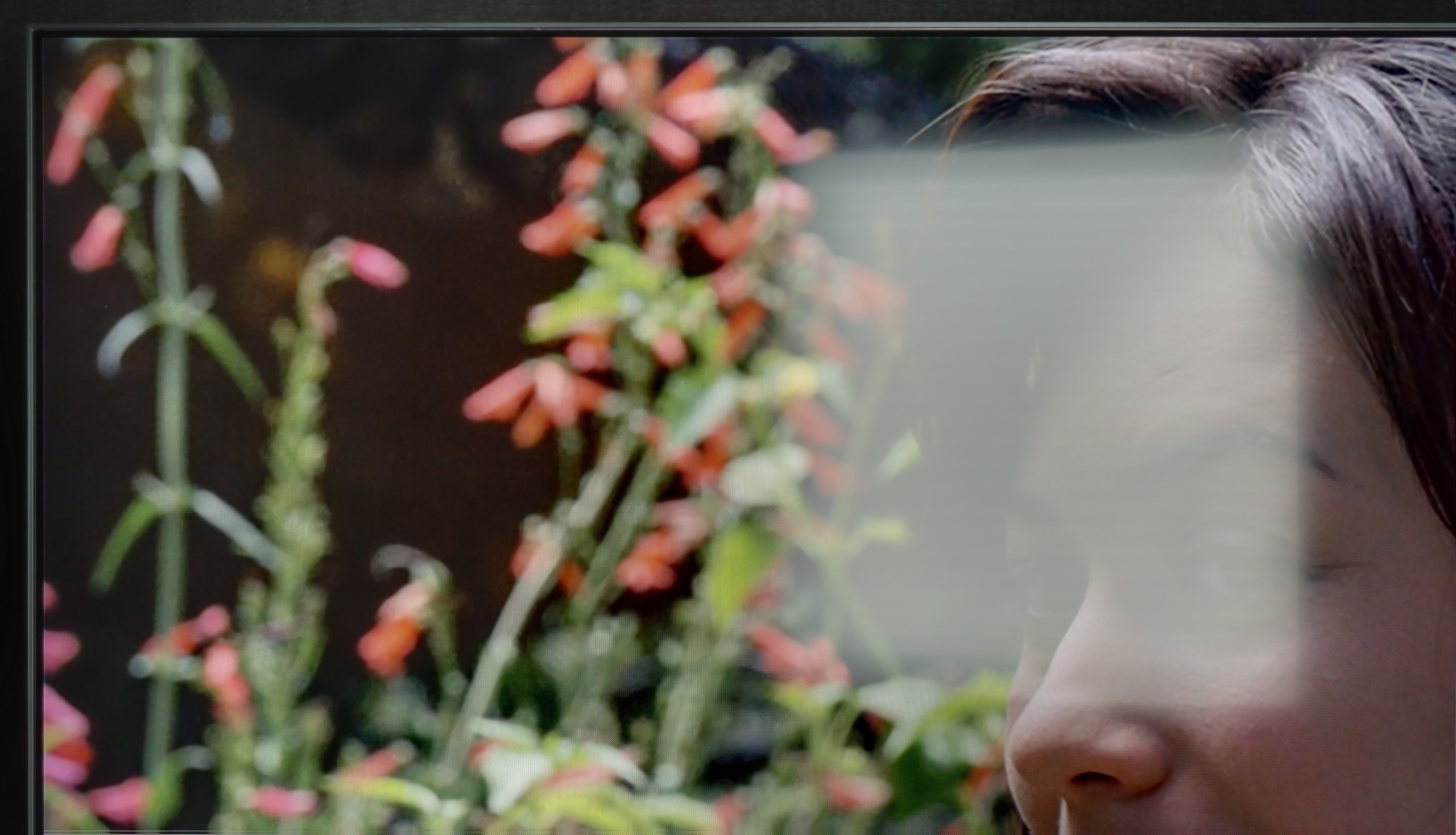
Matrix brightness
Average luminance SDR
Samsung Q8F: 430 cd/m2
TCL P7K / P79K: 299 cd/m2
The final practical test for any television is its daily performance in daytime conditions when it has to compete with ambient light. In this competition, the TCL P7K / P79K starts with a certain advantage in the form of a satin finish on the screen. Its structure handles direct reflections quite decently, diffusing them and protecting the image from excessive fading of colours or lightening of blacks. However, the passive struggle against reflections is one side of the coin. The other is the active ability to 'break through' bright surroundings, and here one of the model's key limitations comes to light. The previously mentioned peak brightness of around 300 nits is simply too low to ensure a fully comfortable and dynamic viewing experience in a brightly lit living room. In such conditions, the image may lack punch, and scenes with lower brightness can lose their clarity.
The Q8F performs quite well during the day. Its brightness hovers around 450 nits, which proves to be a sufficient level for moderately bright living rooms. It is not a television that will win a battle against sunlight streaming directly through the window, but under typical home conditions, the picture remains clear and appealing. A significant advantage is the satin finish of the panel, which effectively reduces reflections and helps maintain colour saturation even when the room is bright. As a result, watching series during the day or evening sports broadcasts with the lights on poses no problems. The Q8F does not aspire to be a cinema television in full sunlight, but as an everyday screen in normal home conditions, it performs really well.
Details about the matrix
Subpixel Structure:
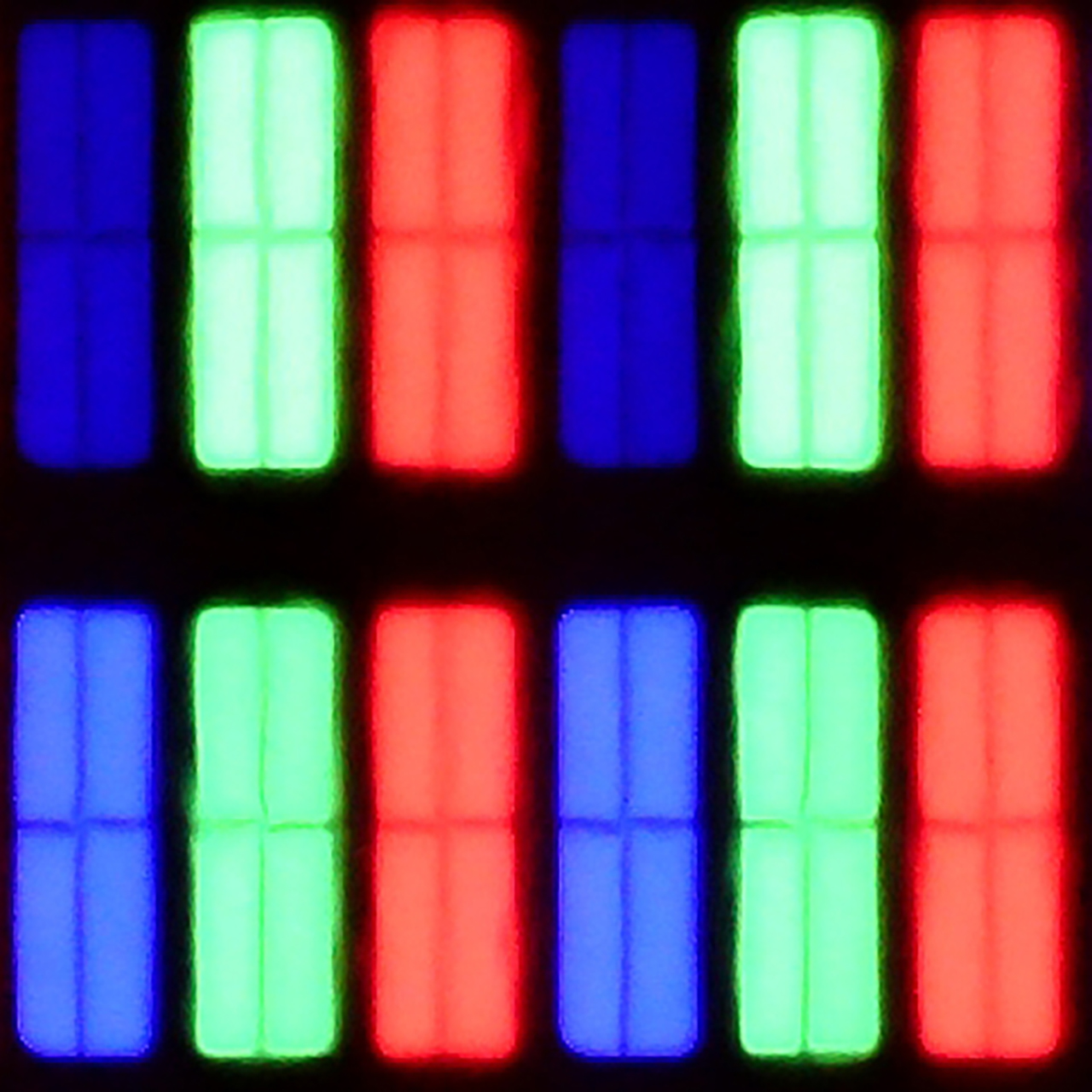
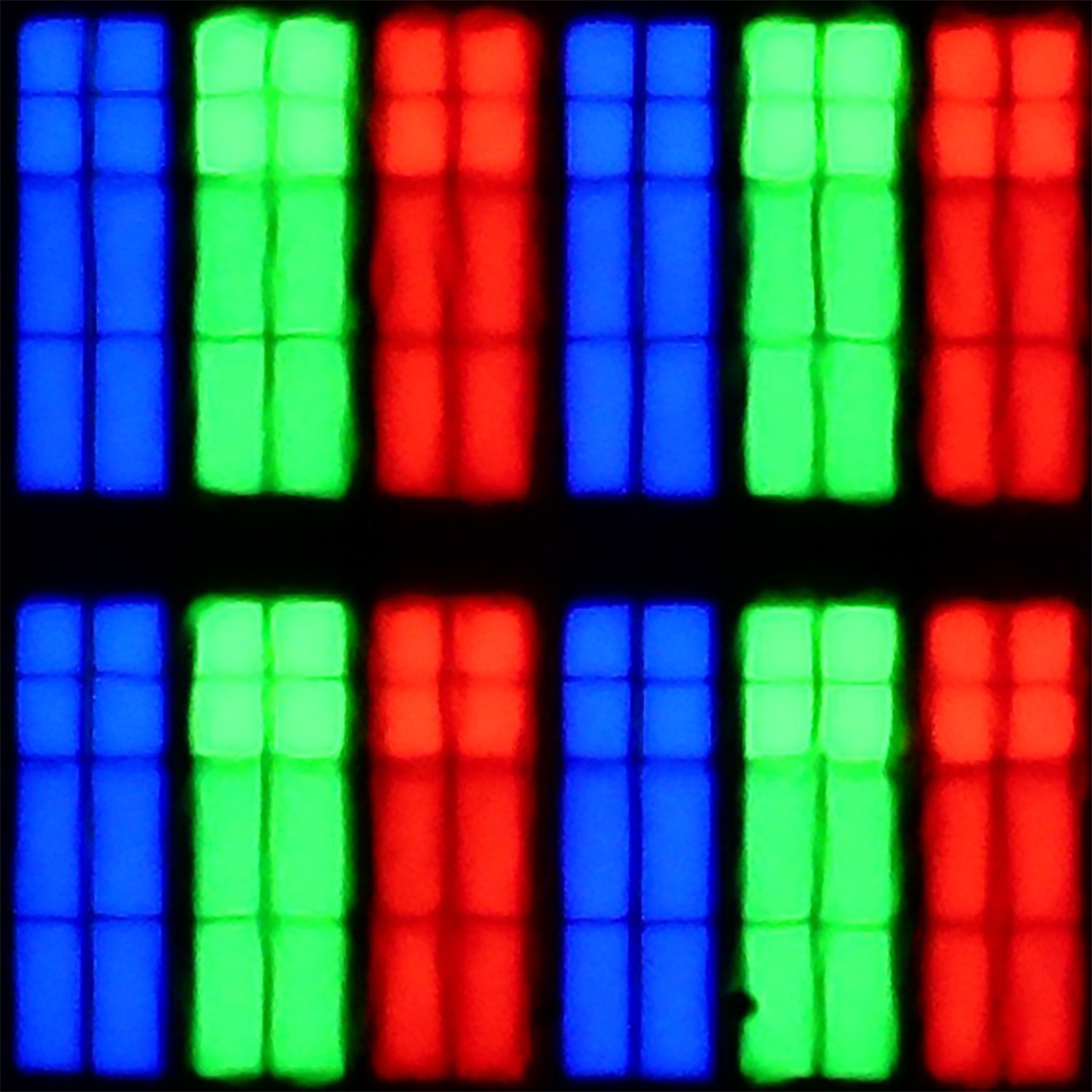
Panel uniformity and thermal imaging:
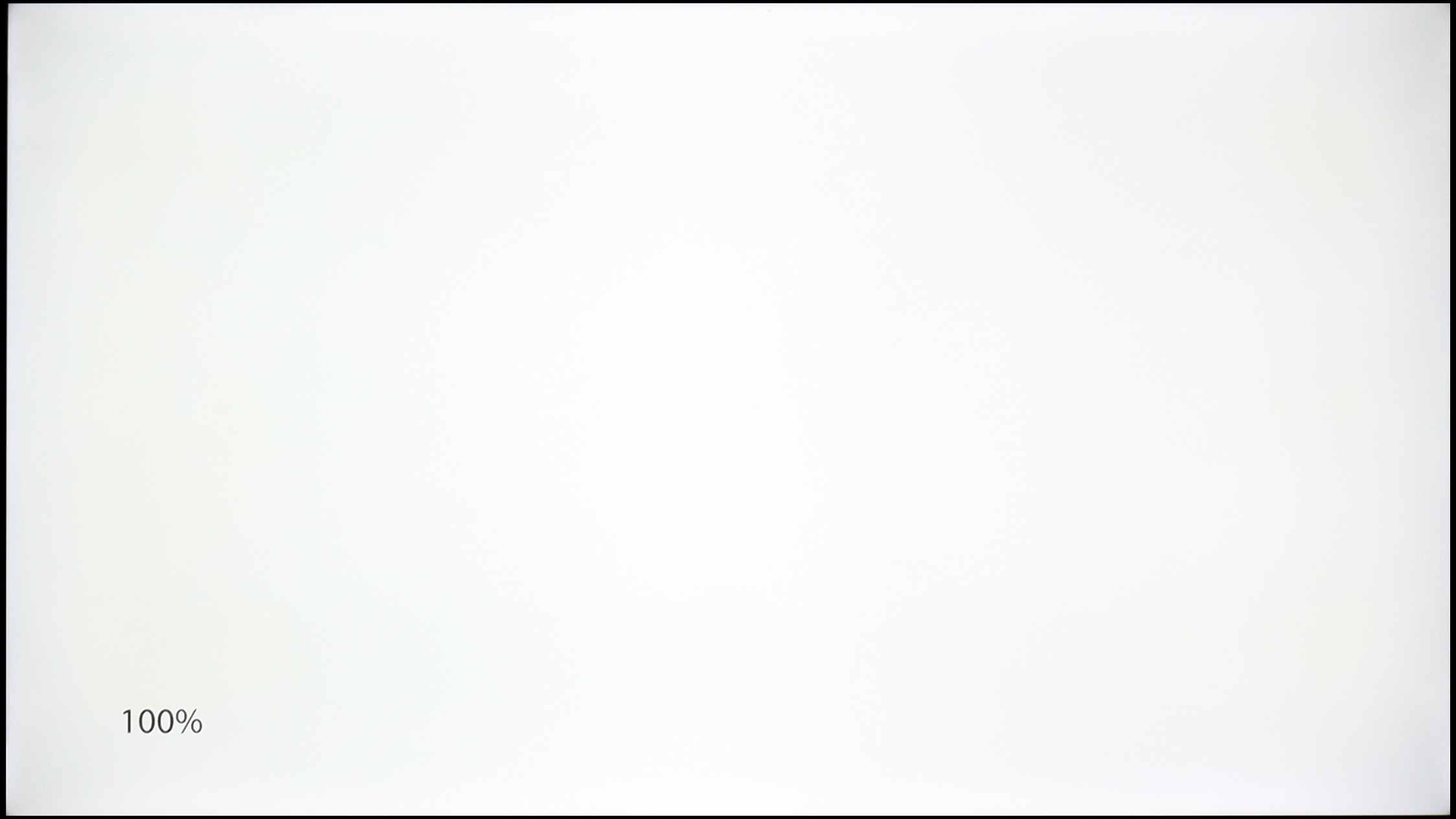
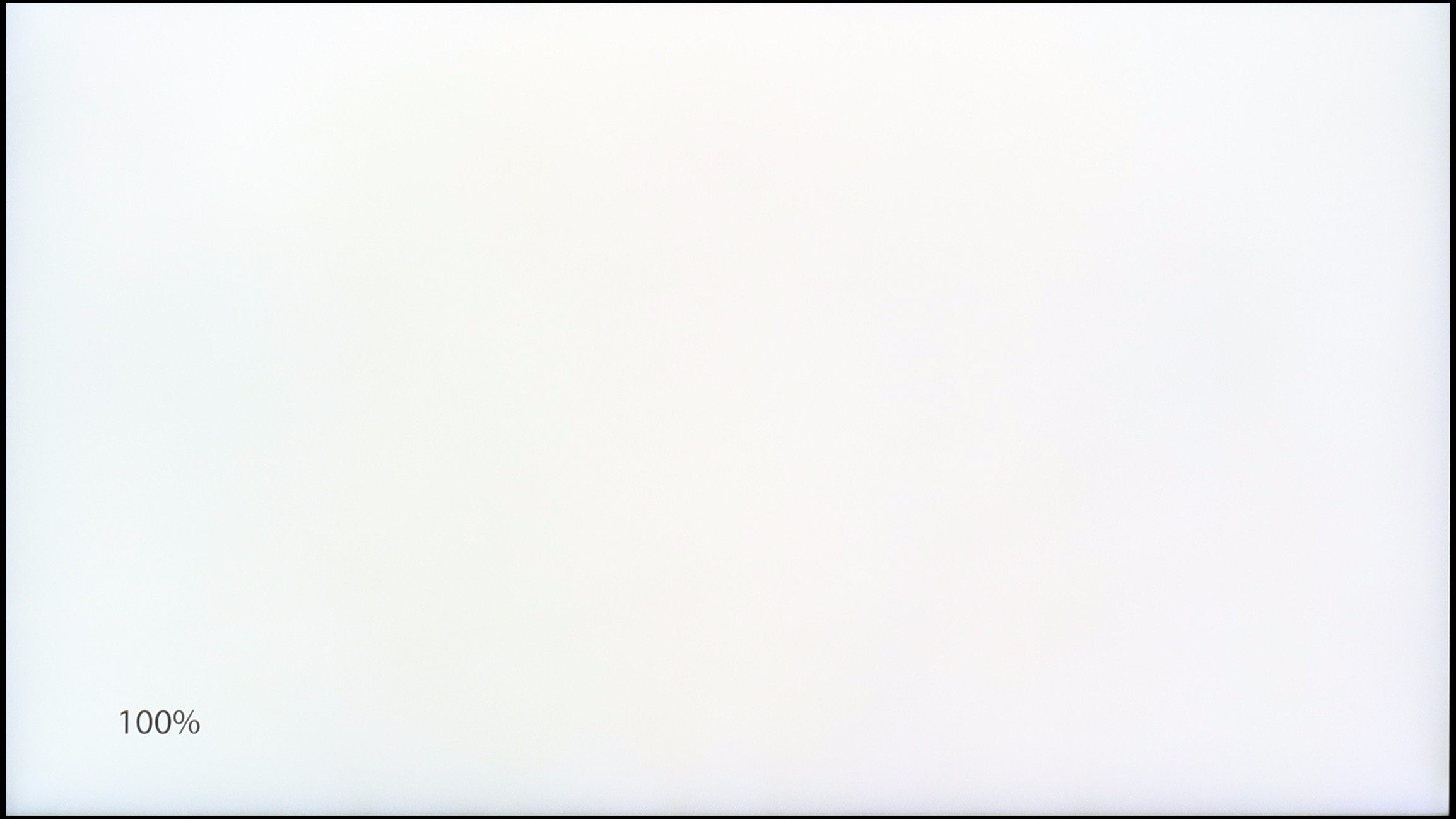
TCL P7K / P79K
Samsung Q8F
TV features
7/10
7.3/10
- HDMI inputs0 x HDMI 2.0, 3 x HDMI 2.1 48Gbps3 x HDMI 2.0, 0 x HDMI 2.1
- Other inputsToslink (Optical audio)
- OutputsToslink (Optical audio), eARC (HDMI), ARC (HDMI)Toslink (Optical audio), eARC (HDMI), ARC (HDMI)
- Network InterfacesWi-Fi 2.4GHz, Wi-Fi 5GHz, Ethernet (LAN) 100MbpsWi-Fi 2.4GHz, Wi-Fi 5GHz, Ethernet (LAN) 100Mbps
- TV receptionDVB-T, DVB-T2, DVB-S, DVB-S2, DVB-CDVB-T, DVB-T2, DVB-S, DVB-S2, DVB-C
Classic features:
- Recording to USB (terrestrial TV)
- Recording programming
- Picture in Picture (PiP)
- RF remote control (no need to aim at the screen)
- Backlit remote control
- Teletext
- Audio only mode
- Bluetooth headphones support
- Simultaneous Bluetooth headphones & TV audio
Smart features:
- AirPlay
- Screen mirroring (Windows Miracast)
- Voice search
- Voice search in native language
- Ability to connect a keyboard and mouse
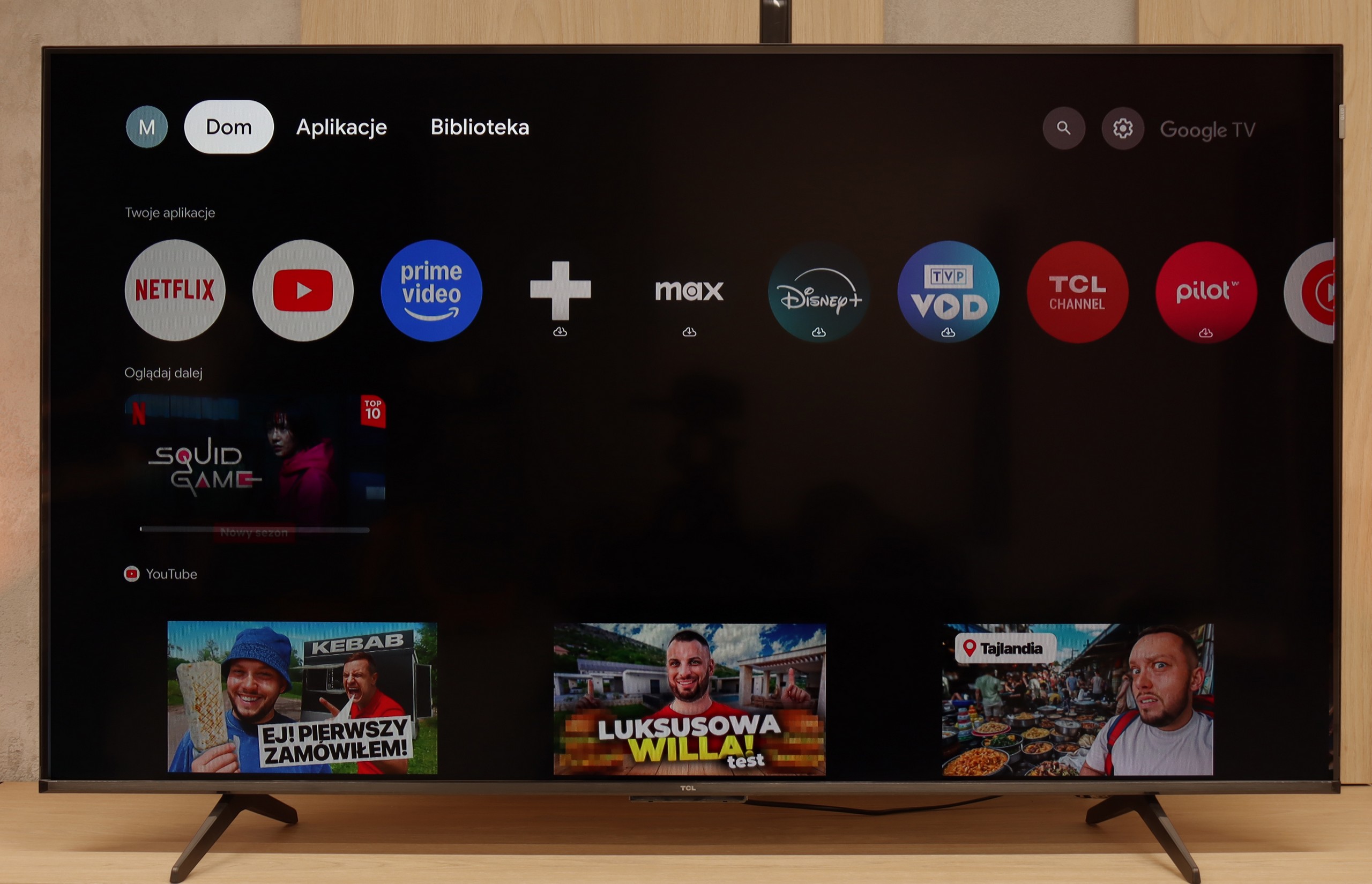
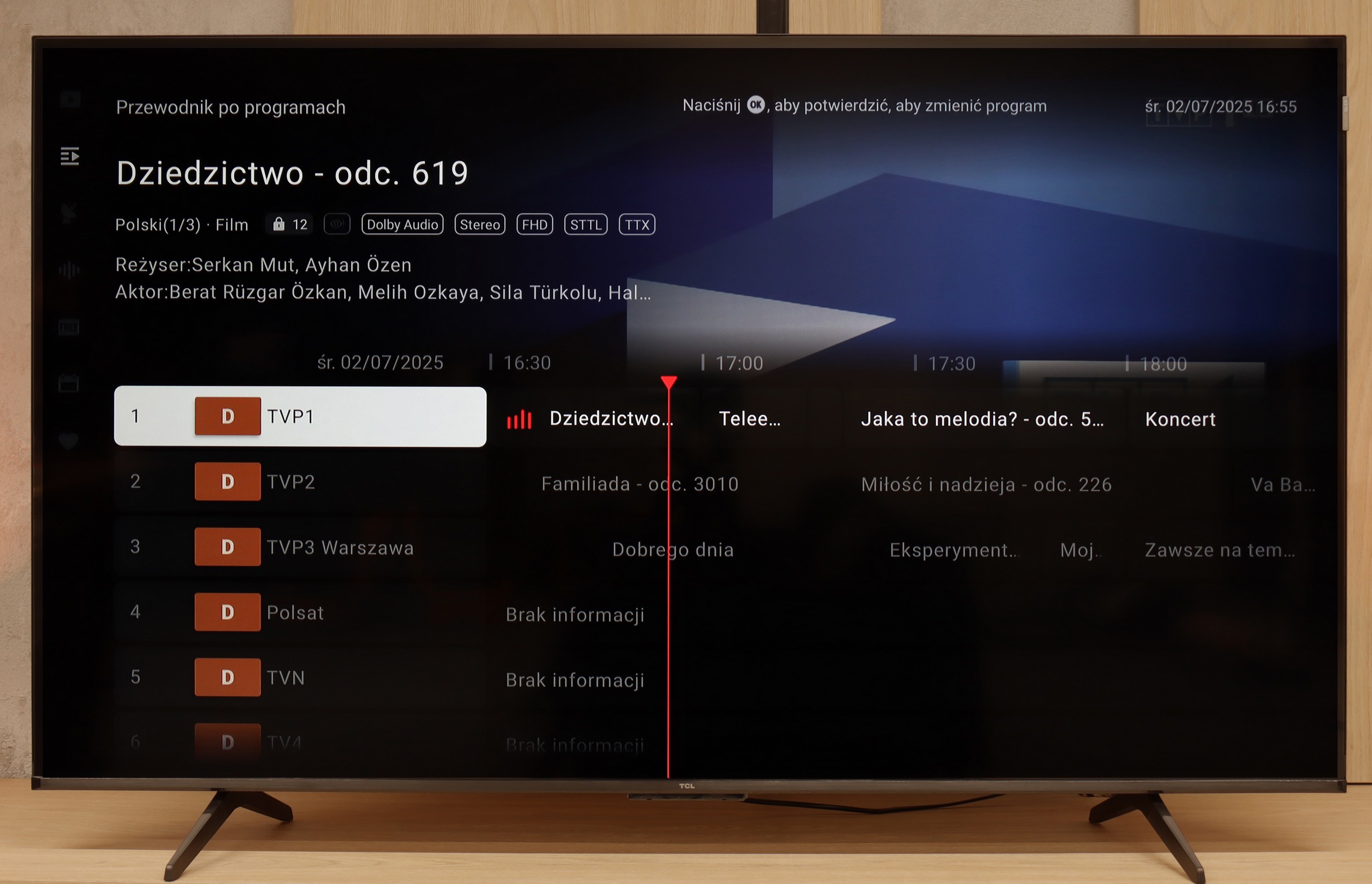
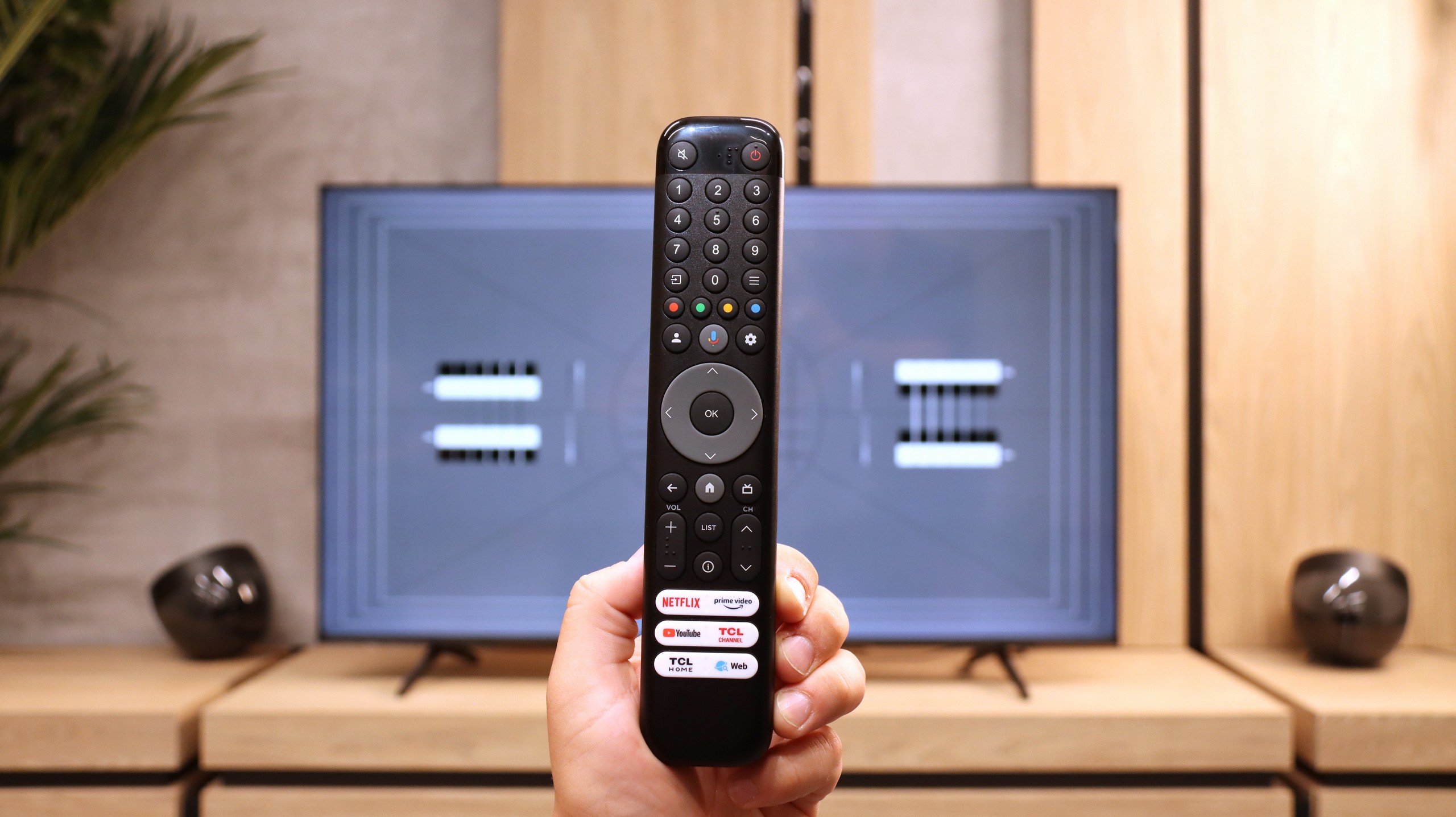
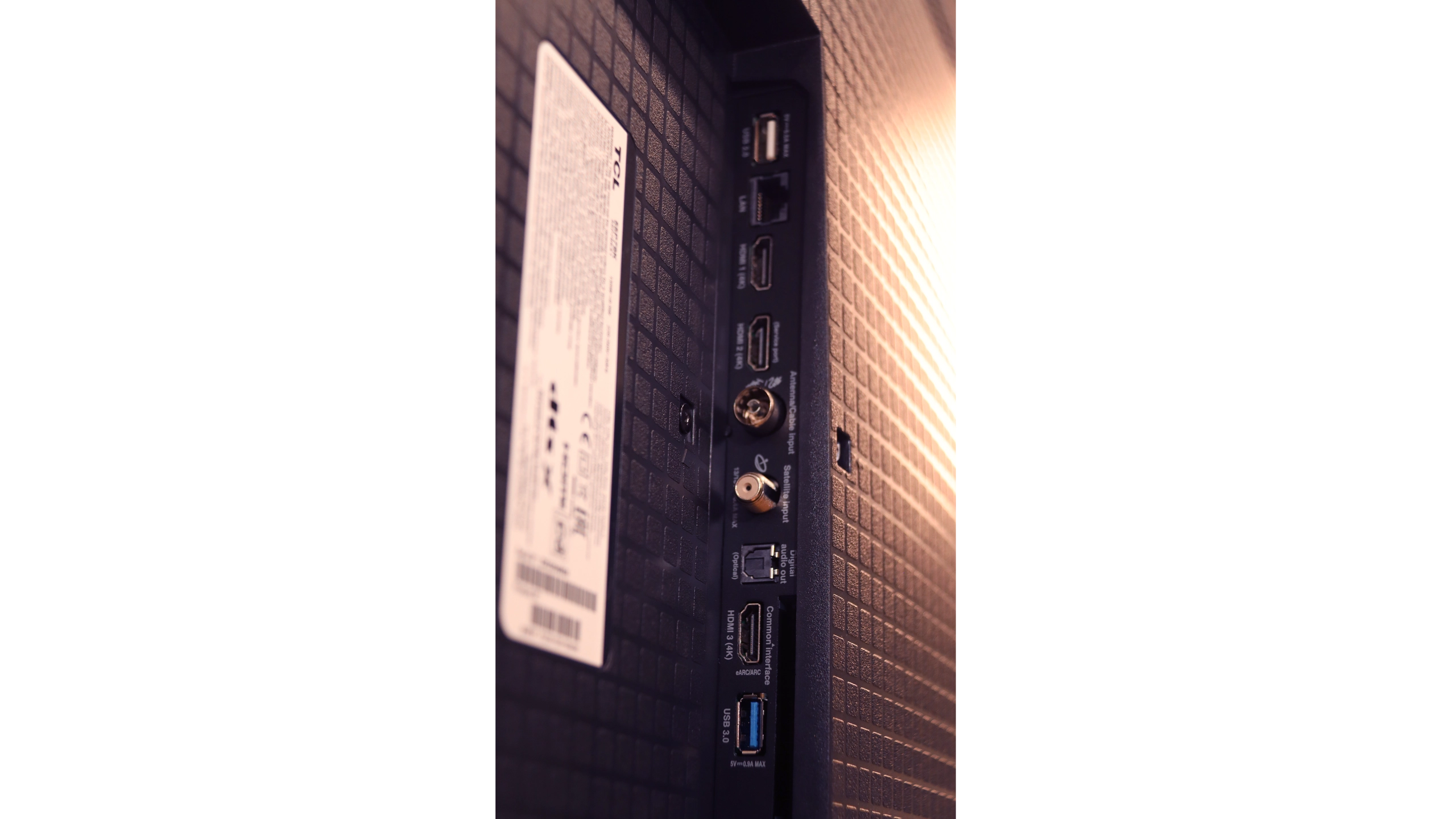
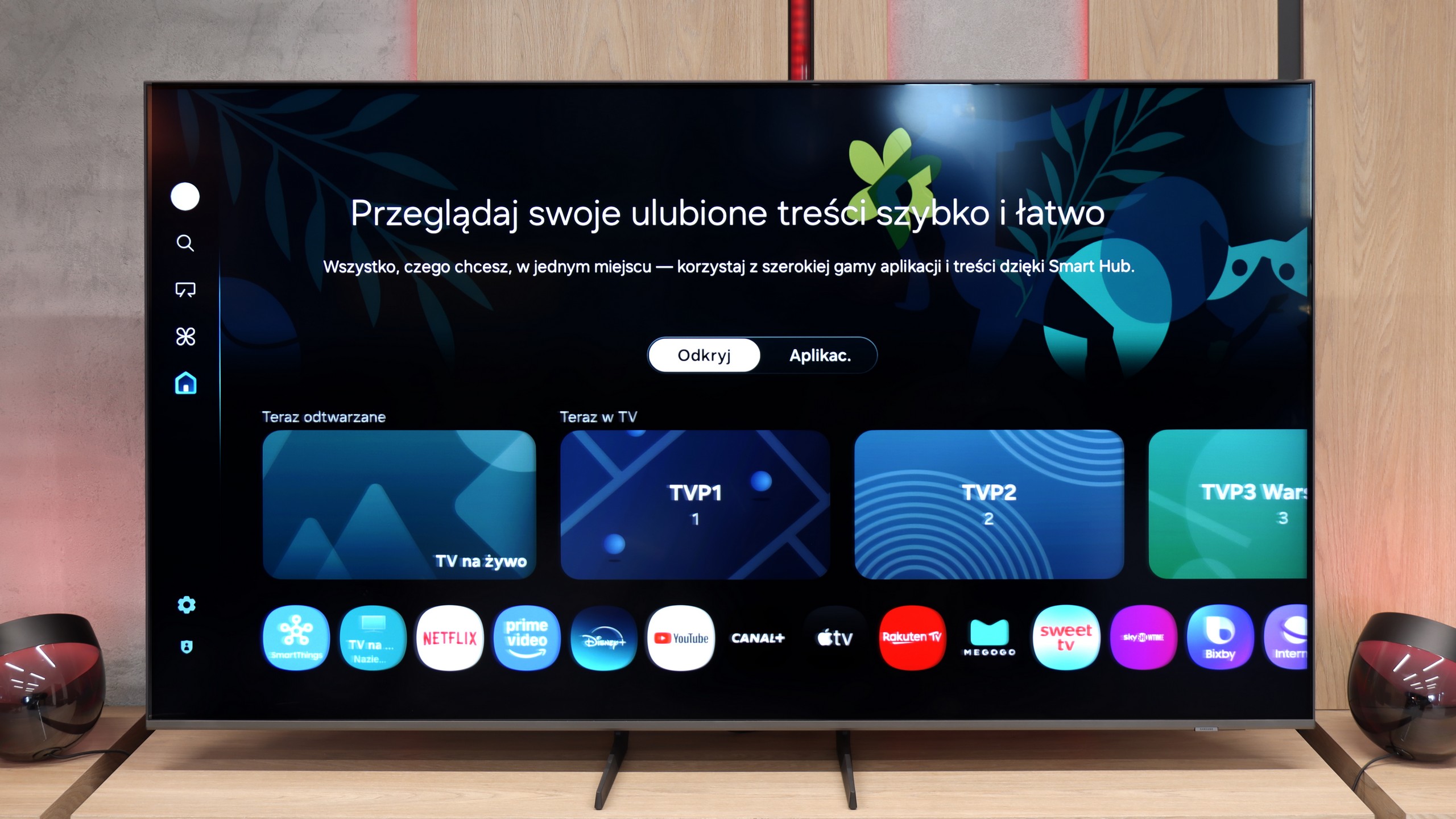
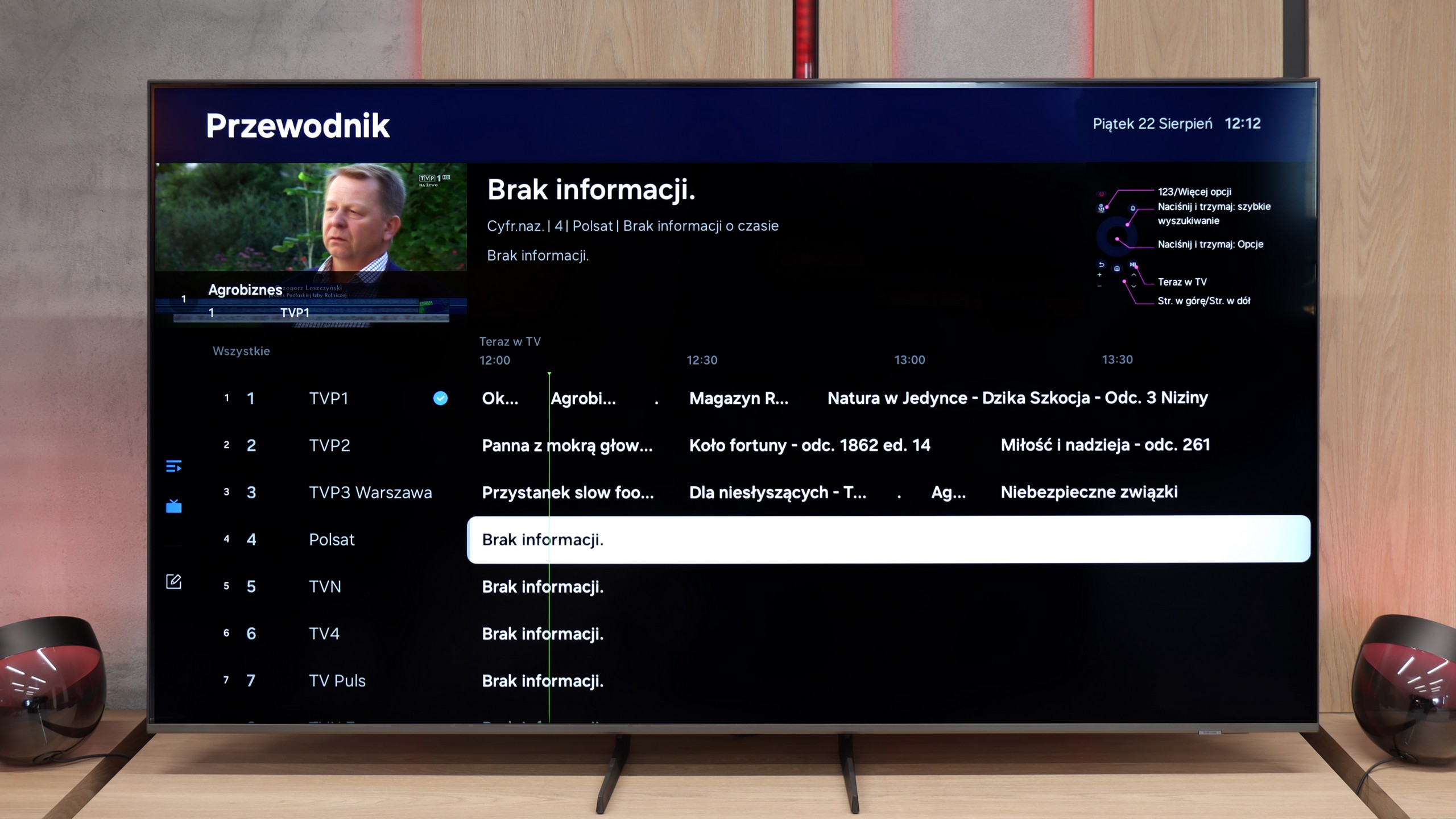
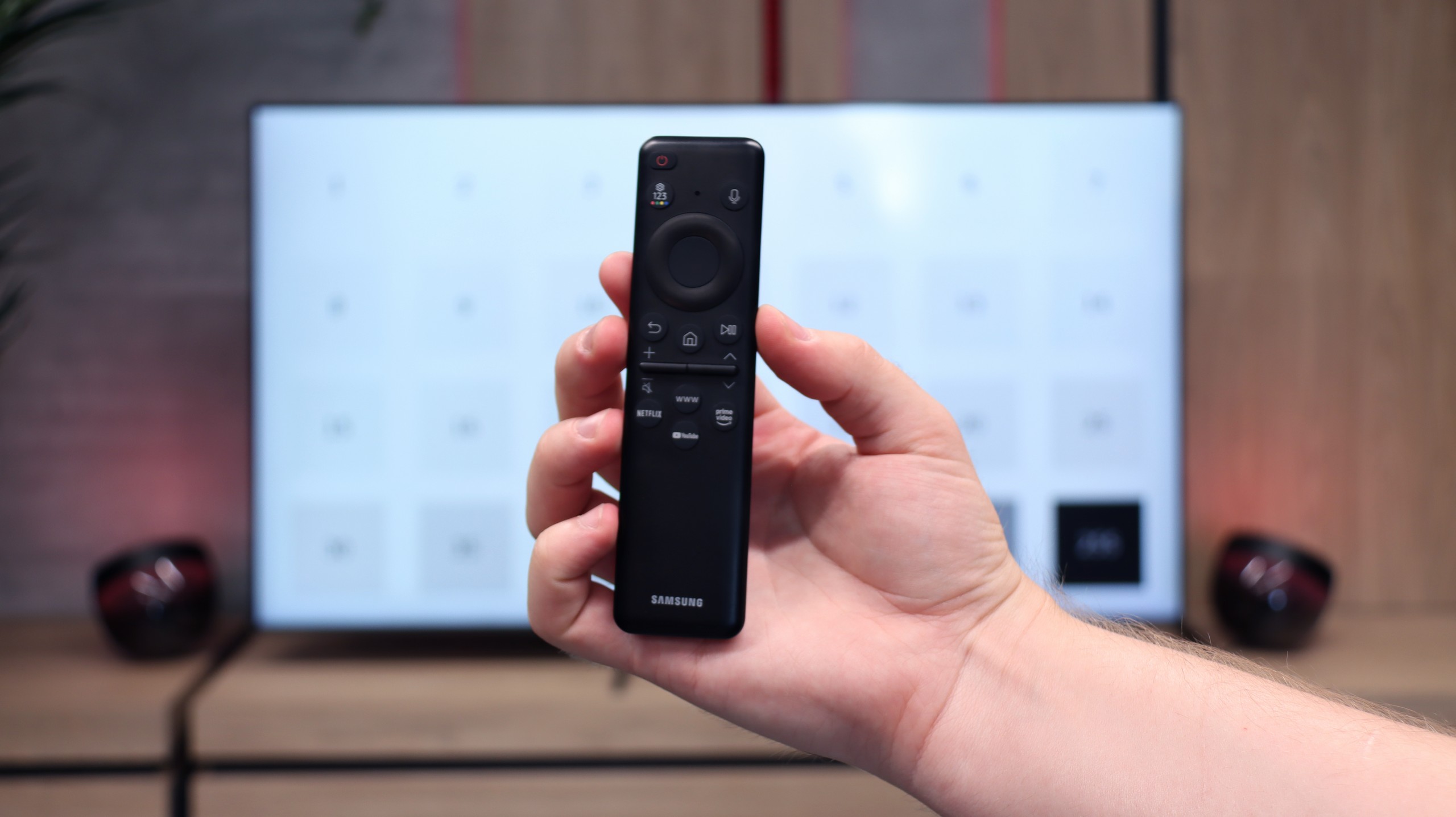
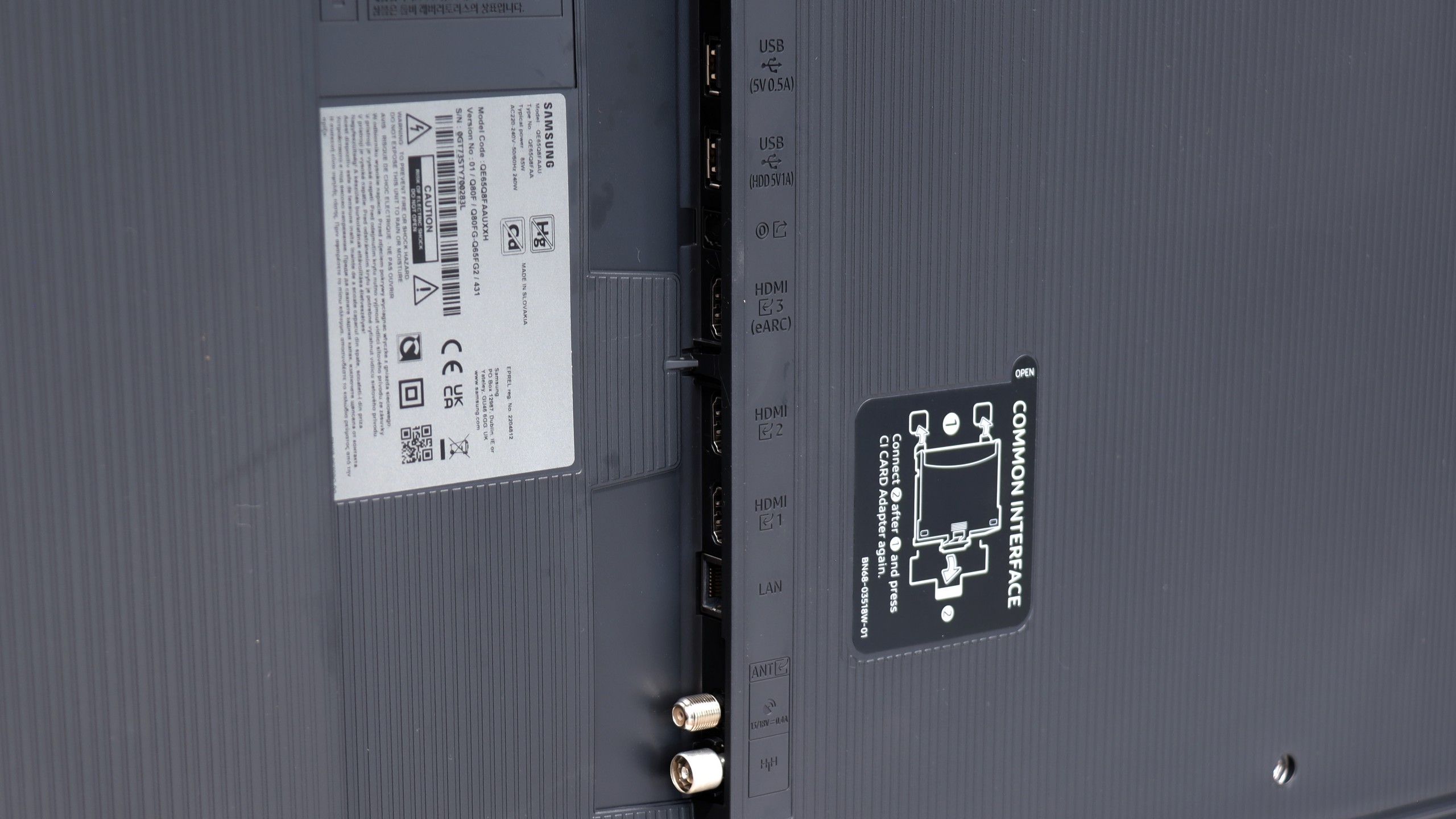
Smart Features – the Power of Google TV
The heart and operating brain of the TCL P7K / P79K is the Google TV system, which is a significant advantage in itself. This platform opens access to an almost limitless library of applications from the Play Store, ensuring that we won't miss any key streaming service. Integration with other devices is exemplary – Apple users will appreciate the seamless collaboration thanks to AirPlay, and Windows and Android users can easily utilise screen mirroring features. One should also highlight Google Assistant, which performs exceptionally well with voice search in Polish, remaining one of the most effective and convenient solutions of its kind on the market. The system’s performance on the tested model can be described as "above average." The interface is mostly smooth, but during tests, there were occasional slowdowns and even sporadic "freezes" that required a moment of patience. Minor glitches can also be seen in the translation of some system messages, which can be clumsy – however, these are minor oversights on TCL's part that do not affect overall functionality.
Classic Features
In the era of smart systems, traditional television functions often take a back seat, and this is also the case here. A significant advantage is the inclusion of a classic remote control with a numeric keypad, which does not require precise aiming at the screen for communication, significantly enhancing user comfort. The presence of Bluetooth technology for connecting external devices, such as headphones or speakers, should also be regarded positively. However, this is essentially where the list of conveniences ends. It is evident that TCL has almost put everything on the Google TV card, treating classic functions as an absolute minimum. Therefore, we will not find options to record programmes from built-in tuners to a USB drive or the once-popular PiP (Picture-in-Picture) feature. This is, therefore, a basic package that simply works but does not offer anything beyond what is essential.
SmartTV Features: Tizen
In terms of smart features, the Q8F does not lag behind what Samsung has accustomed us to. On board, we have the Tizen system – fast, intuitive, and well integrated with other devices. AirPlay, screen mirroring, and simple voice commands work seamlessly, so the basics are checked off perfectly. Additionally, there is SmartThings, an app that turns the television into the centre of a home ecosystem. You can connect a washing machine, vacuum cleaner, light bulbs, or speakers and control everything from one place, including the television. There is also no shortage of apps within Tizen for watching films or series – Netflix, YouTube, Disney+, and Prime Video are readily available. However, it is worth noting that Tizen is a closed system, so anyone hoping to install less popular programmes may be disappointed.
Traditional Television
Traditional television fares worse. The Q8F will simply act as a screen here – it will display the image, but we won't find additional functions such as USB recording or PiP mode. The remote is small and strongly minimalist. It looks modern and can be charged with solar batteries on the back cover or via USB-C, but it must be recognized that it may not appeal to everyone – particularly older users may miss traditional buttons. However, it must be noted honestly that Samsung has been consistently steering its televisions (as has the competition, which copies some of their ideas) towards the smart home, rather than towards equipment "for grandparents." Considering the tremendous popularity of the brand, it can be assumed that most users, even the older ones, have already got used to the fact that the era of remotes with a full array of rubber buttons is slowly coming to an end.
Playing files from USB
7.2/10
9.1/10
Supported photo formats:
Maximum photo resolution:
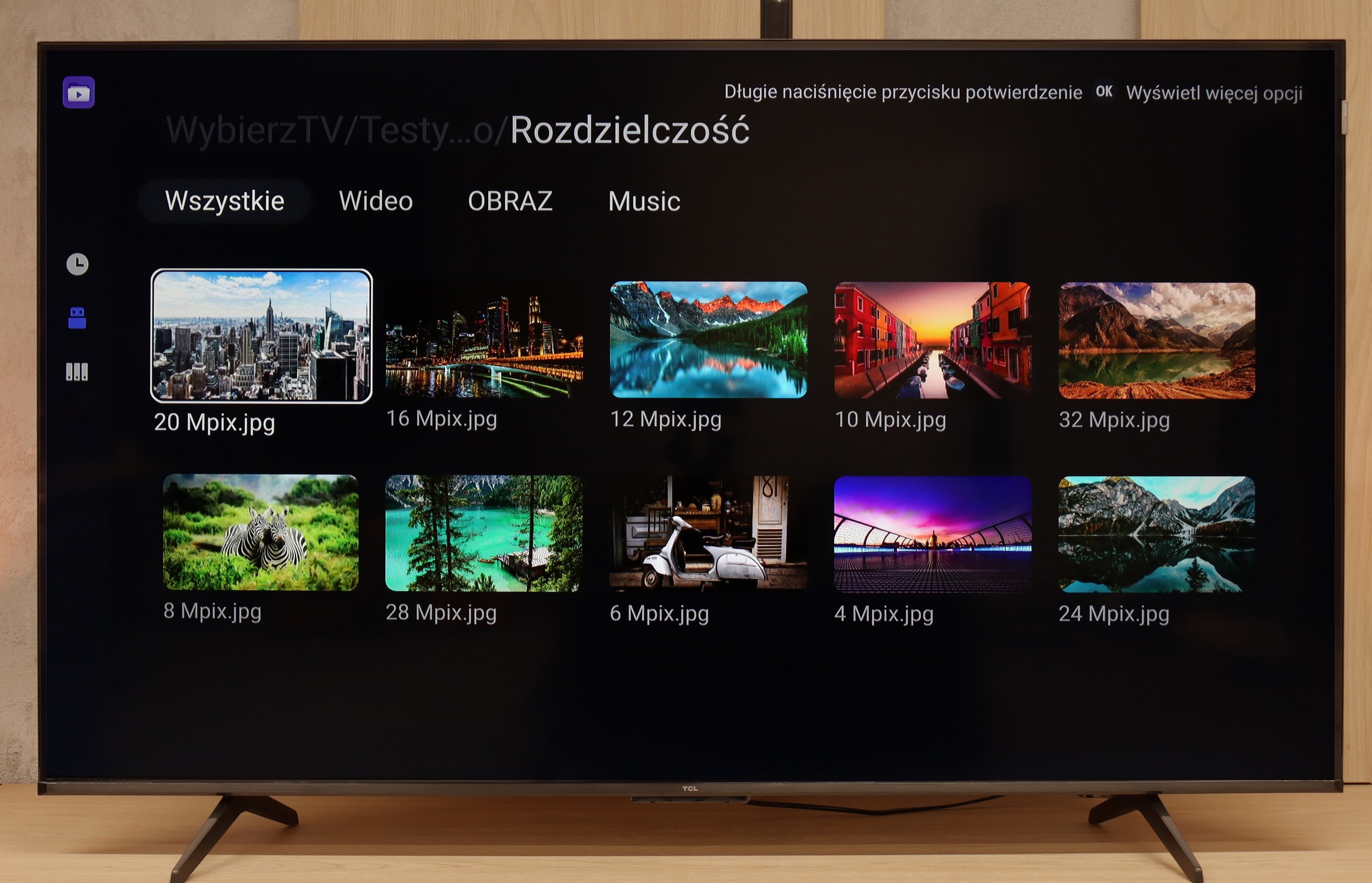
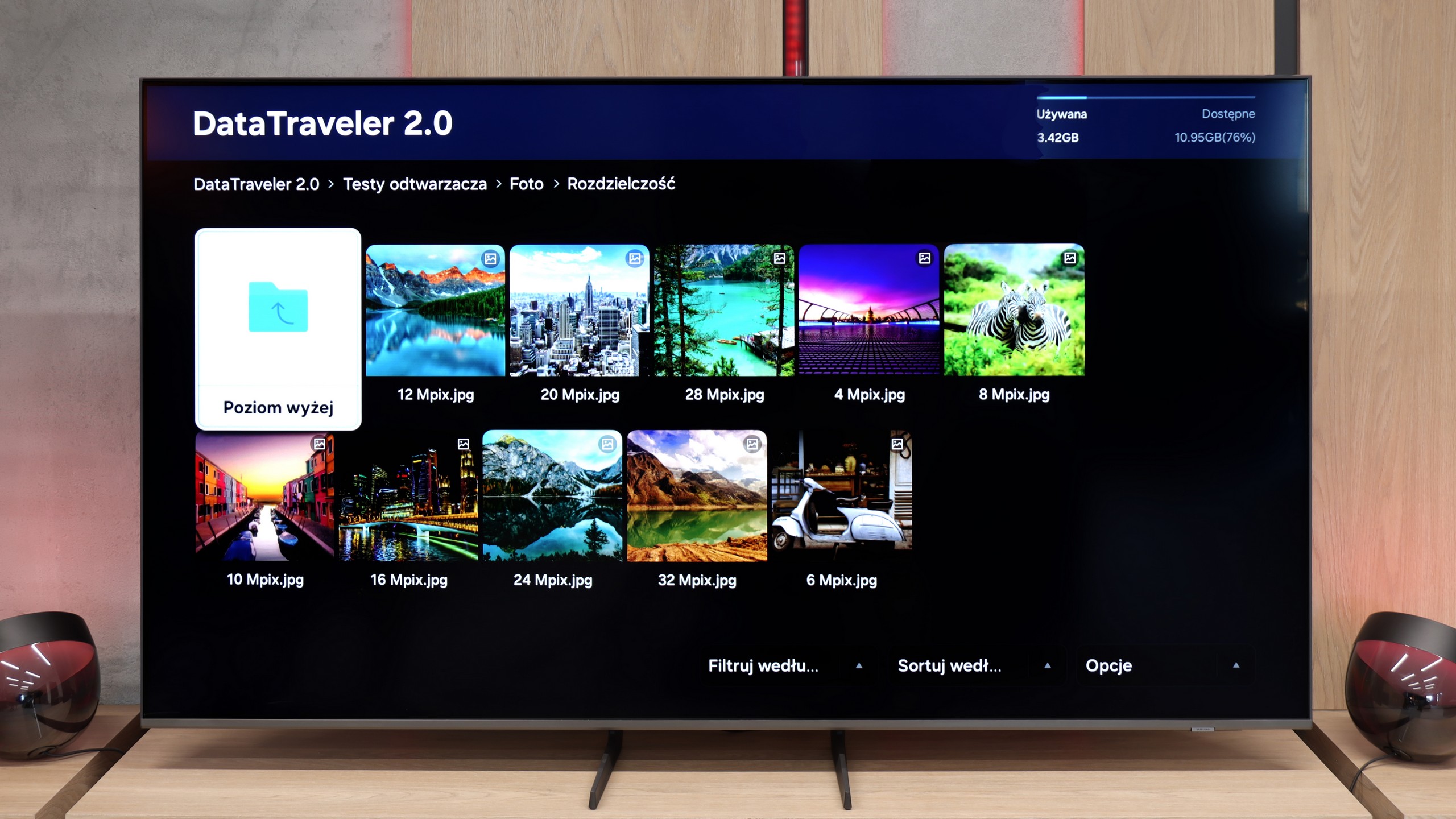
The built-in media player in the P7k/P79k model is quite a puzzling case, placing us in a rather unusual situation. On one hand, its engine manages to decode most popular video formats, which is obviously good news. On the other hand, we encountered a surprising and frustrating flaw – the default app has a fundamental issue with correctly displaying Polish diacritical characters in subtitle files. Instead of letters like "ą," "ę," or "ż," empty squares or random, unreadable symbols appeared on the screen. Fortunately, thanks to the flexibility of the Google TV system, this issue can be easily circumvented. Installing an alternative, advanced player, such as the tried and tested VLC or KODI, fully resolves this inconvenience. The situation is particularly odd since we didn't encounter such a flaw in other TCL models we tested previously. We are therefore dealing with an obvious software oversight, which we hope will be fixed in a future update.
Samsung Q8F handles playing files from USB quite efficiently. It supports virtually all popular video formats as well as photos, so you can easily load a holiday video or a family album. There are occasional exceptions with less common photo formats, but the most important JPEG works perfectly, which will be crucial for the majority of users. It's just a pity that Tizen does not allow for the installation of alternative players, such as VLC. Even then, less popular formats would not pose any problem.
Apps
9.6/10
8.7/10














































Sound
6.2/10
6/10
- Maximum volume-84dB
- Dolby Digital Plus 7.1
- Dolby True HD 7.1
- Dolby Atmos in Dolby Digital Plus (JOC)
- Dolby Atmos in Dolby True HD
- DTS:X in DTS-HD MA
- DTS-HD Master Audio
In terms of the built-in audio system, the TCL P7k/P79k presents a level that can be described as functional and correct, but lacking audiophile ambitions. The speakers play quite loudly, and the dialogues in films and television programmes are delivered clearly and without distortion, which is crucial in everyday use. However, the soundstage definitely lacks a foundation in the form of low tones. This is a direct consequence of the absence of a dedicated subwoofer – an element that in the higher P8K series, represented by a large Onkyo subwoofer at the back of the cabinet, constituted the strength of its sound. Here, that element is simply missing, which makes the sound seem flatter and devoid of the depth that creates a cinematic atmosphere. We also noticed a peculiar aspect in the software – when attempting to set the maximum volume, the television automatically reduces it. It is difficult to determine definitively whether this is a form of protection against distortion or a minor software glitch; nonetheless, it’s a shame because the power reserves seem to be slightly greater.
The sound on the Q8F can be described as acceptable. A slightly defined bass can be heard, but it is really minimal – the slim design of the television simply does not provide space for the pair of 2 × 10 W speakers to spread their wings. This is a typical scenario for most televisions: if someone cares about truly cinematic experiences, it is worth considering a soundbar. Samsung has a really wide range in this category across various budgets, so it's easy to find something suitable. The television itself will work for watching classic TV and series from time to time, but for greater sound excitement, one should not expect much.
Acoustic Measurements
No acoustic data
84dBC (Max)
75dBC
